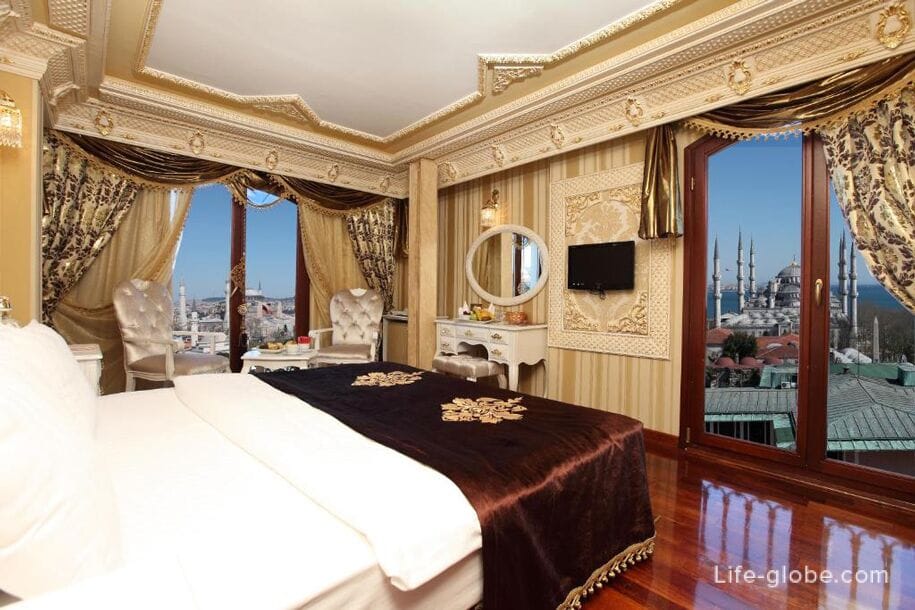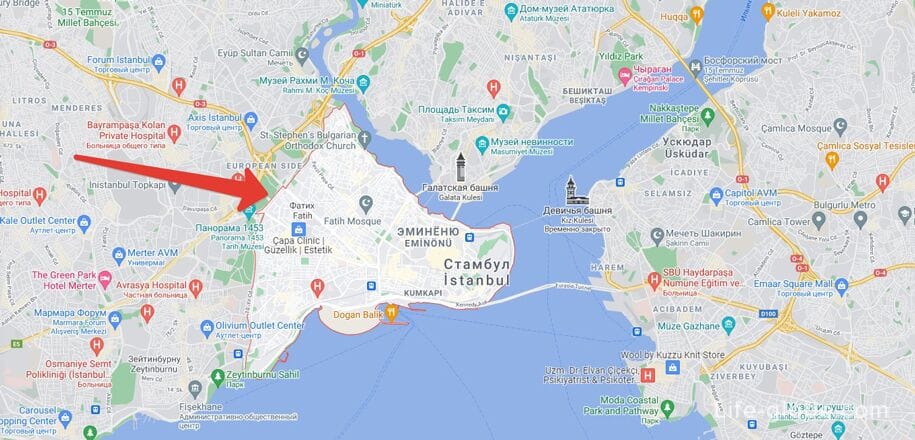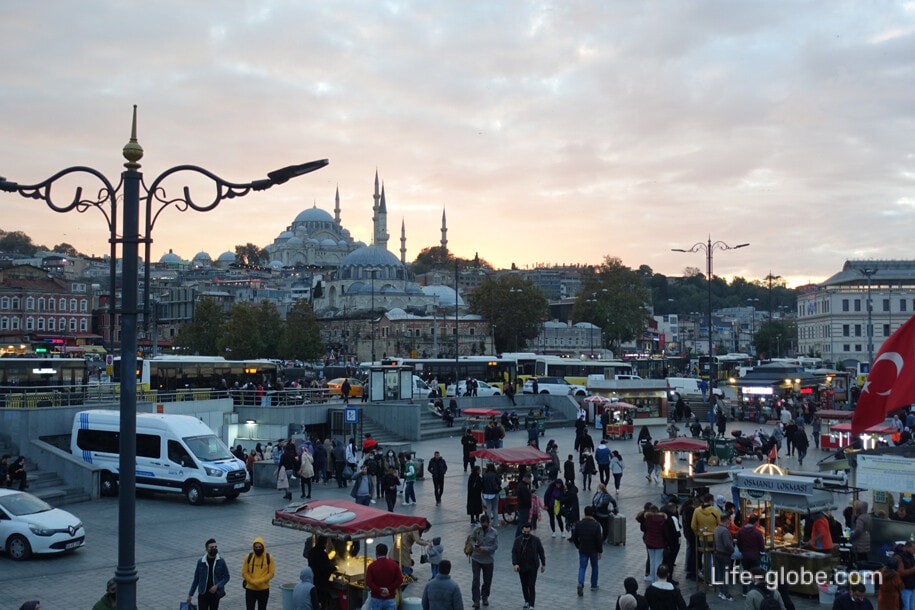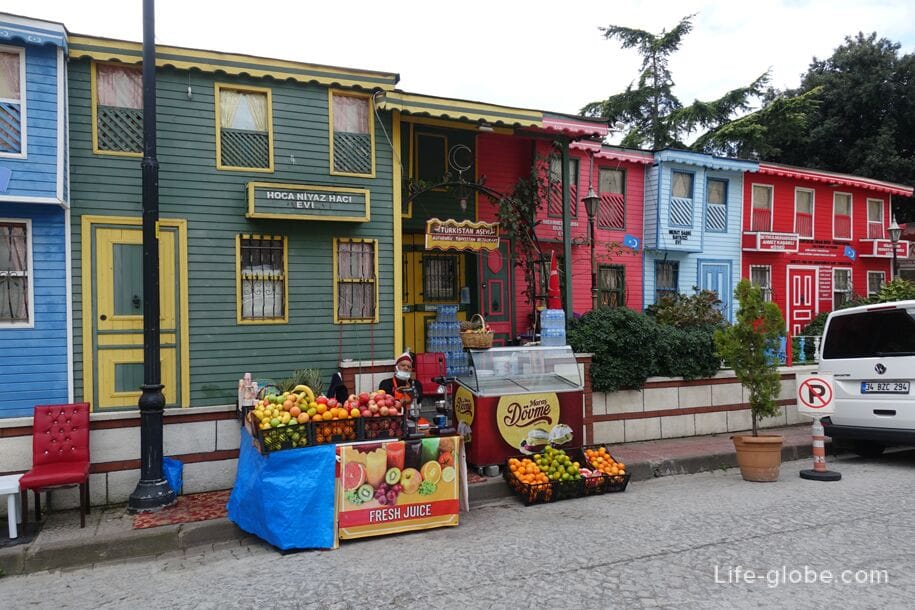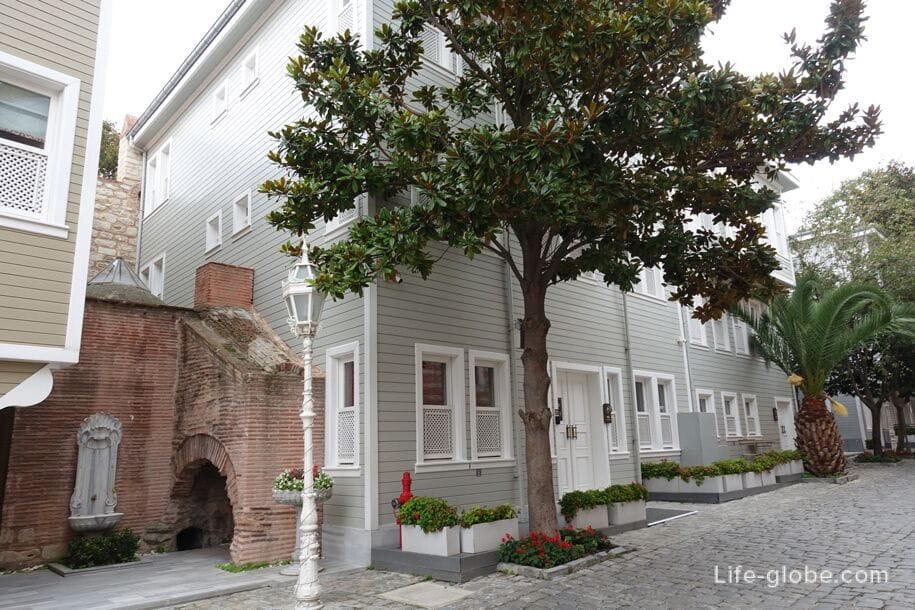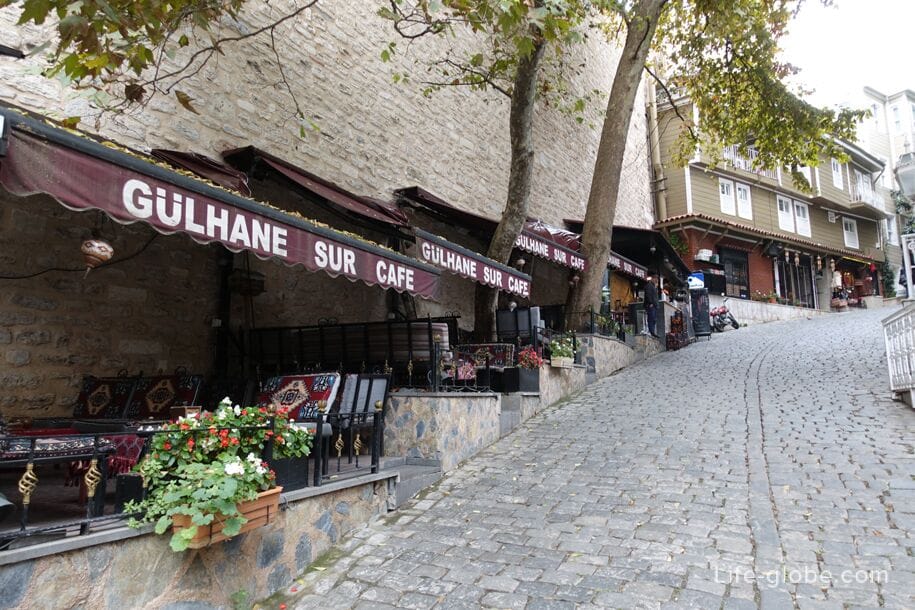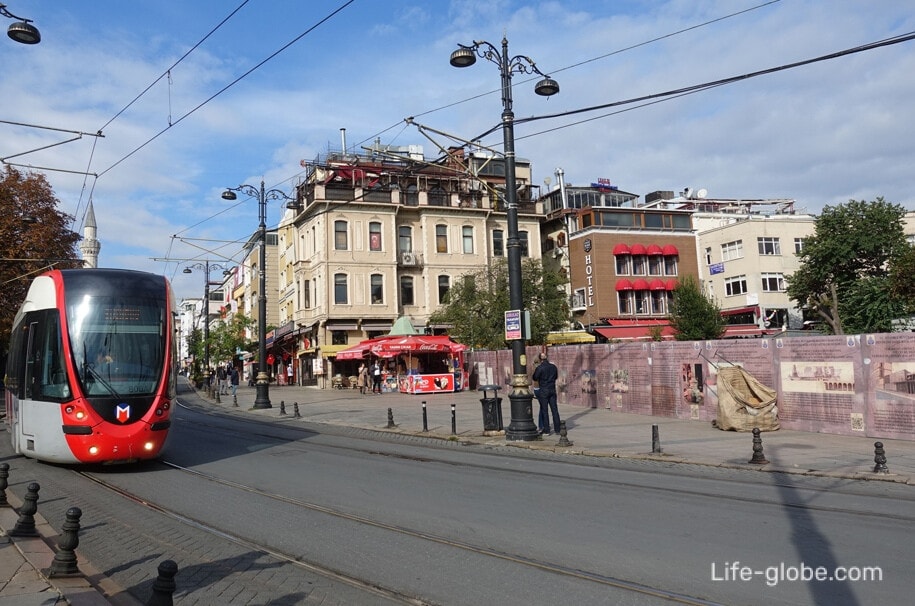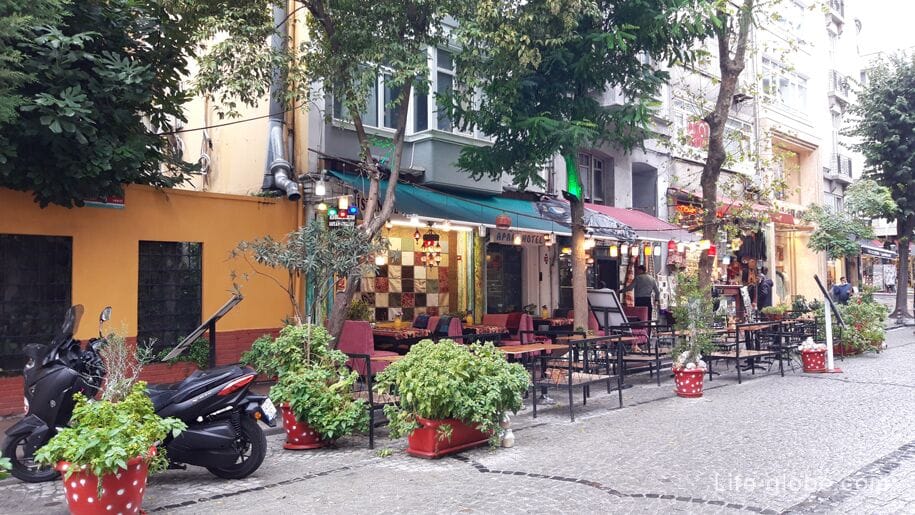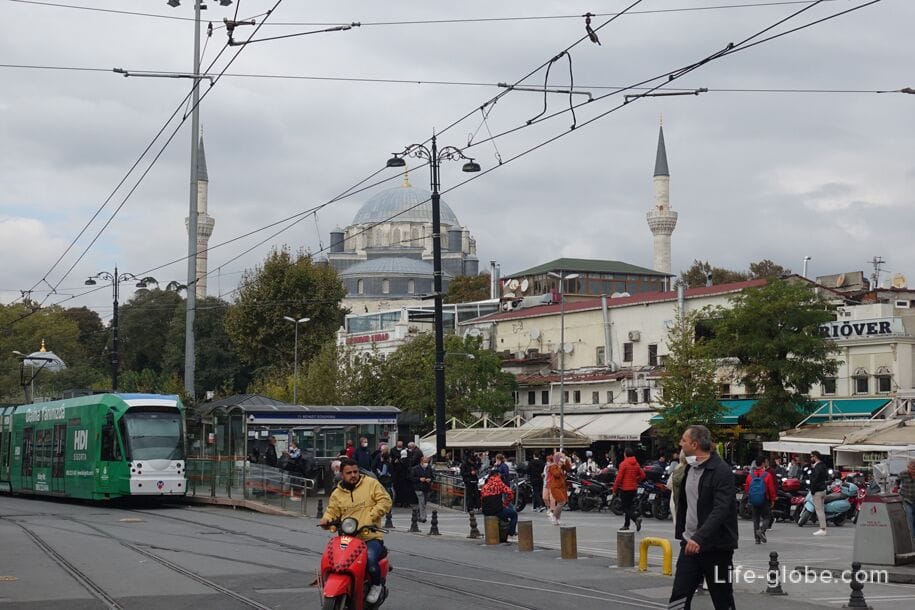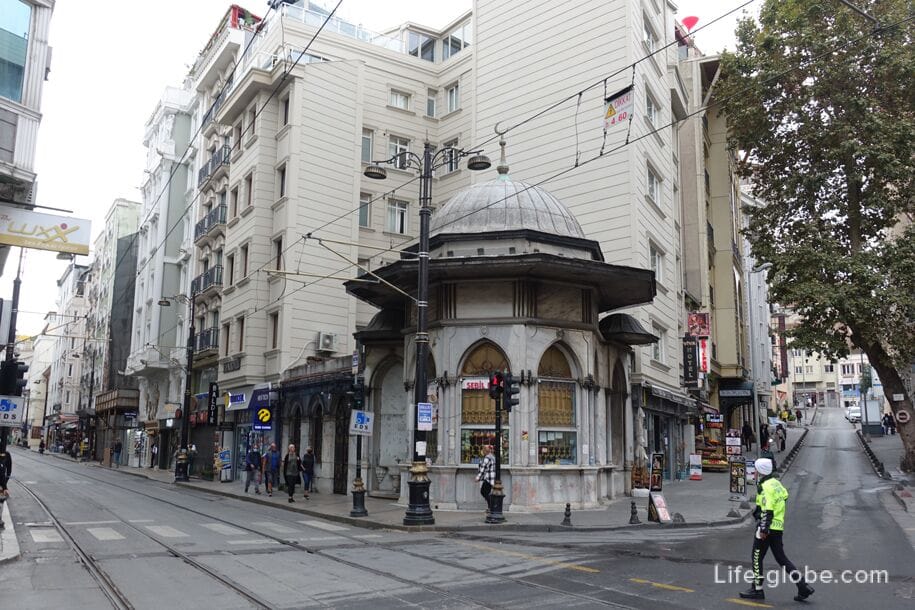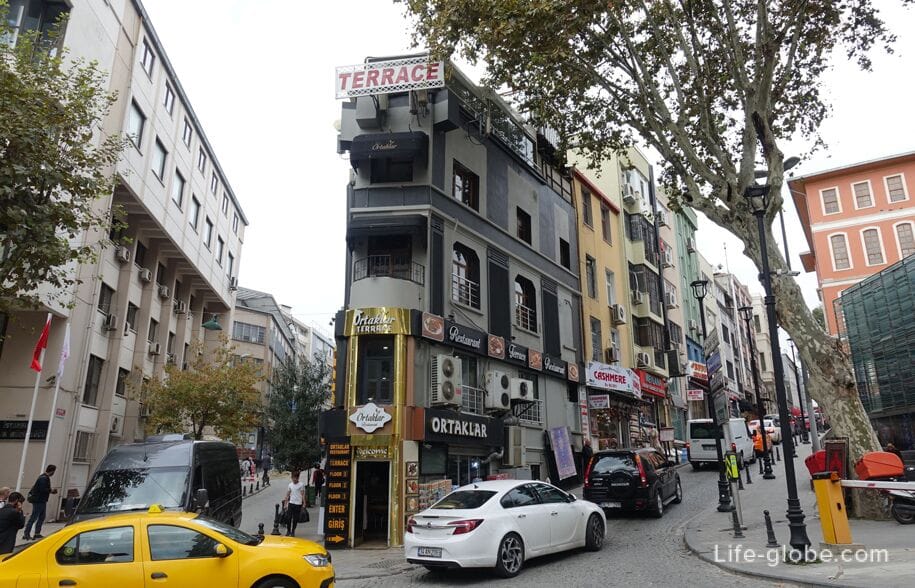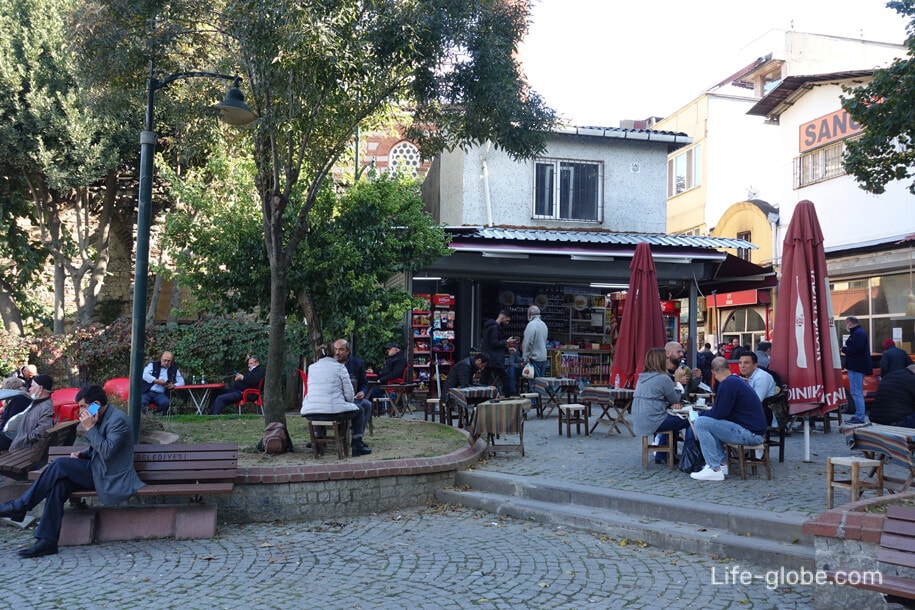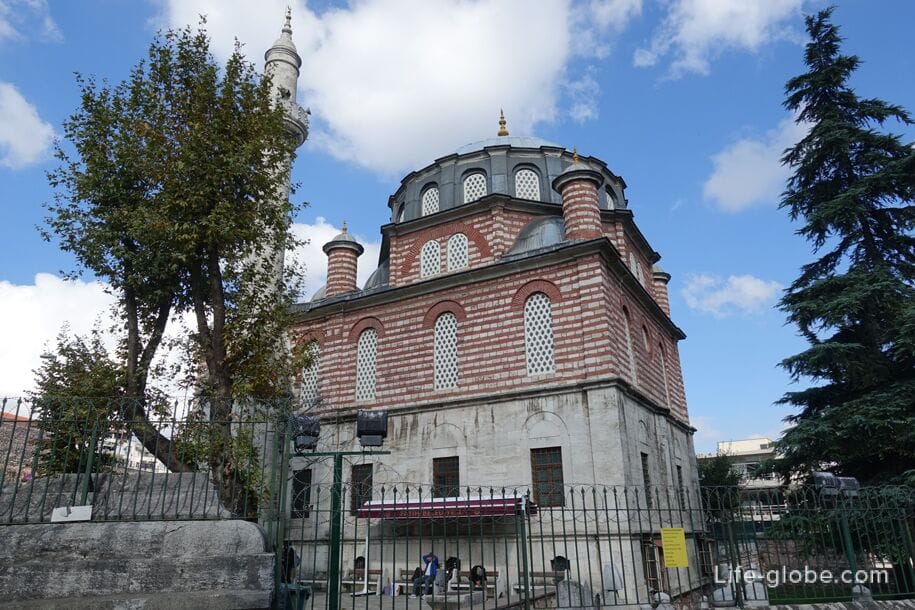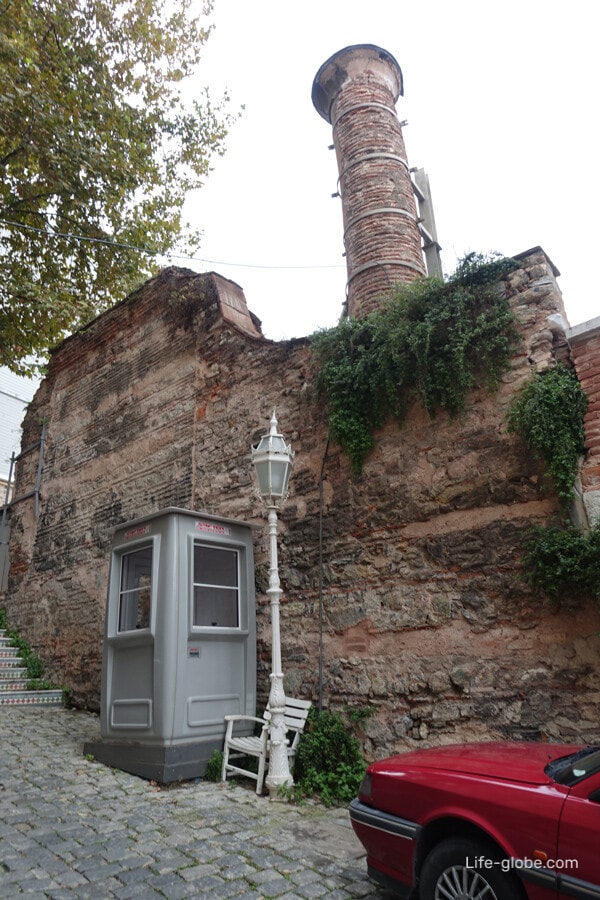
Fatih is a large district of Istanbul, which is the most visited and famous in the city, because it is located on the site of the old Constantinople (now the city of Istanbul), once enclosed inside the former city walls.
The Fatih district is home to most of the main historical and cultural attractions of Istanbul, which are comprehensively included in the UNESCO World Heritage List.
Balat is a traditional Jewish quarter, which is one of the most striking parts of the Fatih district.
Fatih district is the old historical center of Istanbul, from which the formation of the city began.
Fatih is also a peninsula located in the European part of Istanbul and washed by all the main reservoirs of the city: the Golden Horn Bay, the Bosphorus Strait and the Sea of Marmara.
View of the Fatih district from the Golden Horn

View of the Fatih district from a two-level pedestrian transport Galata Bridge (Galata Köprüsü) with restaurants and observation decks on the lower tier, spanning the Golden Horn and connecting the Fatih district with the Beyoğlu district.
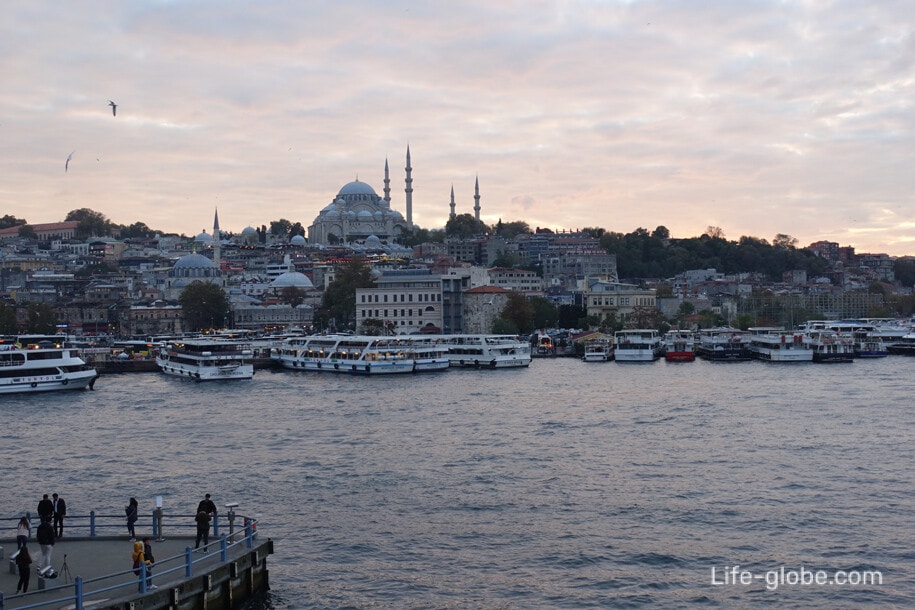
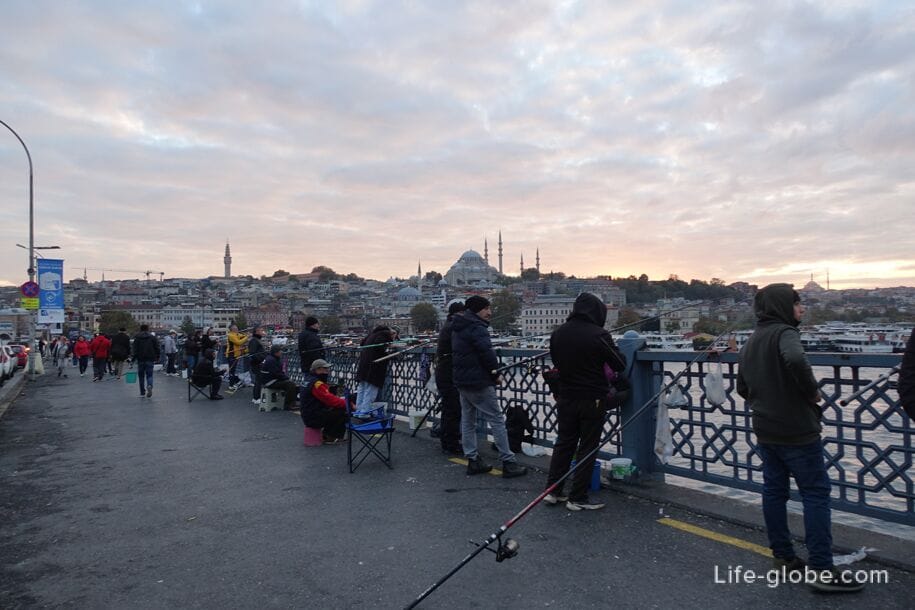
The name of the district "Fatih" comes from the name of the Ottoman Sultan Fatih Mehmed II the Conqueror.
After the conquest of Constantinople, Sultan Mehmed II in the area, in 1463-1470, on the site of the ruins of the Byzantine Church of the Holy Apostles, built the first mosque in the city, which was named Fatih (Fatih camii), in the mausoleum at which the sultan was subsequently buried.
The Fatih Mosque still exists today and anyone can visit it.
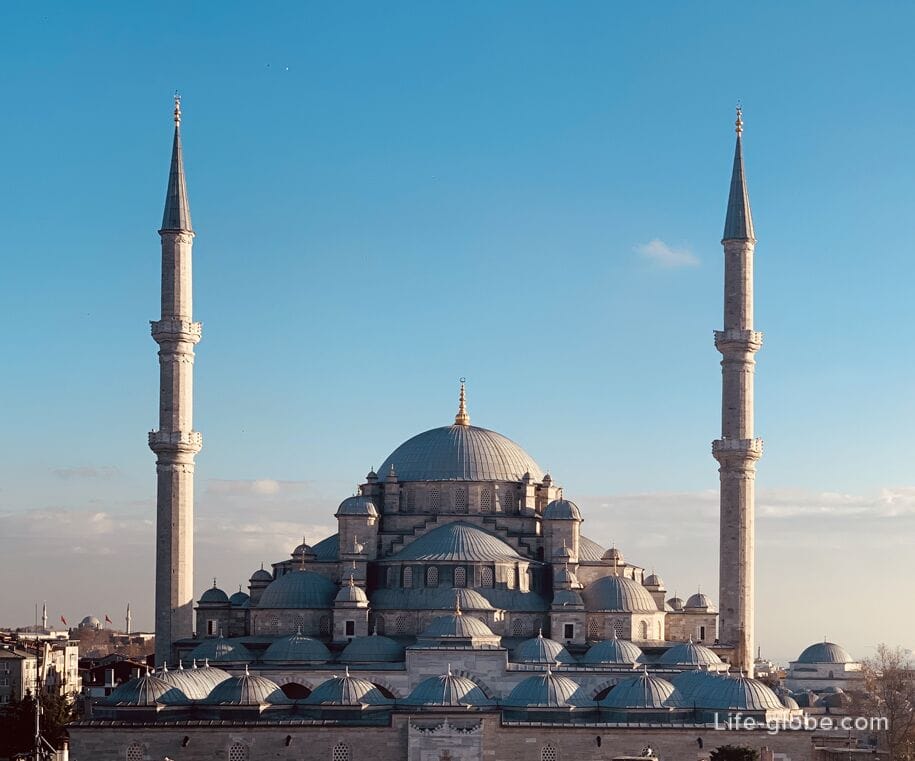

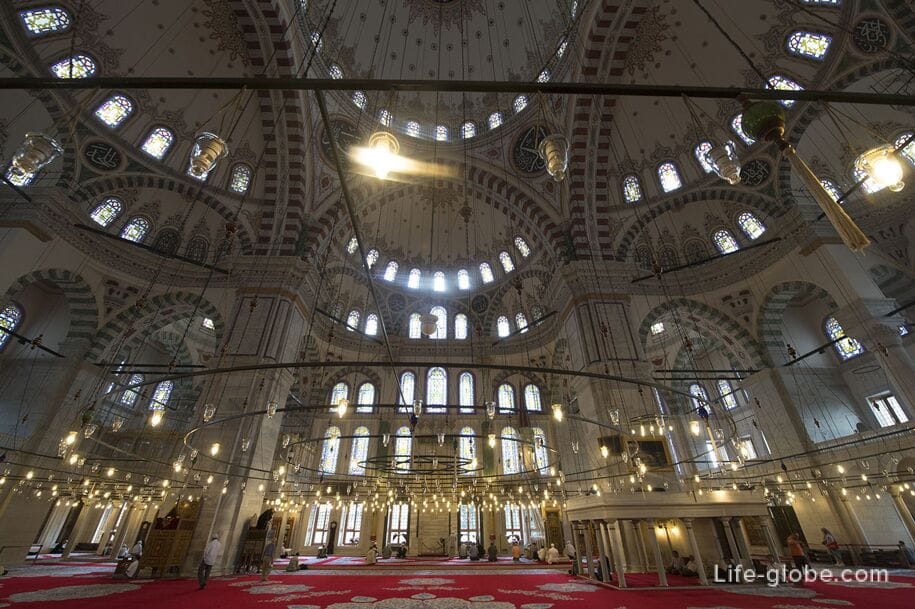
At present, small remnants of former defensive structures (walls and gates) have been preserved in the Fatih area from the Byzantine period of Constantinople, as well as the remains of forums and palaces.
For example,
- the restored section of the walls of Theodosius (teichos Theodosiakon), erected during the reign of Emperor Theodosius II (402-450), after whom they were named;
- Charisius Gate with a part of the wall (Charisius Kapısı), named after the nearby Early Byzantine monastery. It was the second most important gate of the city, after the Golden Gate. In Turkish, the gates are known as Edirnekapi and Adrianople Gate (Edirnekapı, Adrianople Gate), and it was here that Mehmed II made his triumphal entry into the conquered city;
- Belgrade Gate with a part of the wall (Belgrad Kapı), formerly known as the Xylokercos Gate or Xerokercos;
- Kabali Gate (Cibali Kapısı), which is not as outwardly remarkable as other preserved gates of the city;
- near the waters of the Sea of Marmara (at the Topkapi Palace) there are former Byzantine walls (Bizans surları). There is also a Marble Tower (Mermer Kule) near the Marmara Sea;
- the remains of the forums of Theodosius (Theodosius Forumu) and Arcadia (Forum Of Arcadius), the Antioch Palace (Antiochos Sarayı), the Palace of Lausus (Lausos Sarayı Kalıntıları), etc.
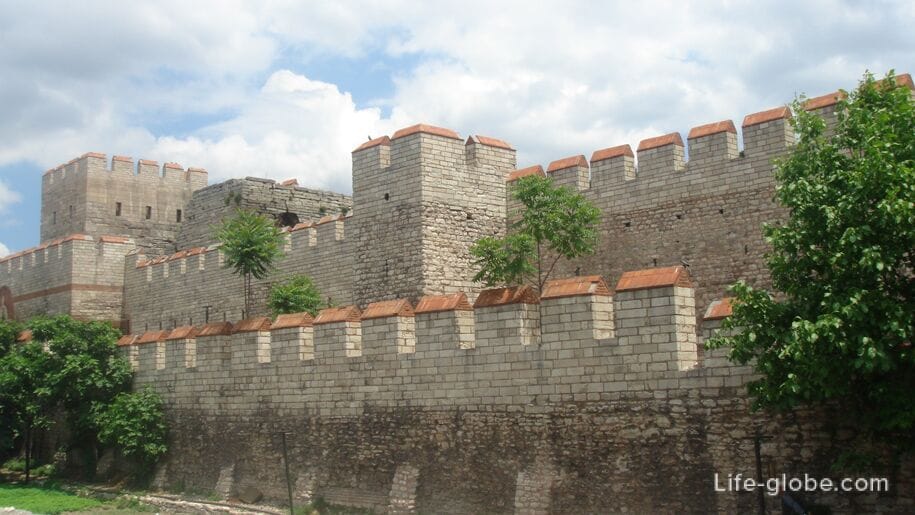



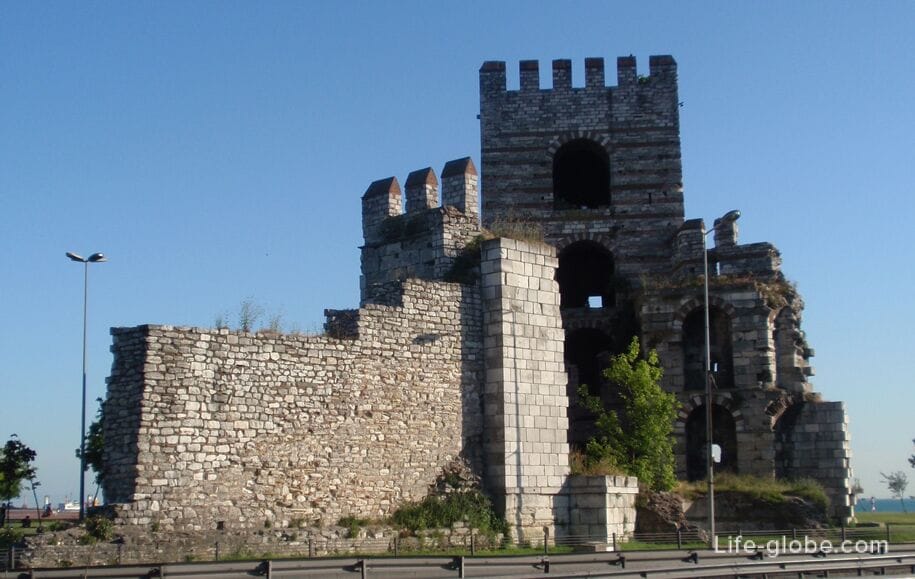
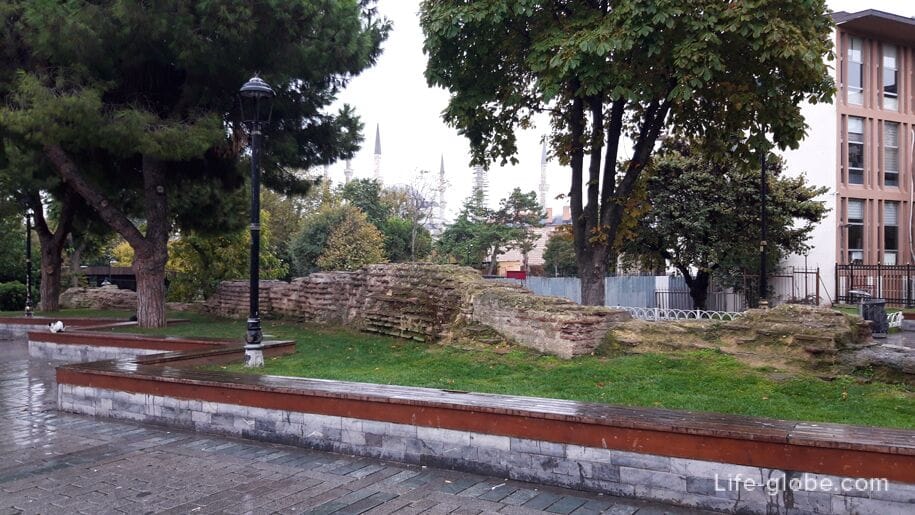
The current Fatih is full of hysterical objects and attractions, which makes it the most visited area of Istanbul, included in all city guides.
Also, the Fatih district is famous for its abundance of mosques, there are churches, theaters, libraries, museums, mausoleums of the sultans of the Ottoman Empire, cozy squares, colorful streets, lots of cafes and restaurants, including Turkish cuisine, shops and souvenir shops, currency exchangers, several historical bazaars (markets) and hammams.
There is a great choice of accommodation facilities in the area (hotels, apartments)
From the abundance of catering stands out the cafe-restaurant of Turkish cuisine "Palatium Cafe and Restaurant" with the remains of the Magnaura Palace (Magnaura Place), located at: Kutlugün Sok., No. 33, Sultanahmet, Fatih.
There is also a network of dessert cafes "Hafiz Mustafa 1864" with a variety and delicious baklava, lukum and other desserts. Learn more about Hafiz Mustafa dessert cafes with photos and website...
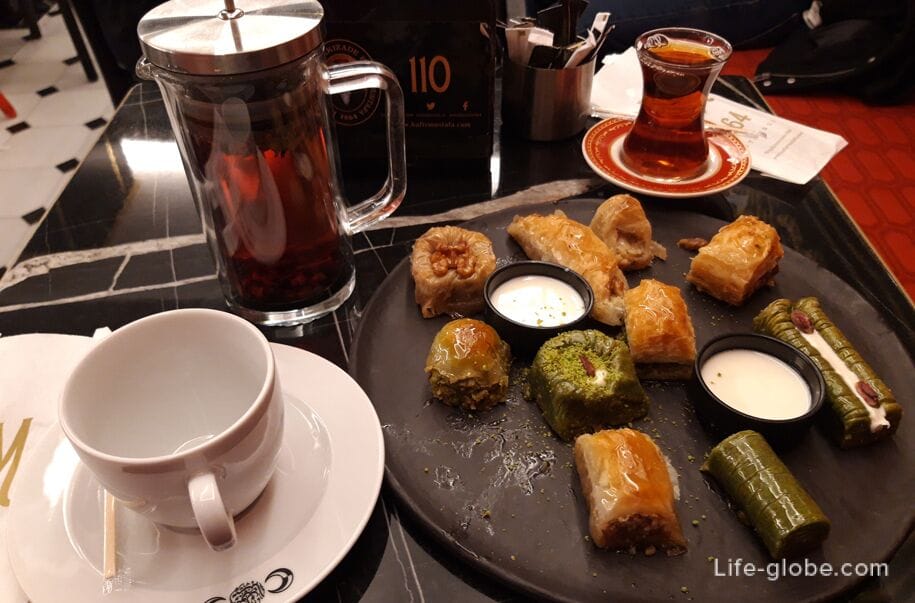

The main square of Fatih district is Sultanahmet Square.
This historic square is now the heart of Istanbul and is part of the small district of the same name, where the main sights of the city are concentrated, representing a magnificent ensemble.
The current Sultanahmet Square is located on the site of an ancient Hippodrome, the construction of which was started by the Roman emperor Septimius Severus in 203, when the city was still called Byzantium. Chariot races were held at the hippodrome. Therefore, Sultanahmet Square has a second name - "Hippodrome Square" (At Meydanı).

The Sultanahmet Square is notable for:
- The Obelisk of Constantine (Konstantin Dikilitaşı, Öme Dikilitaş) is a Byzantine obelisk built of stone blocks, most likely by order of Emperor Constantine the Great;
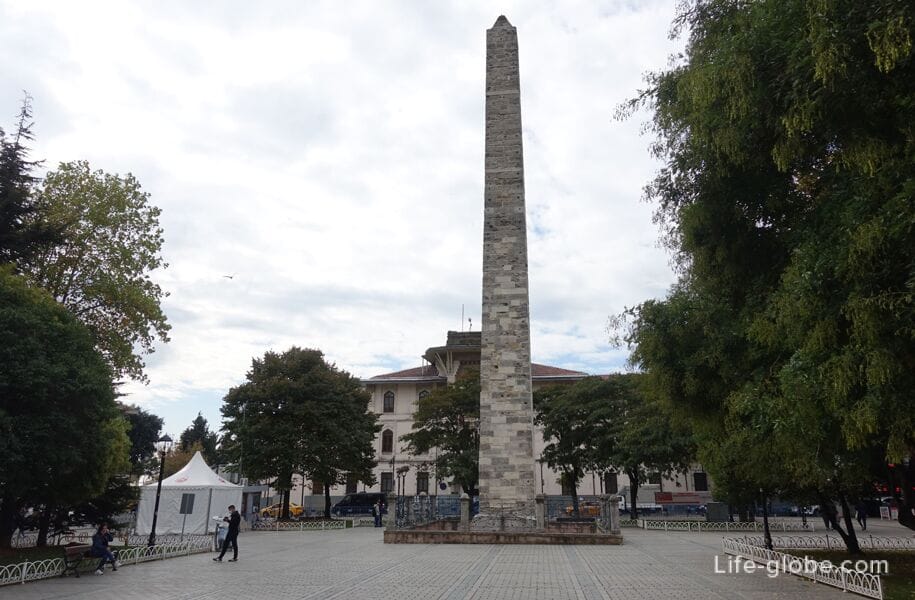
- Snake Column (Yılanlı Sütun) - remains of an ancient Greek column that had three snake heads, now lost;
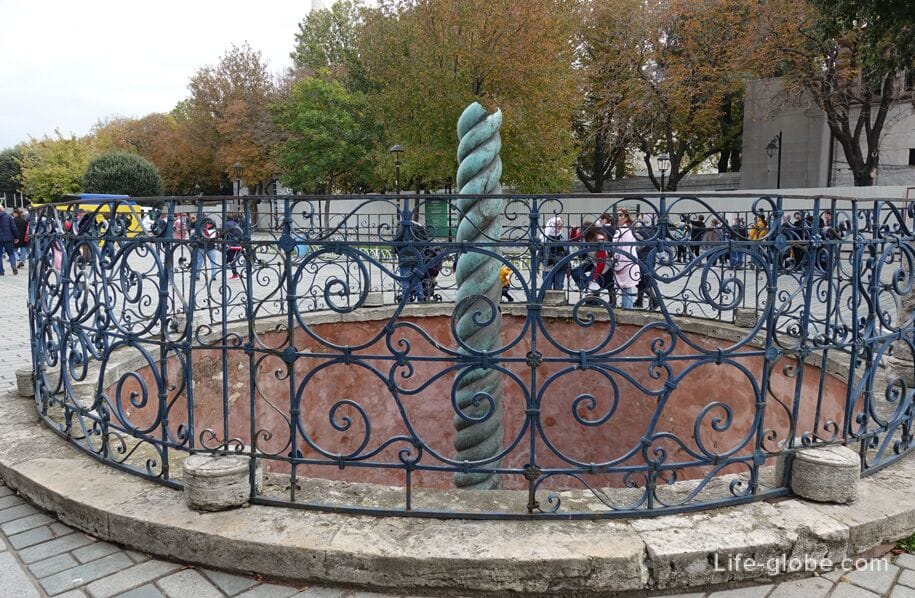
- Theodosius Obelisk or Egyptian Obelisk (Dikilitaş) is an ancient Egyptian obelisk of Pharaoh Thutmose III, brought from Luxor (Egypt) in 390 by order of Emperor Theodosius I and installed at the Hippodrome on a specially made marble pedestal;

- German fountain (Alman Çeşmesi) in neo-Byzantine style, created in Germany in 1898 and presented by the German Kaiser Wilhelm II, who visited Istanbul;

- Ibrahim Pasha Palace (Ibrahim Paşa Sarayı) is a monument of Ottoman architecture of the 16th century and the former residence of the Grand Vizier of the Ottoman Empire Pargal Ibrahim Pasha. Today it is a museum of Turkish and Islamic art (Türk ve Islam Eserleri Müzesi);
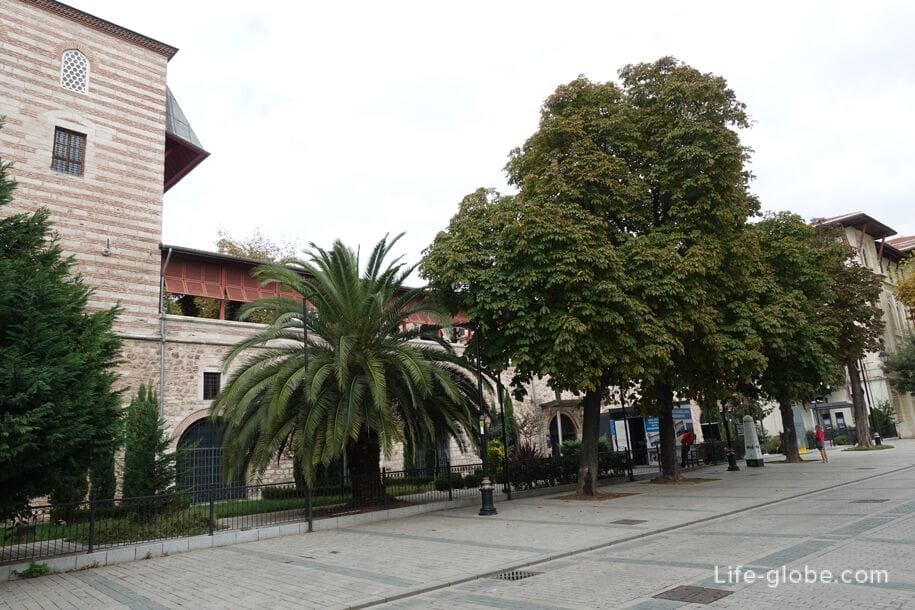
- The Republican Museum of Marmara University (Marmara Universitesi Cumhuriyet Muzesi), which consists of an art gallery, where short-term exhibitions are held, and the Ihapa Hulusi Gerey Gallery. Learn more about Sultanahmet Square and district with sights, photos and descriptions...
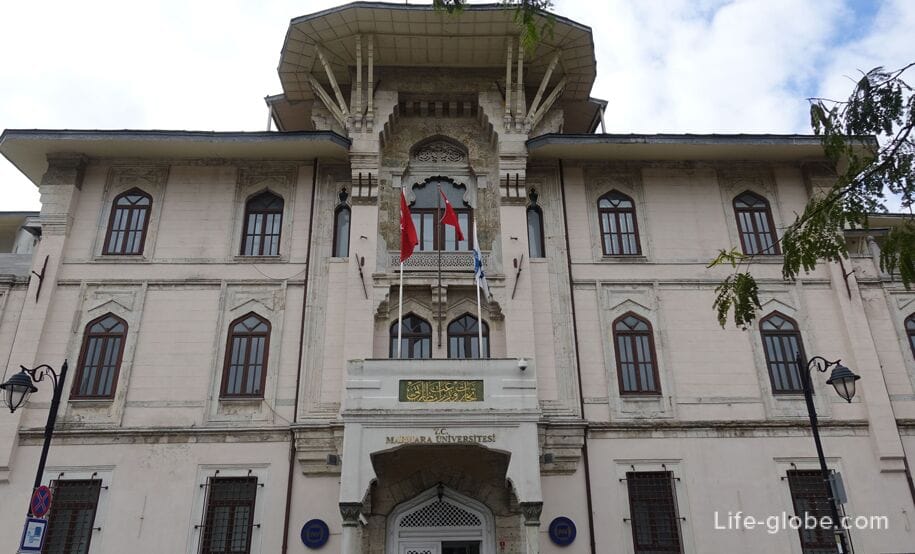
Also notable in the Fatih district is the small Chamberlitaş Square (Çemberlitaş Meydanı), located on the site of the former Forum of Constantine.
The main decoration of the square is the Column of Constantine or the column of Constantin (Column of Constantine, Çemberlitaş Sütunu) - a Roman triumphal column dating from 328. More about the column of Constantine...
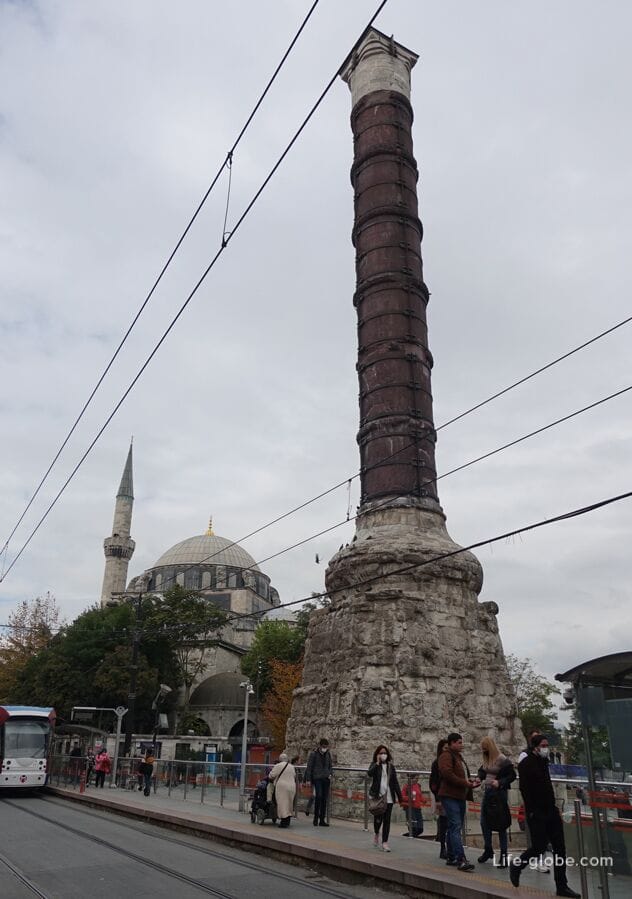
Near the column of Constantine there are such attractions as,
- Historical Turkish bath - Chamberlitash Hamami (Çemberlitaş Hamamı), originally built by Mimar Sinan in 1584 and commissioned by Nurban Sultan, head of the Imperial harem of Istanbul after the death of her second husband Selim II. Learn more about Chamberlitash Hammam with a website and description...

- Gazi Atik Ali Pasha Mosque (Gazi Atik Ali Paşa Camii);
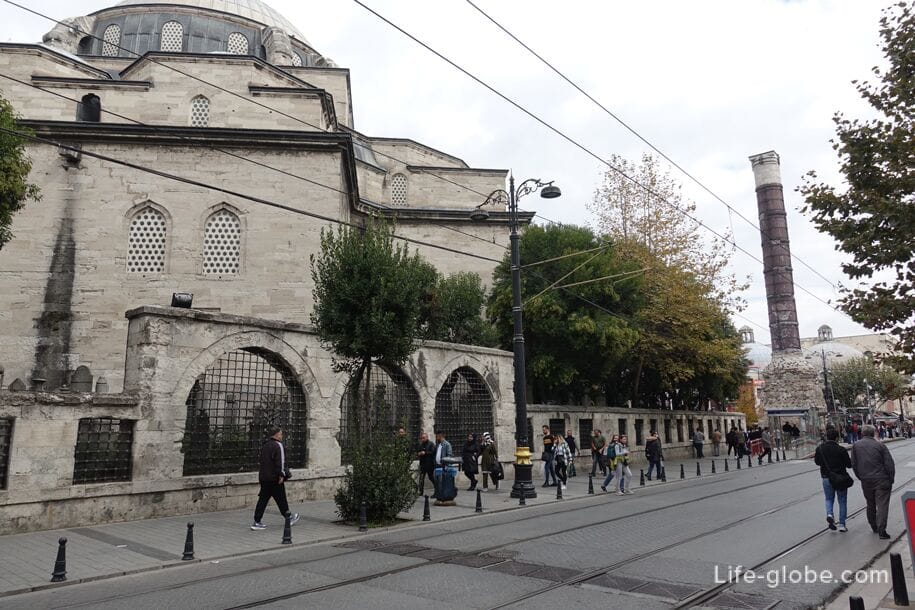
- Press Museum of the Turkish Journalists' Association (Türkiye Gazeteciler Cemiyeti Basın Müzesi);
- mausoleum of Mahmud II with a cemetery (Sultan II Mahmut Türbesi) - a family tomb of the Ottoman sultans, near which there is a cemetery with the graves of famous Ottoman politicians and writers. More about the mausoleum of Mahmud II with a cemetery...

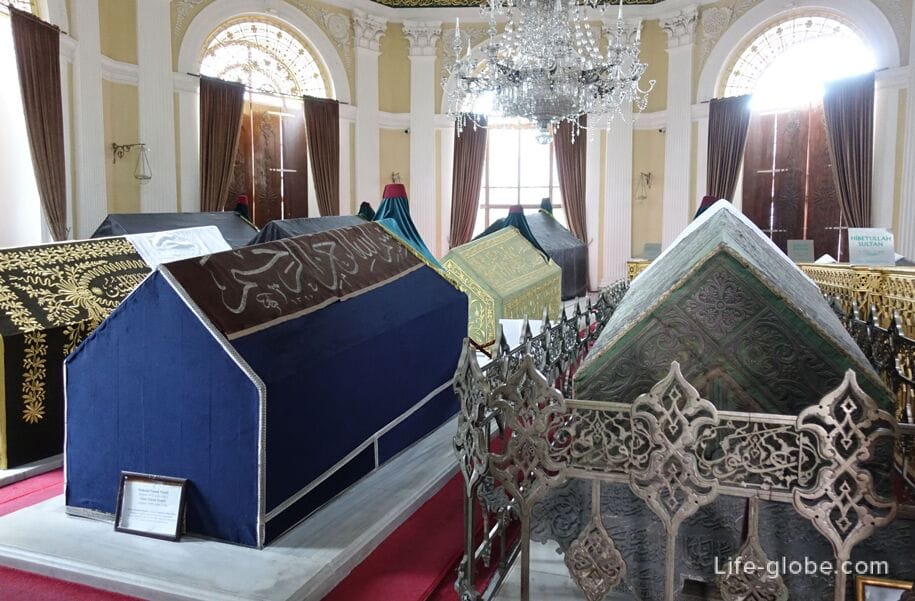
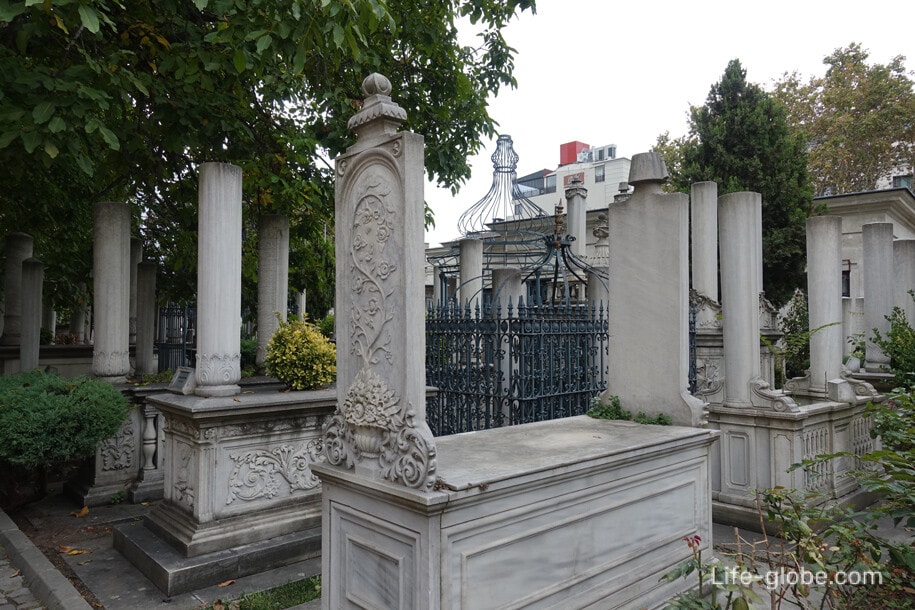
Grand Bazaar (Kapalıçarşı) is a historical bazaar, which is one of the oldest and largest markets in the world, as well as a symbol of Istanbul.
The birth of the Grand Bazaar was started in the winter of 1455-1556 by Sultan Mehmed II the Conqueror.
Today, the Grand Bazaar has both a covered historical part with domed painted ceilings, and an open part, which is located on nearby streets.
The range of goods sold at the Grand Bazaar is very large, although somewhat monotonous from shop to shop. These are mainly jewelry and jewelry, antiques, shoes, bags, leather and fur products, textiles and articles made of it (clothing), carpets, souvenirs, herbs and dried fruits, lamps, ceramics and wood products, tableware, hookahs, Turks, etc.
Restaurants, tea shops, coffee shops, hookah bars, ateliers and currency exchange offices are also located inside the Grand Bazaar.


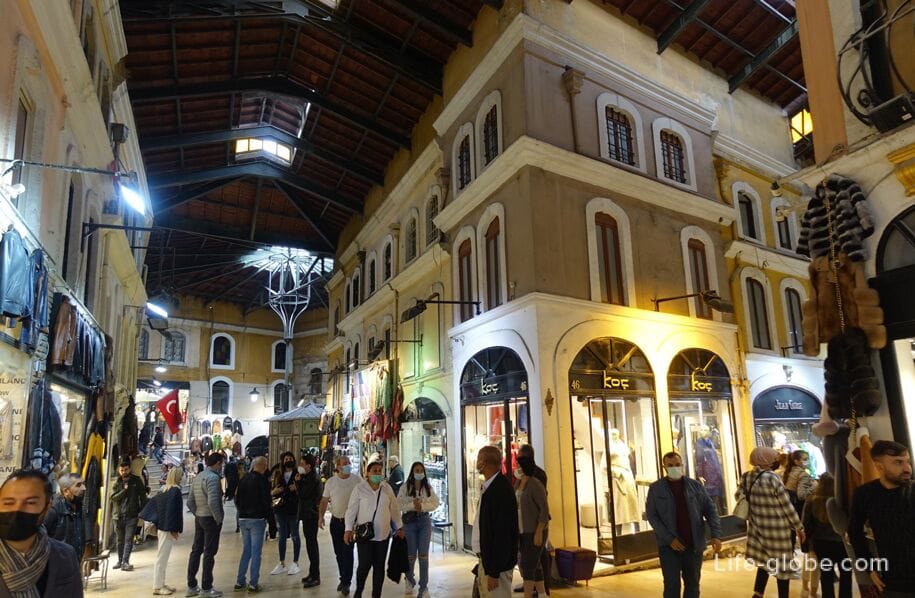
The open part (street) of the Grand Bazaar includes, among others, the Mahmutpaşa clothing Bazaar, which is one of the most famous Turkish shopping streets in Istanbul and starts from the gate of the Mahmutpasha Grand Bazaar and stretches to Vasif Çınar Cad Street. Learn more about the Grand Bazaar with photos, website, location and description...
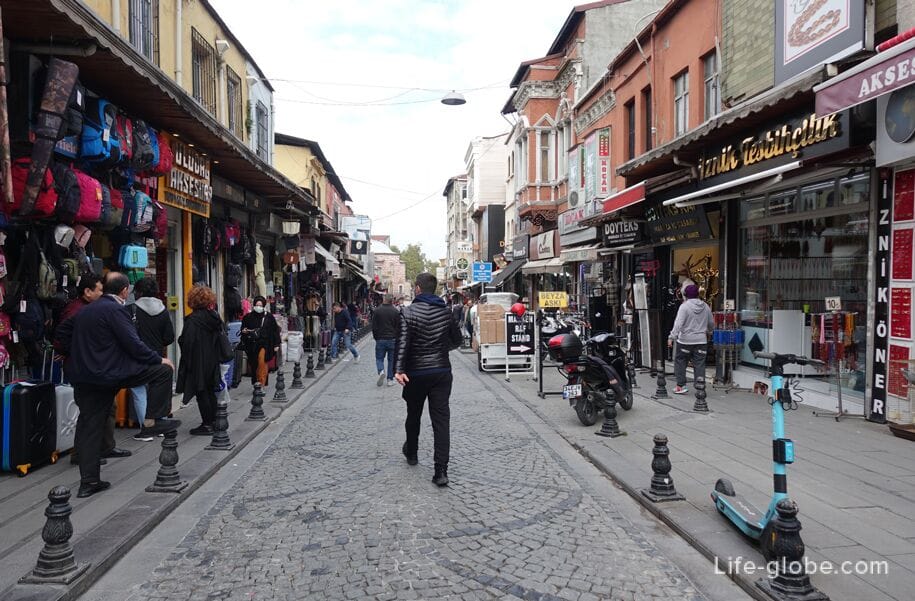
Egyptian Bazaar or Spice Bazaar (Mısır Çarşısı / Mysır Charshısı) It is also the historical bazaar of Istanbul, where trade is carried out mainly in sweets, spices, dried fruits and tea.
The market was opened in 1663-1664 and was intended for herbalists and cotton sellers. Then the bazaar was called "New Bazaar" (Yeni Çarşı) and "Valid Bazaar" (Valide Çarşısı).
In the middle of the 18th century, the bazaar was called the "Egyptian" or "Spice Bazaar", because spices brought from Egypt were traded there. Spices were supplied from India, Syria, Egypt and Arabia, and they were turned into essences, pills, powders and ointments that gave a pleasant smell to the beard and dishes.
Today, the Egyptian Bazaar has a closed part with vaulted painted ceilings and an open part.
The Egyptian bazaar sells mainly foodstuffs, including Turkish sweets, dried fruits, nuts, olives, tea, coffee, herbs, spices, meat delicacies, etc.
There is also a restaurant, shops with jewelry, souvenirs, dishes, hookahs, soap, textiles and some other non-food products. Learn more about the Egyptian Bazaar with photos, website and description...

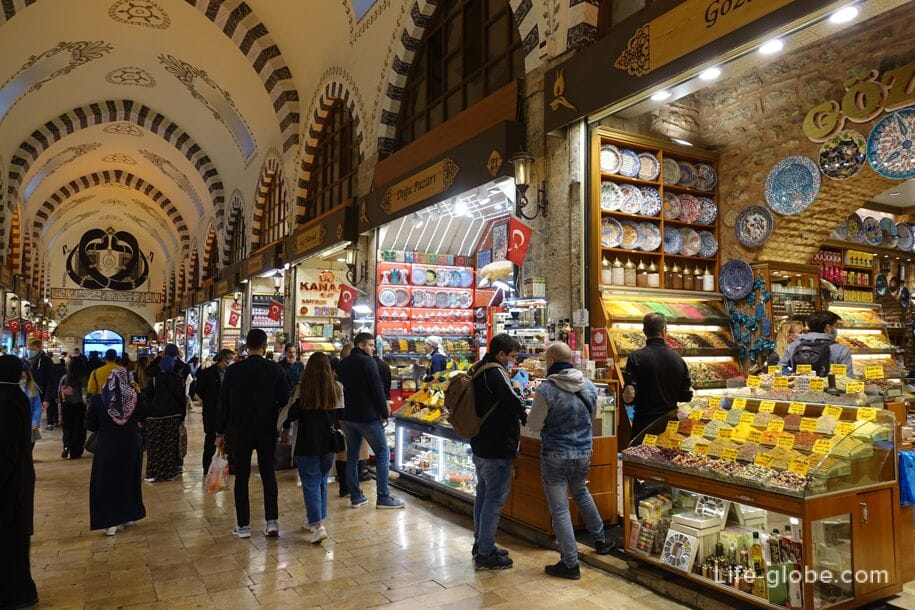
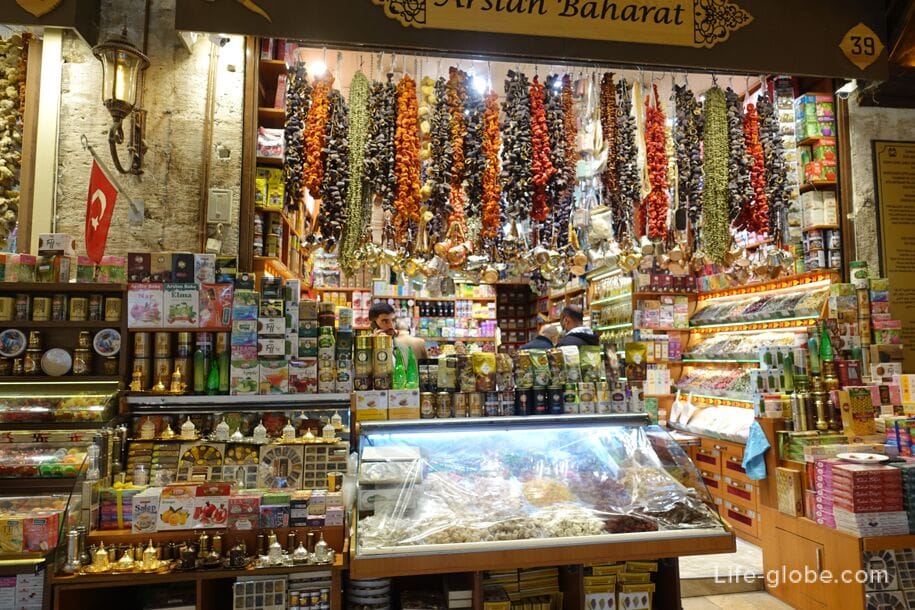
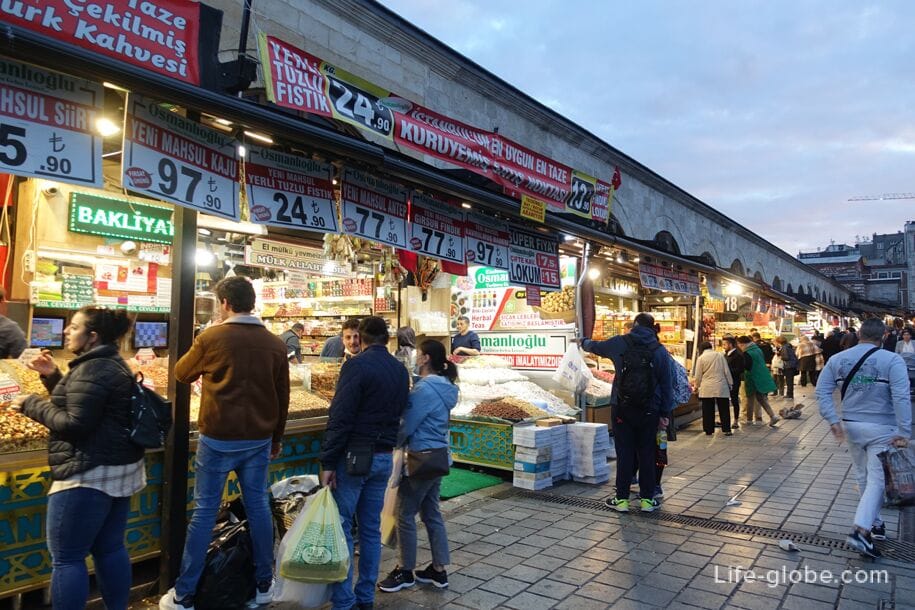
Arasta Bazaar (Arasta Çarşısı) is one of the oldest markets in Istanbul, which appeared in the 17th century and now represents one small shopping street near Blue Mosque.
On both sides of the street there are cozy small shops selling things, spices, pottery, souvenirs, hookahs, sweets, etc.Learn more about the Arast Bazaar...
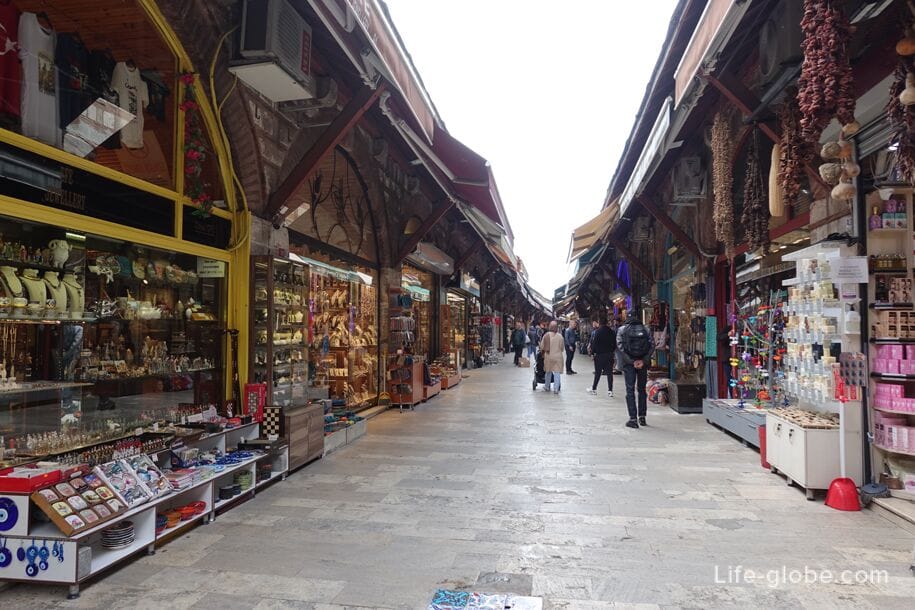

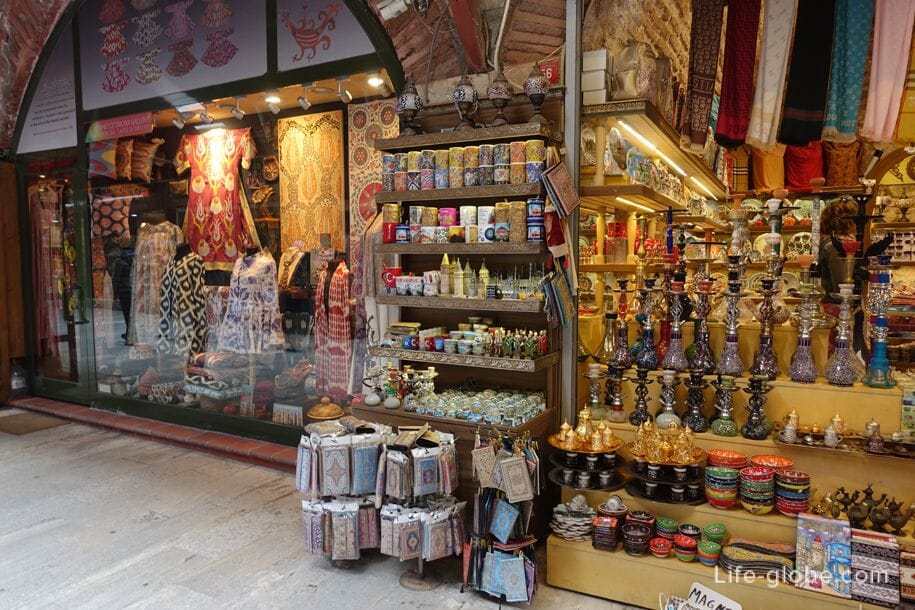
Laleli Bazaar, also called the Russian Bazaar (Laleli), is a clothing market where leather and fur products, shoes and copies of branded items are sold.
Today, the market is a shopping street (shopping district) with shops.
The market appeared back in the days of the Ottoman Empire, and received its second name "Russian" due to the fact that in the 90s visiting merchants from the former Soviet Union bought at this market.
For lovers of antiquity, the HORHOR FLEA MARKET (HORHOR BITPAZARI FLEA MARKET), where antiques are sold, including furniture, dishes, chandeliers, can be suitable.
In this market, you need to be attentive to prices, because they may be overstated.
Market address: Iskenderpaşa, Horhor Cad./kırk Tulumba Sok. No:13, 34080 Fatih/Istanbul, Turkey.
The Blue Mosque or Sultanahmet Mosque (Sultanahmet Camii / Sultan Ahmet Camii) is a historical imperial mosque, which is the first mosque in the city, and is also considered an outstanding example of Islamic and world architecture.
The mosque is known primarily for its six minarets and interior decoration, which is considered a masterpiece.
Today it is a functioning mosque, which is included in the UNESCO World Heritage List and attracts numerous tourists.
Entrance to the mosque is free. More about the Blue Mosque...
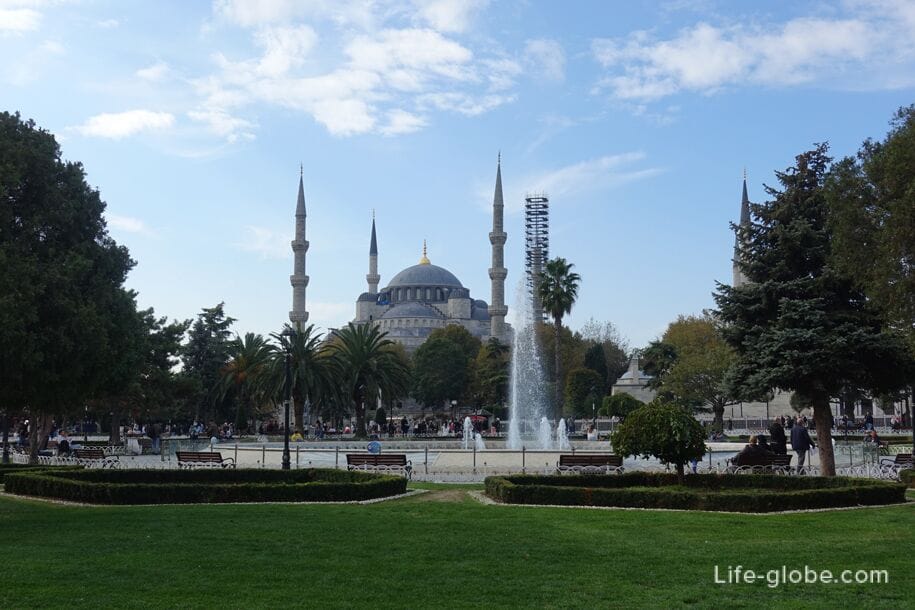
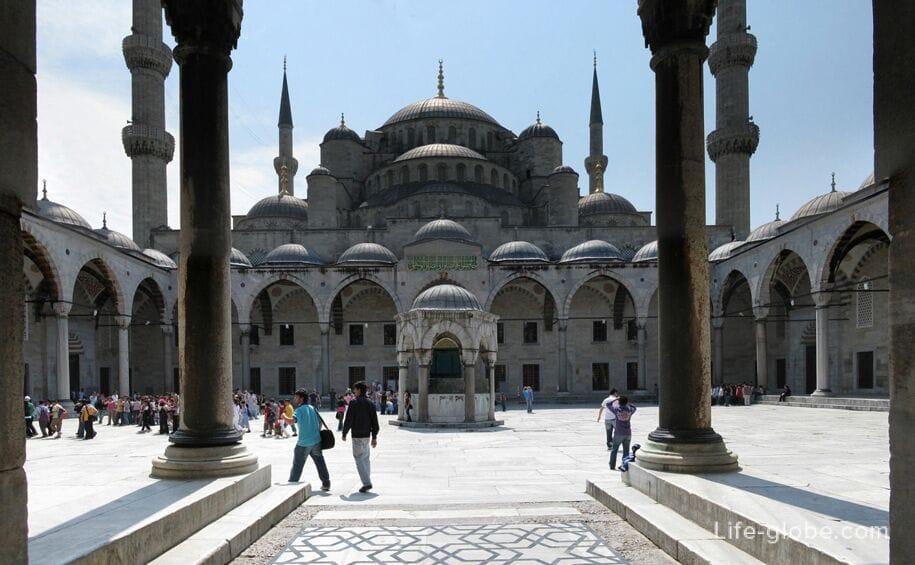
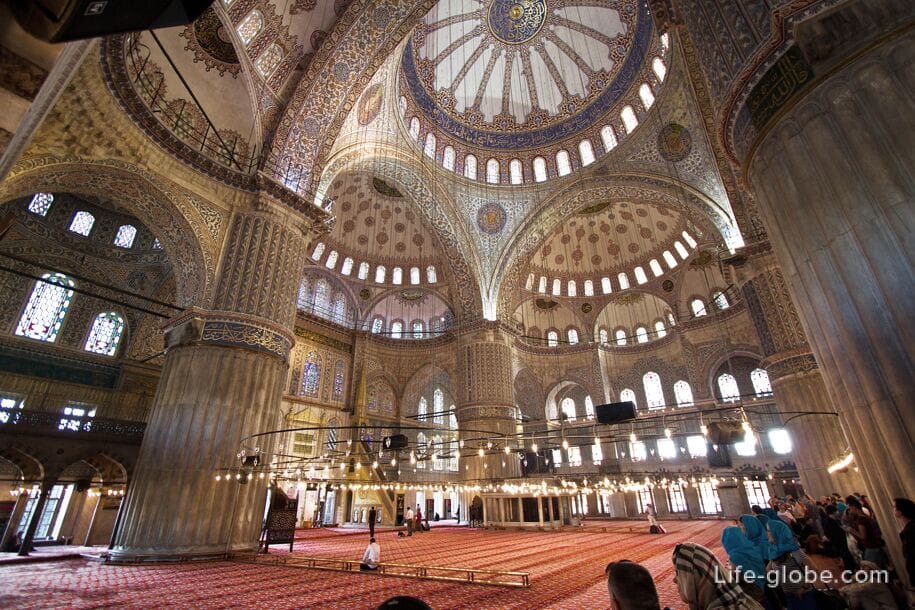
The Mausoleum of Ahmed I (Sultan Ahmet Türbesi) is the tomb where Sultan Ahmed I, his wife and children, as well as other representatives of the Ottoman dynasty rest.
The construction of the tomb-mausoleum began after the death of Sultan Ahmed I, and lasted three years.
The mausoleum is a monumental building with a domed roof and an arcade-entrance in the form of a three-part portico. It has a square layout, the facades of which are lined with marble.
The mausoleum is part of the architectural complex of the Blue Mosque.
Admission is free. More about the mausoleum of Sultan Ahmed I...
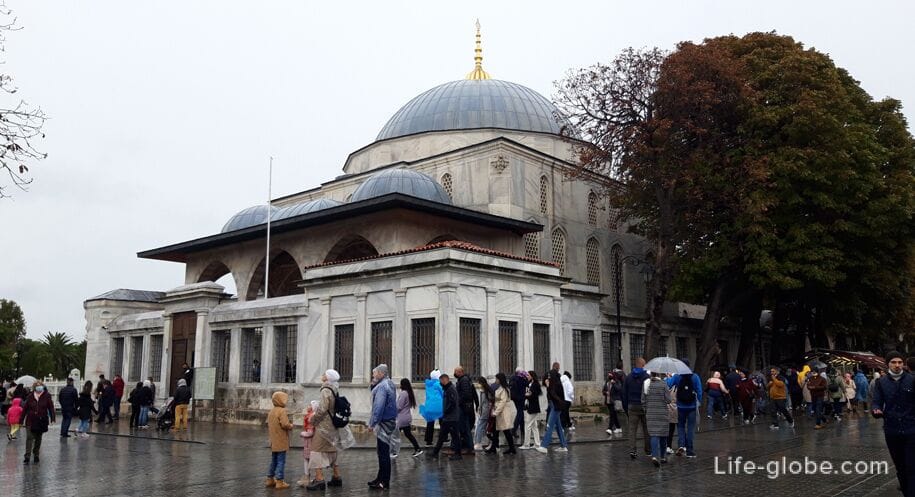
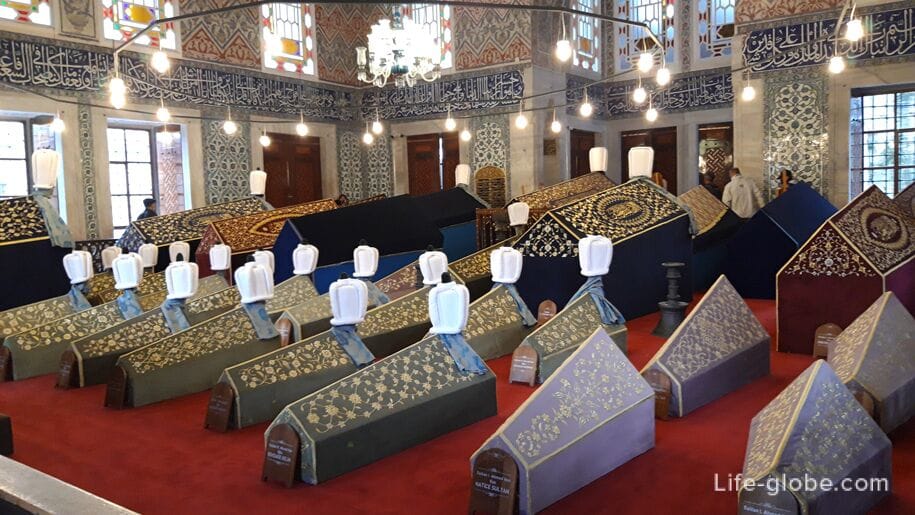
The Museum of Mosaics of the Grand Palace (Büyük Saray Mozaikleri Müzesi) is a museum of collections of mosaics from the time of the Byzantine Empire, discovered on the site of the Grand Imperial Palace of Constantinople.
The mosaics in the museum, according to research, date back to the period somewhere between 450-650 years of our era. Most likely, the mosaics were created under the Byzantine emperor Justinian I, in the first half of the 6th century.
Entrance to the mosaic museum is paid; from the Arast Bazaar.
The museum's website: muze.gov.tr/muze-detay. Learn more about the Grand Palace Mosaic Museum...
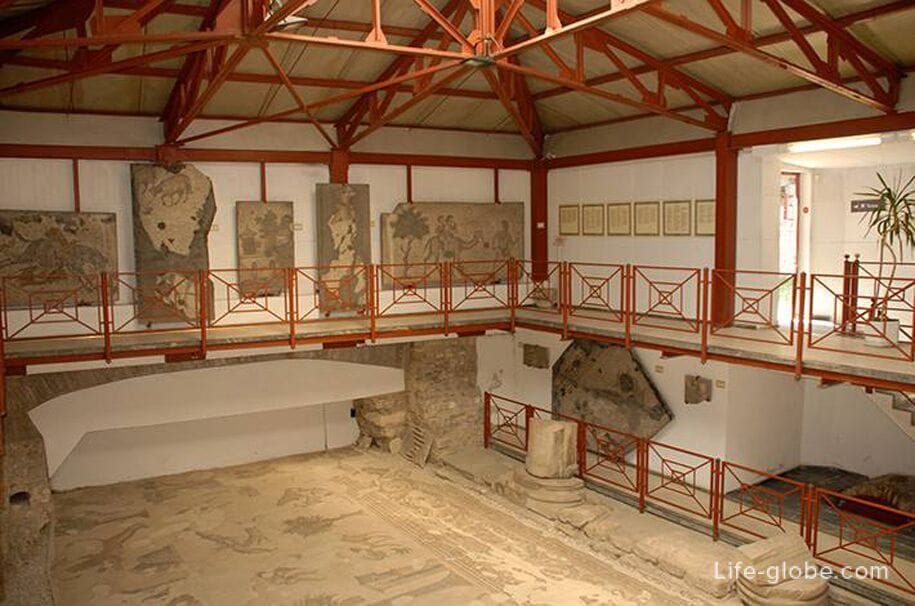
Sultan Ahmet Parkı is part of the Hippodrome Square and is a park area with a fountain and places to relax, located between Hagia Sophia and the Blue Mosque.
The center of the square is decorated with a dancing fountain (Sultan Ahmad Maydan Fountain), which is illuminated in the evening.

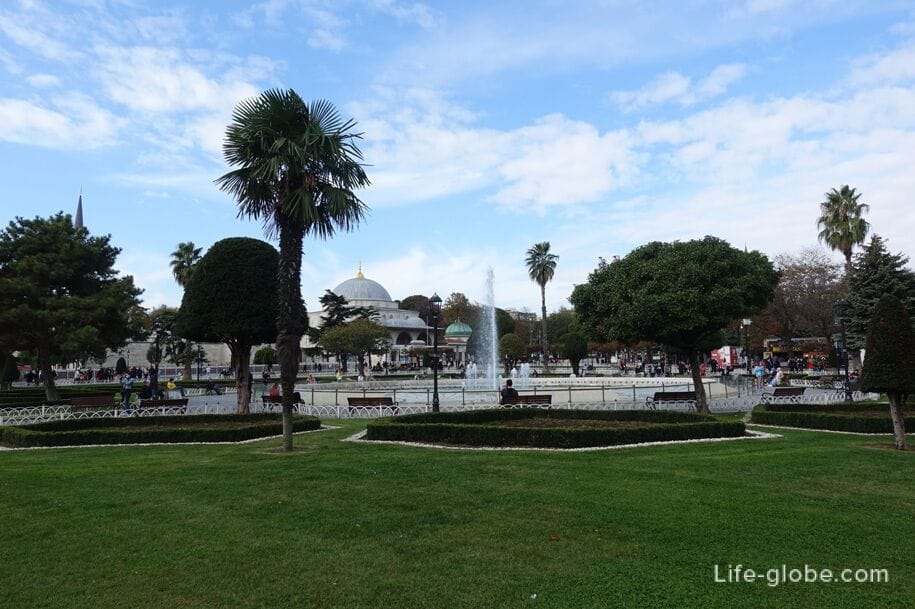
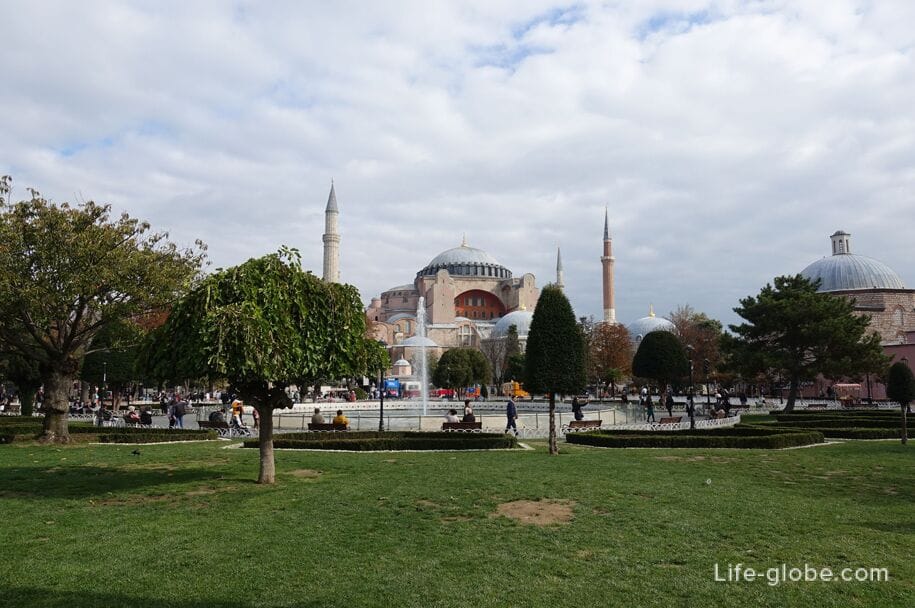
Hagia Sophia or Hagia Sophia (Ayasofya) is a mosque in Istanbul, which during its history has been an Orthodox church, mosque and museum.
The mosque is one of the greatest world-famous monuments and examples of Byzantine culture, as well as a symbol of the "golden age" of Byzantium.
Hagia Sophia has mausoleums, tombs, four minarets, and the giant dome system of the mosque with arched windows is a masterpiece of architectural thought of its time.
The interior of Hagia Sophia has absorbed several cultures and religions: inscriptions in Scandinavian runes, unique Orthodox mosaics, Islamic mihrab, Sultan's lodge and minbar. The "Weeping Column" also attracts attention, which, according to legend, cures diseases and fulfills wishes.
Entrance to the mosque is free. More about the Hagia Sophia Mosque...
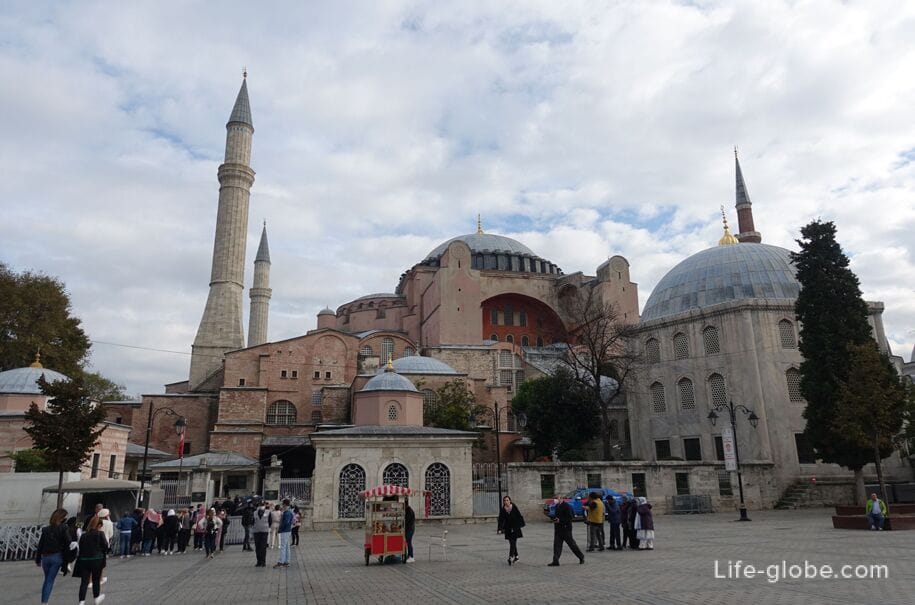
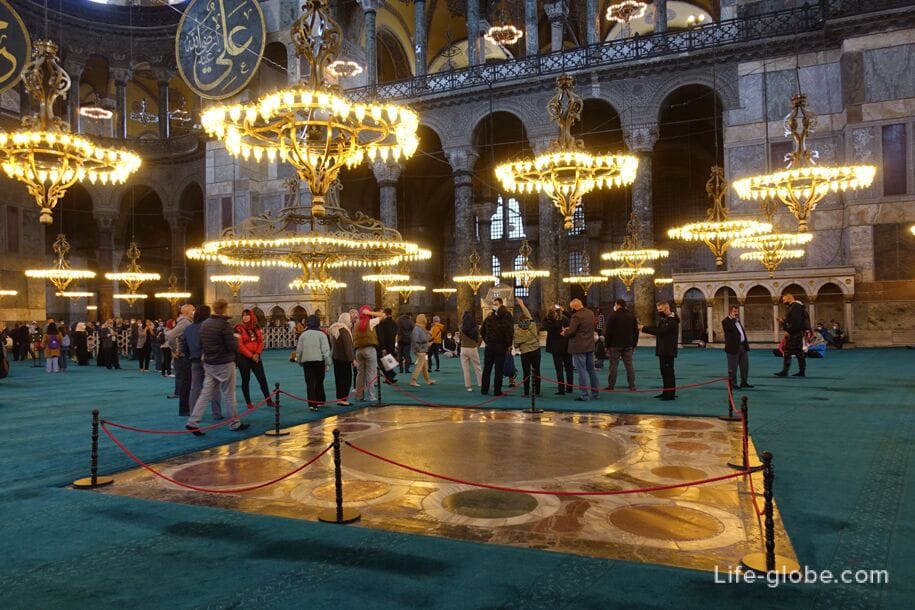
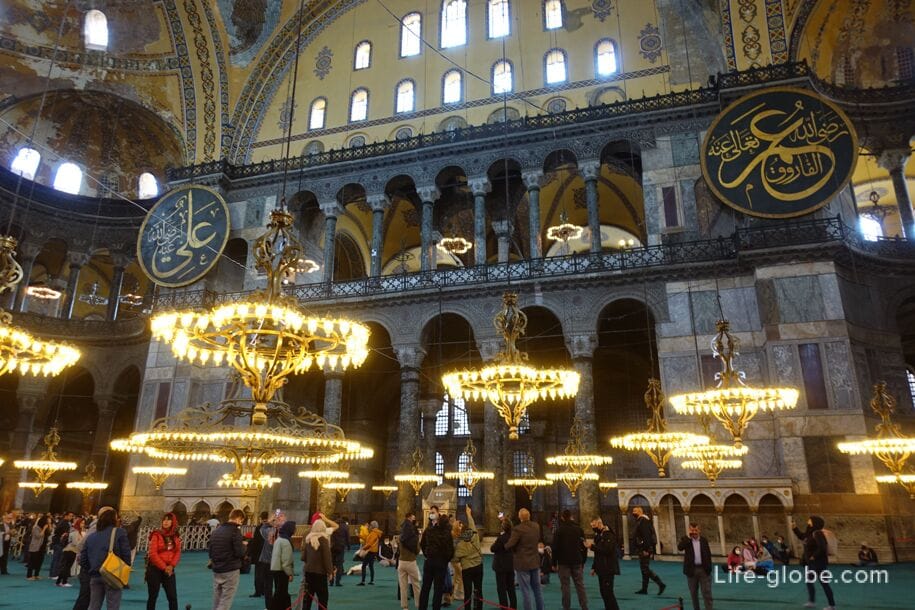
Hammam Hürrem Sultan (Hürrem Sultan Hamamı) - historical Turkish baths built in the 16th century for the beloved and legendary wife of Suleiman the Magnificent - Roksolana.
The hammam was designed and built in 1556-1557 by the chief architect of the Ottoman Empire, Mimar Sinan.
In the historic building of the Khurrem Sultan hammam, there is still a hammam, as well as a cafe-restaurant.
The hammam is located near Sultan Ahmet Park. Learn more about the Khurrem Sultan Hammam...
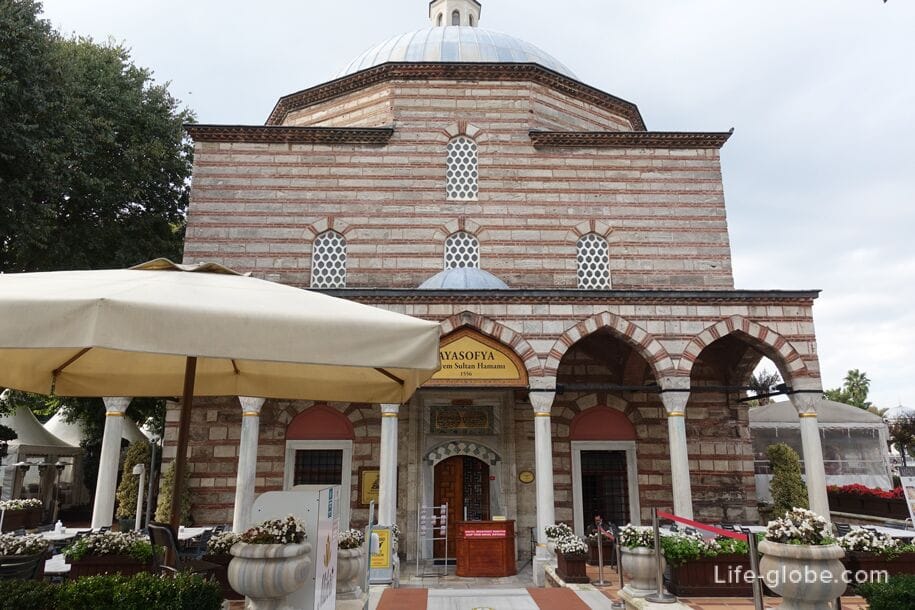
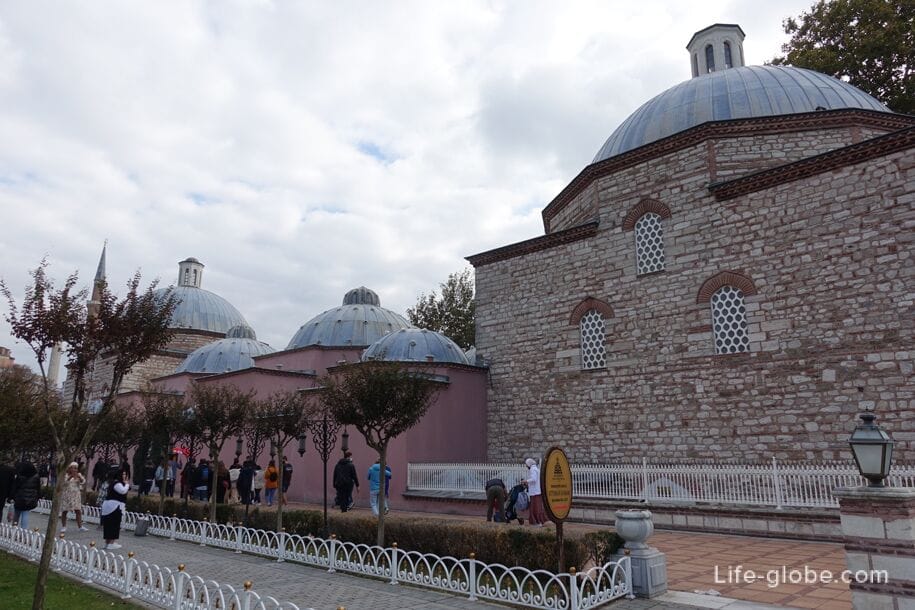
The Milyon Column or Zero Column (Milyon Taşı) is an element of the monument of the 4th century, which served as a marker of all ancient Roman roads leading to Constantinople in the Byzantine Empire, and the zero point used when calculating the distance from other cities of the world to this place.
It is believed that the mark was established by Emperor Constantine I in the 4th century.
The column is located near Hagia Sophia.
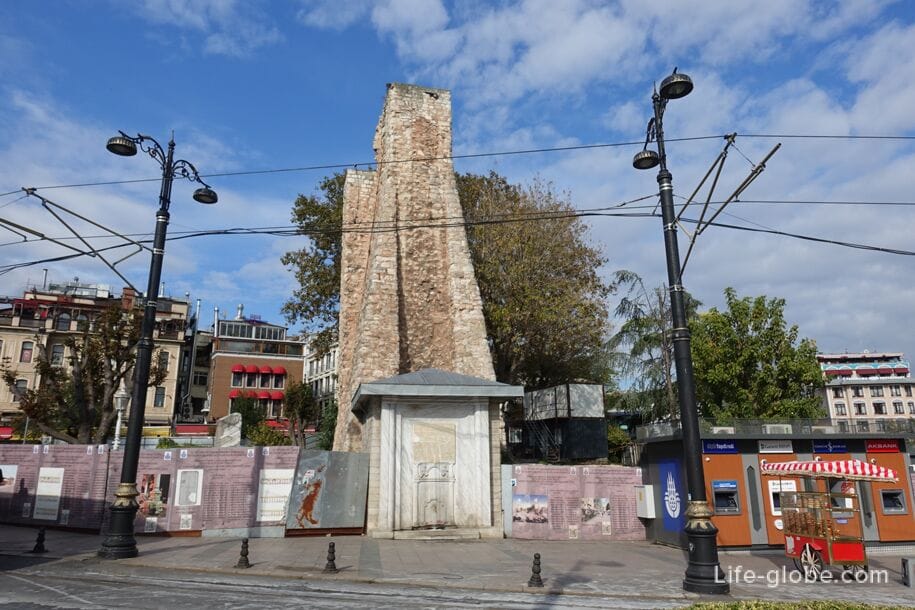
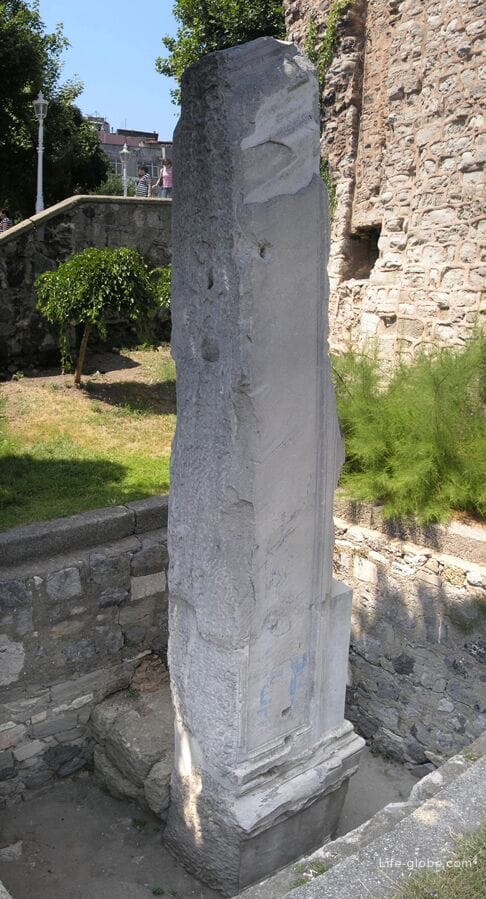
The Basilica cistern or Yerebatan Cistern (Yerebatan Sarnıcı) is one of the most famous, large and well-preserved underground reservoirs of Constantinople.
The cistern was built under the Byzantine Emperor Justinian I and was popularly called the "cistern-palace" because of the marble columns rising from the water, seemingly countless. The name "Basilica cistern" comes from the fact that there was a basilica at this place.
The cistern is a large underground structure with columns, one of which is called the "Crying Column" or "Column of Tears". It got this name due to the fact that, unlike other columns in the tank, it always remains wet, and there are patterns on its surface that resemble tear drops in shape.
The cistern is also notable for the two heads of Medusa, used as pedestals under two columns and belonging to the masterpieces of sculptural art of the Roman period.
Entrance to the tank is paid.
Address of the Basilica Cistern: Alemdar, Yerebatan Cd. 1/3, 34110 Fatih/Istanbul, Turkey.
The site of the Basilica Cistern: yerebatan.com.
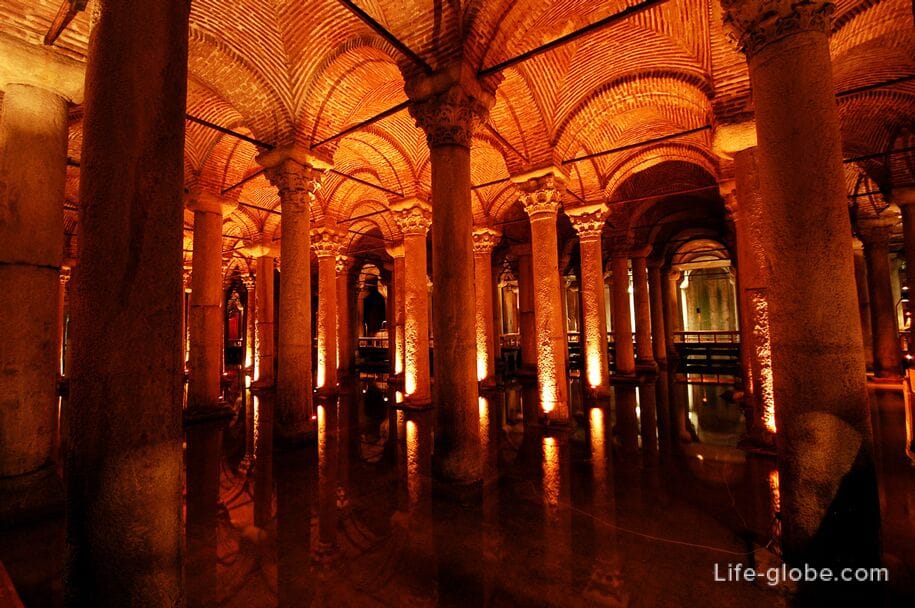
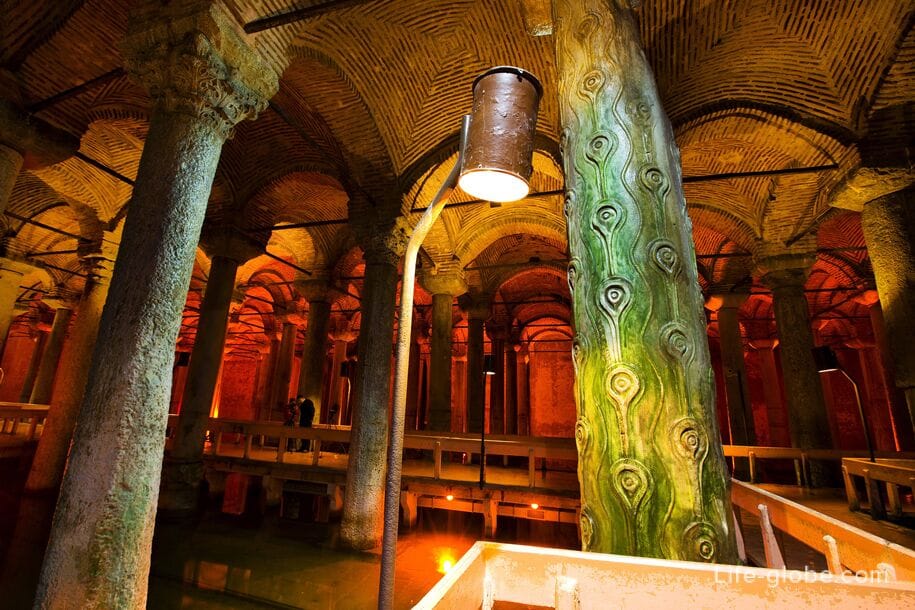
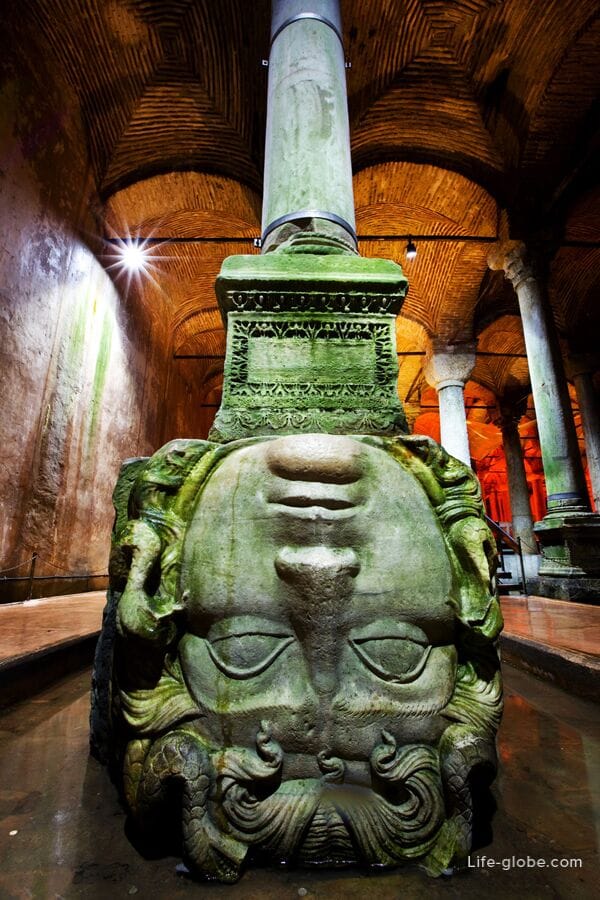
The Fountain of Ahmed III (III Ahmet Çeşmesi) is a large historical fountain located in a pavilion in the style of Ottoman rococo and looks like a richly decorated casket.
The fountain was erected during the reign of Sultan Ahmed III in 1728.
The fountain is a large square block with five small domes, luxurious decorations and paintings. At each outer corner of the pavilion, three barred windows (shebil) are notable, through which glasses of water or sherbet were given out free of charge. Fountains are located in the niches of the pavilion, above which there are large calligraphic plates with stanzas from a poem dedicated to water and philanthropist Seyid Hussein Wehbi ben Ahmed, the chief qadi of Aleppo and Kayseri. The poem is read clockwise around the fountain, starting from the northern shebil. The last stanza of the poem on the northwest facade depicts the chronogram of Sultan Ahmed III.
There is a fountain on a large square in front of the gates of the Topkapi Palace. More about the Ahmed Fountain 3...
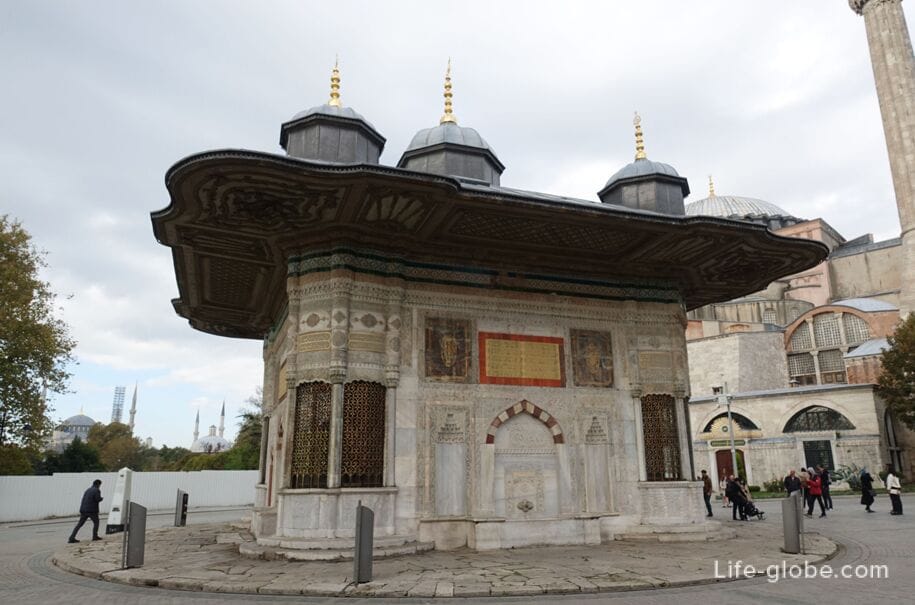
Topkapi Palace (Topkapı Sarayı) for 400 years served as the main residence of the sultans of the Ottoman Empire, as well as the administrative and educational center of the state, until Sultan Abdul-Majida I moved to the newly built Dolmabahce Palace (Dolmabahçe Sarayı).
Today, the former Topkapi Palace is a museum, one of the main attractions of Istanbul, a magnificent architectural monument of the 15th-19th centuries and is a complex surrounded by high walls. The Topkaps include: courtyards and the palace complex itself with an administrative part and a harem, as well as other buildings and panoramic terraces. Also in the complex is the Church of St. Irene.
Entrance to the palace and the Church of St. Irene is paid.
Topkaps are located at: Cankurtaran Mh., 34122 Fatih / Istanbul.
Topkapi Palace website: topkapi-sarayi. More about the Topkapi Palace with the Church of St. Irene...
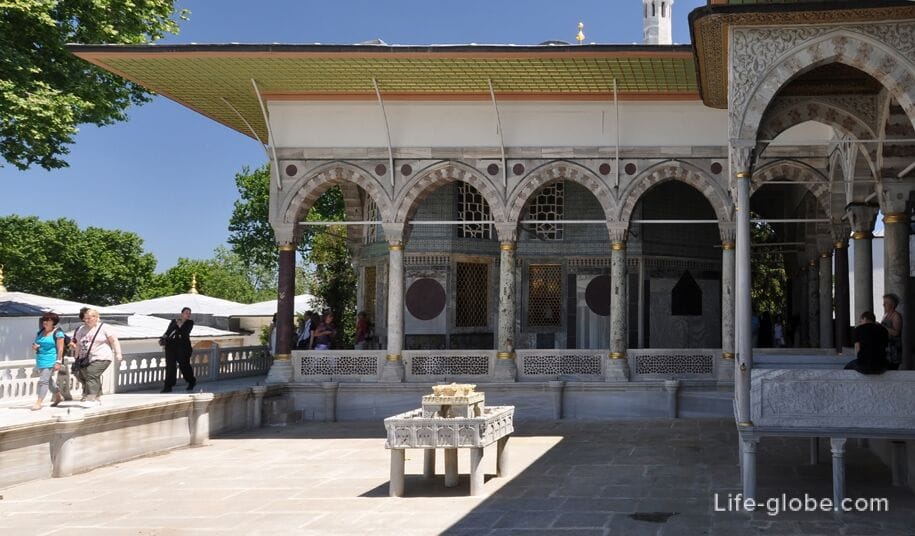
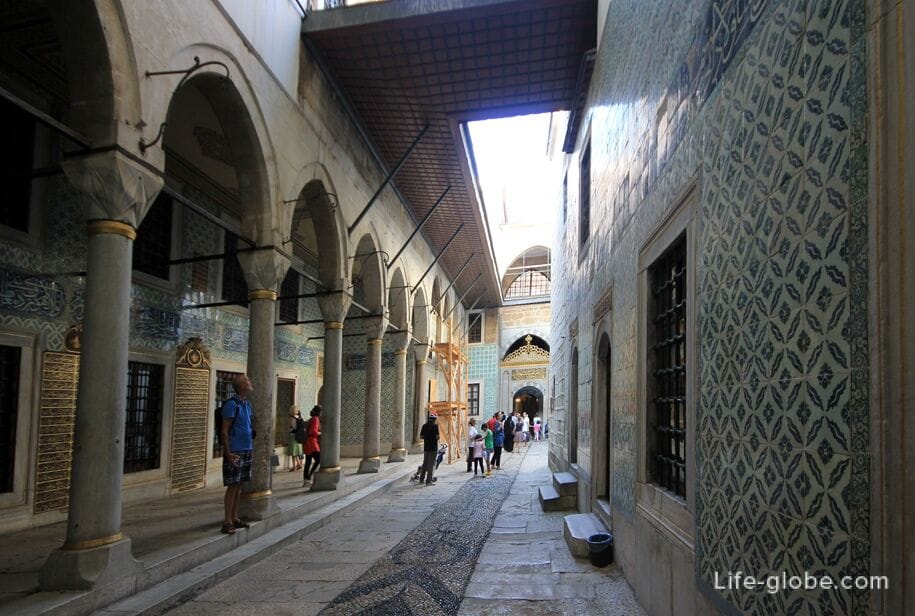
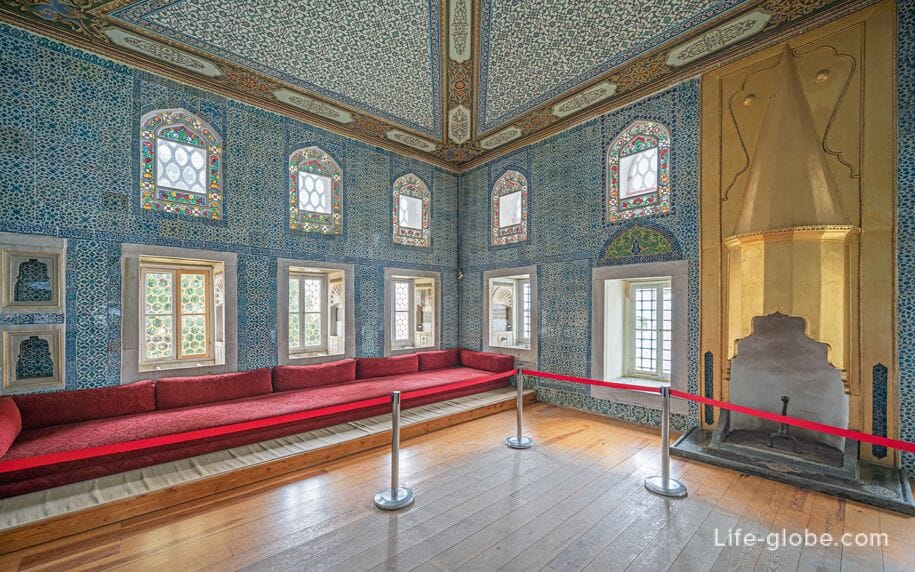
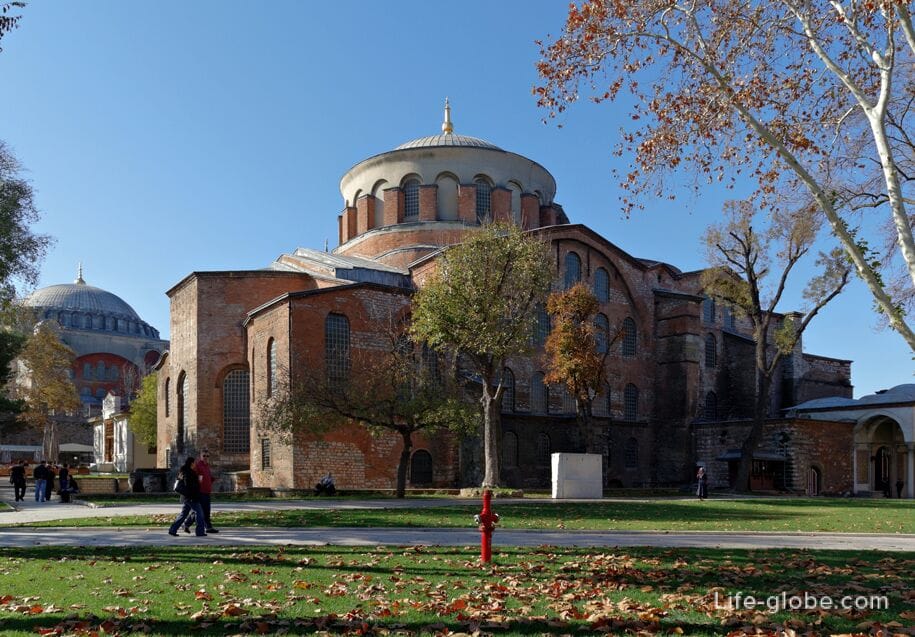
Near the walls of the Topkapi Palace there is a large Gulhane Park, which was the former outer park of the Topkapi Palace.
Today it is a public park with places for walking and recreation, cafes, fountains, monuments, historical objects and museums, including the Roman Gothic Column (Gotlar Sütunu), the Welcome Pavilion (Alay, Alay Köşkü), the Archaeological Museum of Istanbul (Istanbul Arkeoloji Müzesi) with the Museum of the Ancient East (Eski Şark Eserleri Müzesi) and the elegant tiled pavilion of 1472 (Çinili Köşk Müzesi / Repaired Keshk), as well as the Museum of the History of Science and Technology in Islam (Istanbul Islam Bilim ve Teknoloji Tarihi Müzesi).
Entrance to the park is free. Entrance to museums is paid. Learn more about Gulkhan Park...



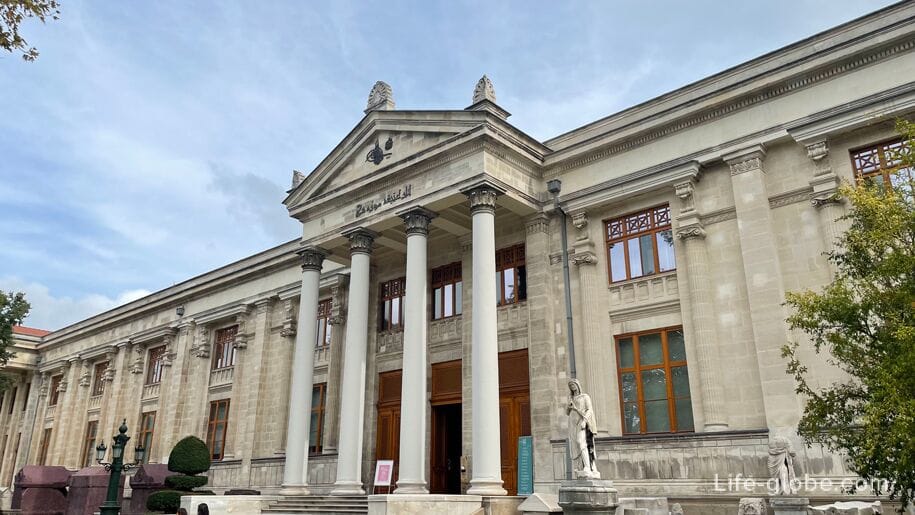
The High Gate or Sublime Porte, also the Ottoman Porte or High Porte (Sublime Porte, Bab al-Ali Sublime Porte) is a part (synecdoche) for the central government of the Ottoman Empire.
This name comes from an old practice when the ruler announced his official decisions and judgments at the gates of his palace. This announcement of decisions was a practice in the Byzantine Empire, and also adopted by the sultans of the Ottoman Turks since the time of Orhan I, and therefore the sultan's palace or the gate leading to it became known as the "High Gate".
Now they are known as the Imperial Gate (Bâb-Hümâyun) and led to the outer courtyard of the Topkapi Palace.
Today, an authority is located behind the gate.
The gate is located across the street from Gulhane Park, at Hoca Paşa, Alayköşkü Cd. No:29, 34110 Fatih/Istanbul, Turkey.
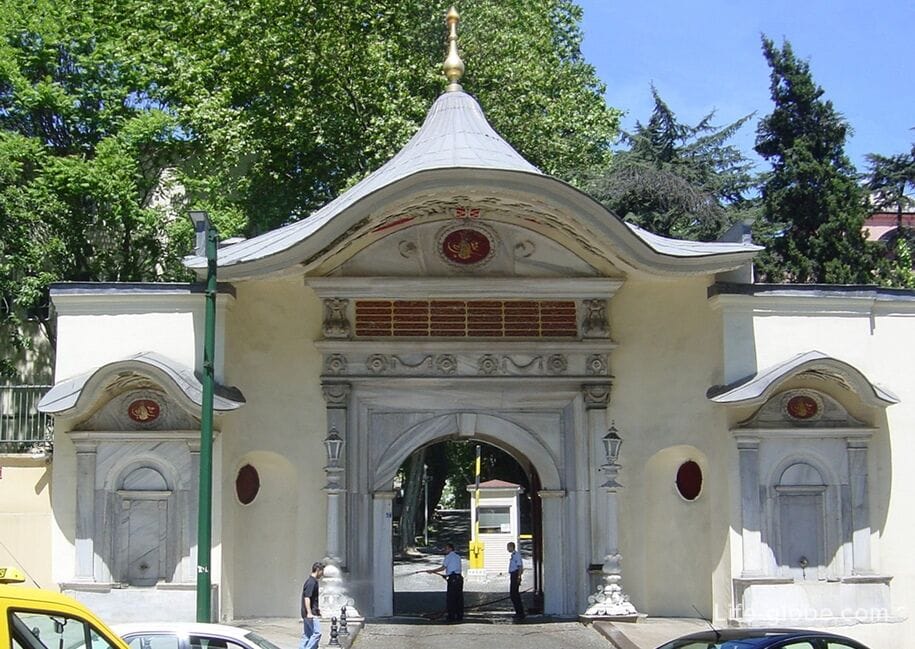
The Church of Saints Sergius and Bacchus (Küçük Ayasofya) or Little Saint Sophia (Kuzuk Ayasofya Caddesi) is a mosque in the building of the 6th century Byzantine church, which the Byzantines named after Sergius and Bacchus.
Since the temple looks like the Hagia Sophia, only it is smaller, the people called the shrine "Kyuchuk Hagia Sophia", which means "Little Hagia Sophia" or "Little Saint Sophia".
It is one of the oldest preserved churches in Istanbul. The existing temple was built in 527-529 near the house where Emperor Justinian I spent his young years.
After the fall of Constantinople, the church of Saints Sergius and Bacchus continued to operate until 1506, when it was converted into a mosque, where mosaics were whitewashed, a porch, a madrasah, a ritual fountain and a minaret were added.
The address of the church-mosque: Küçük Ayasofya Mahallesi, Küçük Ayasofya Camii Sokagi No:20, 34122 Fatih/Istanbul, Turkey.


The Sokullu Mehmet Pasha Mosque (Sokullu Mehmet Paşa camii) is a fairly large and well-known mosque of the city.
The mosque was built in the Ottoman style in 1572 on the site of the church of St. Anastasia, parts of the ruins of which were involved in the construction of the mosque.
The mosque is named after the Grand Vizier Sokollu Mehmed Pasha.
The mosque has one minaret and a courtyard. The interior of the mosque is known for Iznik tiles decorating the interior walls.
The mosque is located in Kadırga microdistrict of Fatih district.
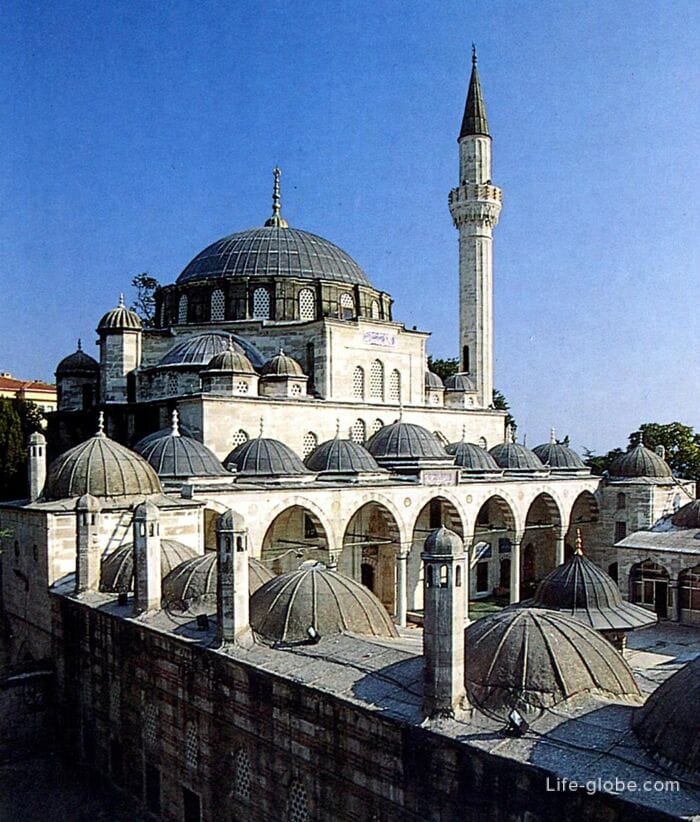
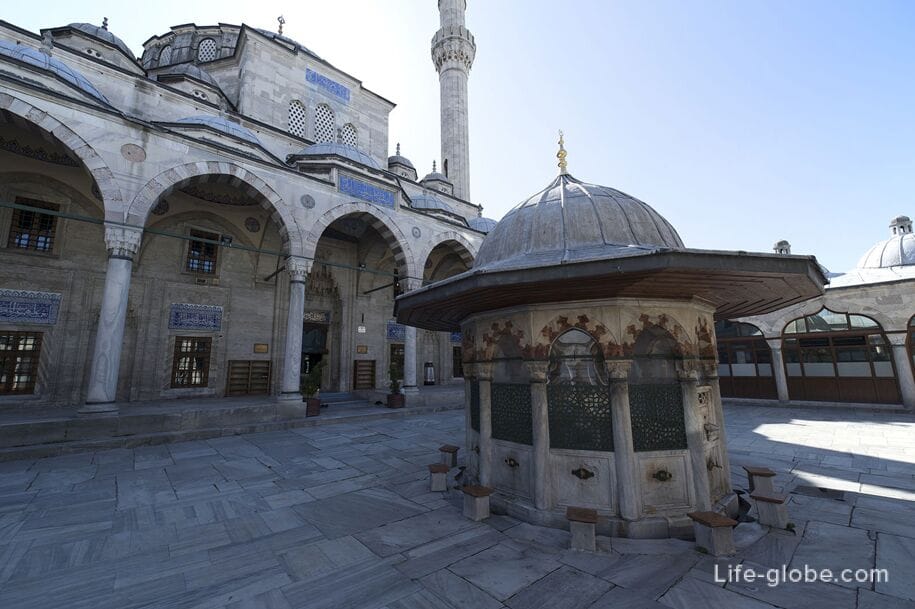
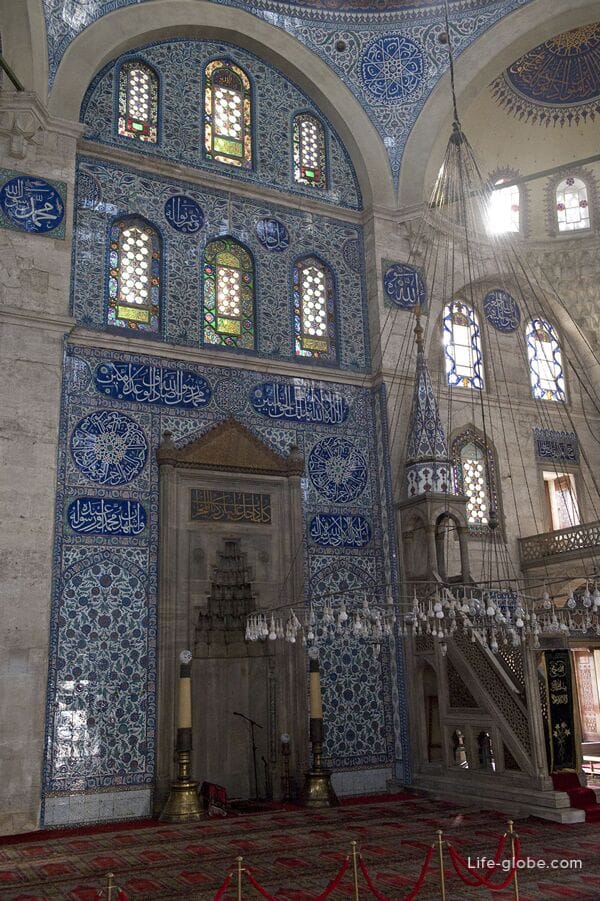
The Feodosiya cistern or the Sherefiye cistern (Şerefiye Sarnıcı) is one of the largest and most significant closed cisterns in the city, which has been restored today and functions as a museum, where visitors are shown a 10-minute show with three-dimensional effects and music.
It is assumed that the Sherefie cistern was built in 428-443, during the reign of Theodosius II. Water was delivered to the cistern from the aqueduct of Valens.
The Theodosius Cistern is located under a modern building, the entrance is from Piyer Loti Caddesi Street No. 2/1.Tank address: Binbirdirek, Piyer Loti Cd. No:2/1, 34122 Fatih/Istanbul, Turkey.
Entrance to the tank is paid.
Feodosiya Cistern website: serefiyesarnici.istanbul. Read more about the Feodosiya cistern with photos...
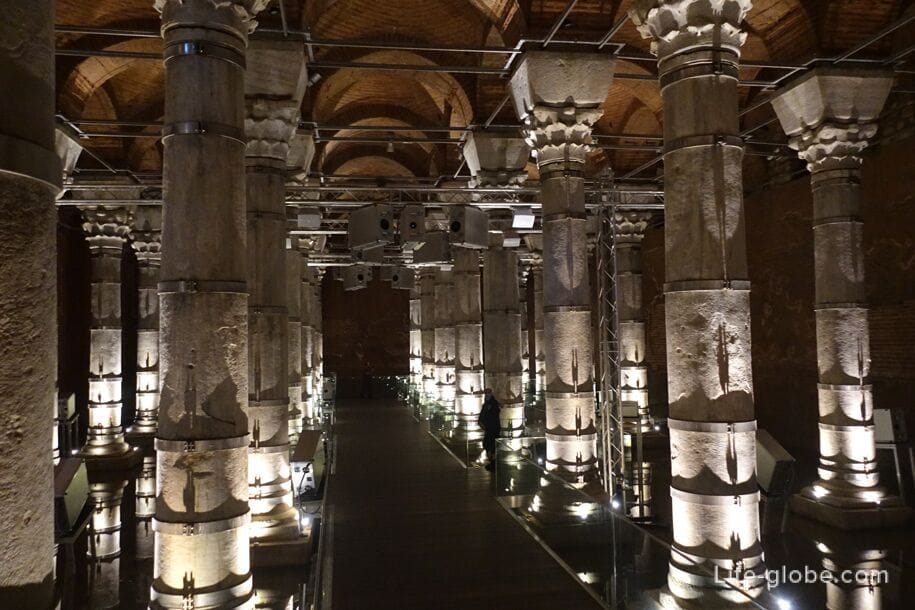
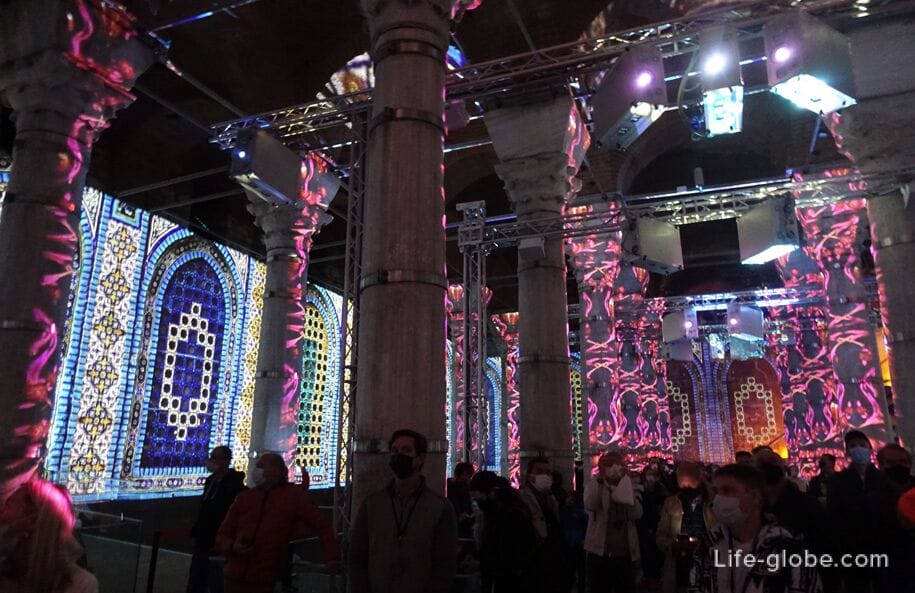
The Binbirdirek Cistern (Binbirdirek sarnıcı), also known as the Philoxena Cistern (ΚινστρΡνα ΦιλονΝου), is the second largest reservoir in Istanbul after the Basilica Cistern.
From Turkish, the word "Binbirdirek" translates as "1001 columns", although in fact there are much fewer columns in the tank.
The cistern was built during the reign of Constantine I (4th century). Over time, the cistern dried up, and was used as a workshop from the 16th century.
Today, the Philoxene cistern is open to visitors as a museum. It is also used for exhibitions, concerts, banquets, weddings and other celebrations.
Entrance to the tank is paid.
Binbirdirek Cistern Address: Binbirdirek Mah. İmran Öktem Cad. 34122 Fatih / İSTANBUL.
Binbirdirek Cistern website: binbirdirek.com.tr. Learn more about the cisterns and dungeons of Istanbul...
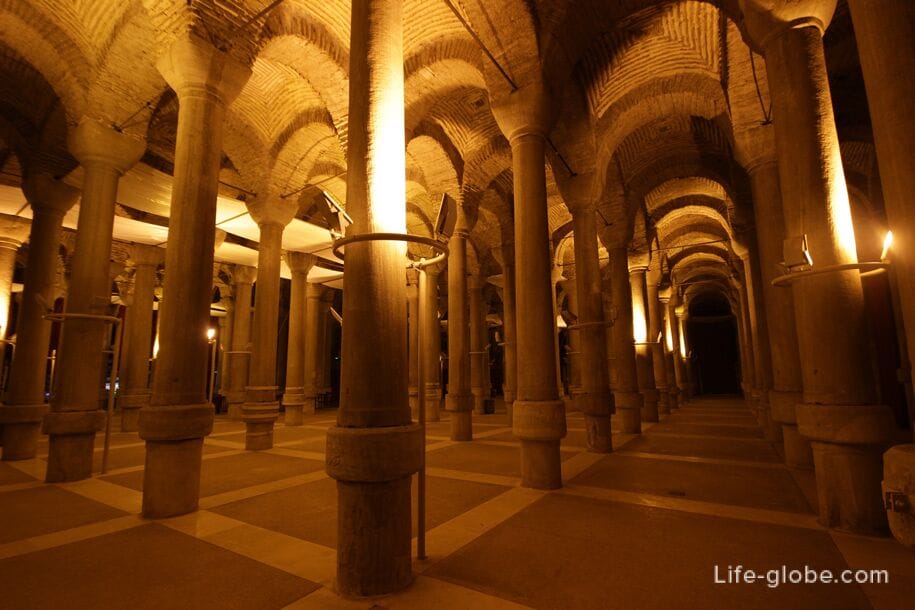
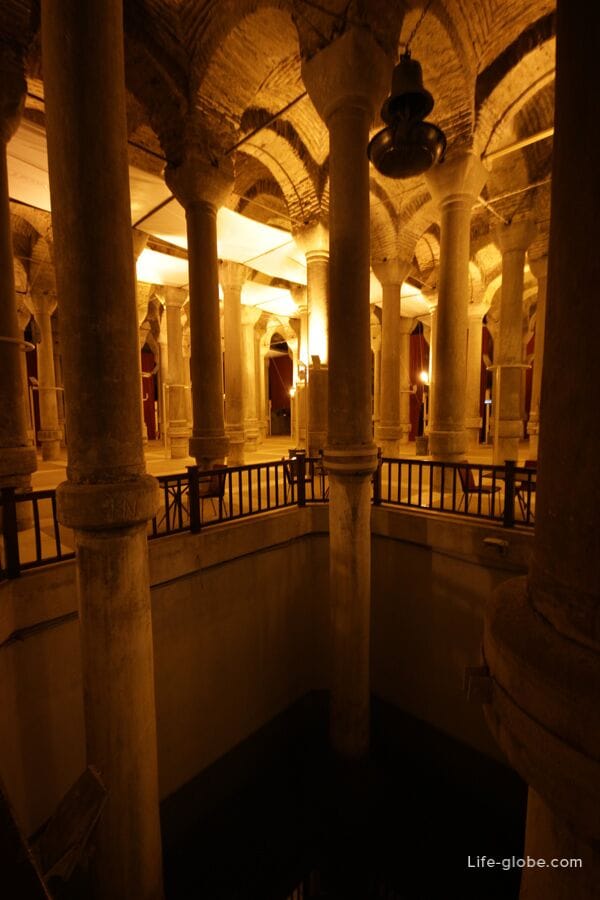
Nuruosmaniye Mosque (Nuruosmaniye Camii) is an Ottoman mosque of 1755 with a large dome and many windows, which is notable for its architecture.
The construction of the mosque was started in 1748-1749 during the reign of Sultan Mahmud I and completed in 1755 during the reign of Sultan Osman III.
The mosque was the first in the city built in the Baroque style of Ottoman architecture, which was influenced by European models.
The dome of the mosque is the fourth largest in Istanbul, after Hagia Sophia, Suleymaniye Mosque and Fatih Mosque.
The Nurosmaniye Mosque is a complex consisting of: a mosque, a madrasah, an imaret (dining room), a turban of Osman III's mother - Valide Shehsuvar Sultan, a library of manuscripts in Ottoman, Arabic and Persian languages and a fountain located at the entrance to Kapaly Charshi.
The mosque is located near the Grand Bazaar.
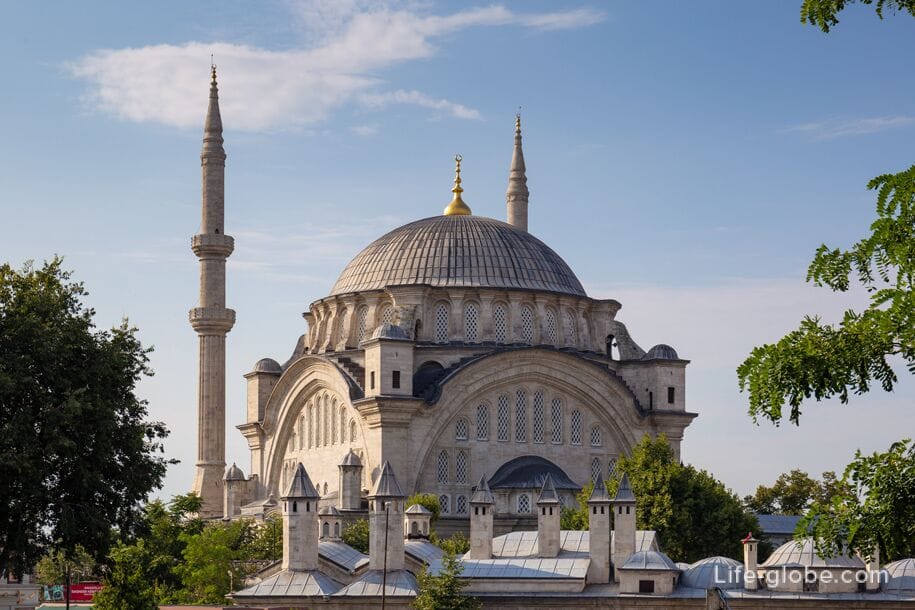

The Sinan Pasha Complex (Sinan Pasha Complex, Sinan Paşa Türbesi) was built by order of the Grand Vizier of the Great Sinan Pasha. The architect was Davud Agha, the successor and disciple of architect Sinan. According to the inscription on the fountain, the complex was completed in 1594.
The complex is an outstanding example of architecture of the classical period. There is a madrasah (school), a grave and a fountain on the territory of the complex. The buildings were constructed of carefully carved kufaki stone and surrounded by walls with iron windows. In the corner of the walls there is a fountain (sebil) for distributing water.
The tomb looks more elegant from the outside and simpler from the inside. In the 18th century, the garden behind the tomb became a cemetery.
Website: sinanpasha.org/tr .
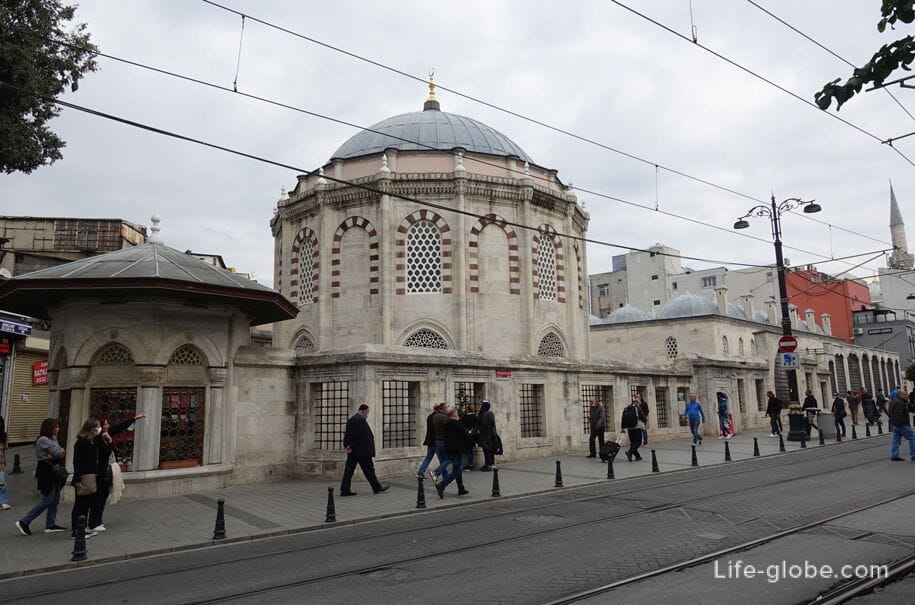
Bayazid Square or Bayazid (Beyazıt Meydanı) is a large city square with an exquisite monumental gate of the main entrance to Istanbul University.
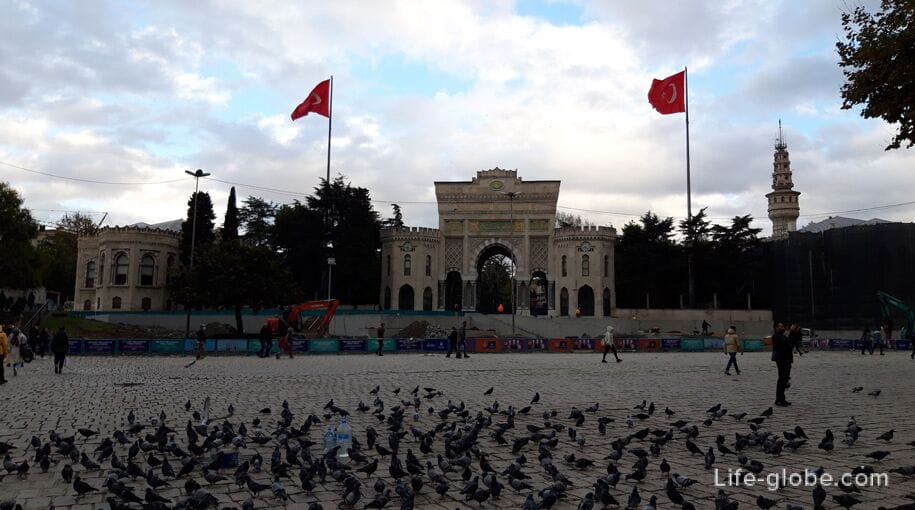
On the territory of the university, the Bayazyt Tower (Beyazıt Kulesi) is notable, which is a former fire observation tower built in 1828 by order of Sultan Mahmud II.
Today, the restored tower is illuminated every evening with lights of different colors, which are indicators of the weather for tomorrow (yellow light - fog; red light - snow; green light - rain and blue light - clear weather).
The tower is also open to visitors (by appointment), it houses a small museum and a spiral staircase, where 256 wooden steps, of which 180 lead to the observation deck and 76 - from the observation deck to the top of the tower.
The site of the tower with the terms of visits: beyazit-kulesi-anit-muzesi.

Bayazid Square is home to the Bayazid Grand Mosque (Beyazıt Camii), built in 1500-1506 by order of Sultan Bayazid II and which became the second major imperial mosque complex (after the Fatih Mosque) that appeared in Constantinople after its conquest in 1453.
There is a small garden behind the mosque, where the turbe (crypts) of Sultan Bayezid II, his daughter Selchuk Sultan and Grand Vizier Mustafa Reshid Pasha are located.
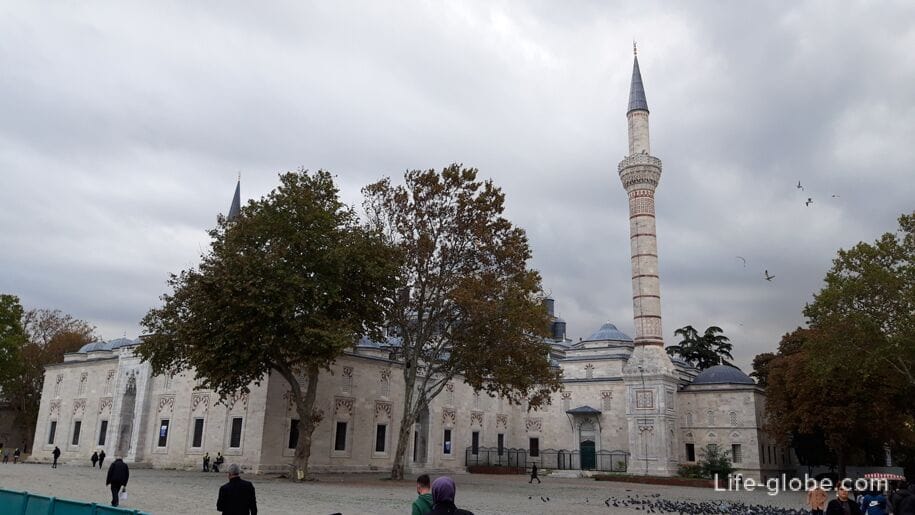
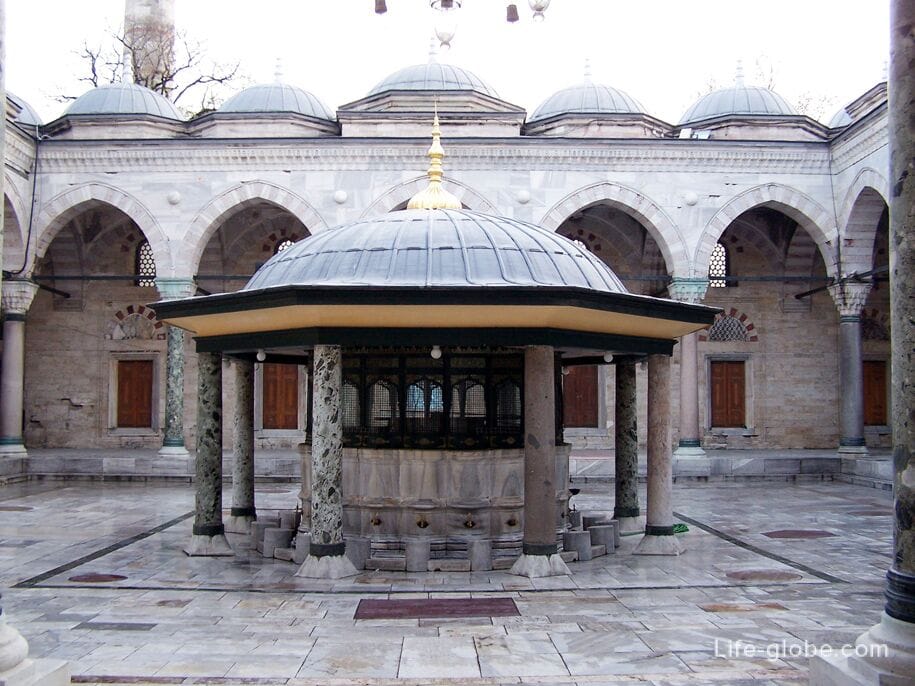
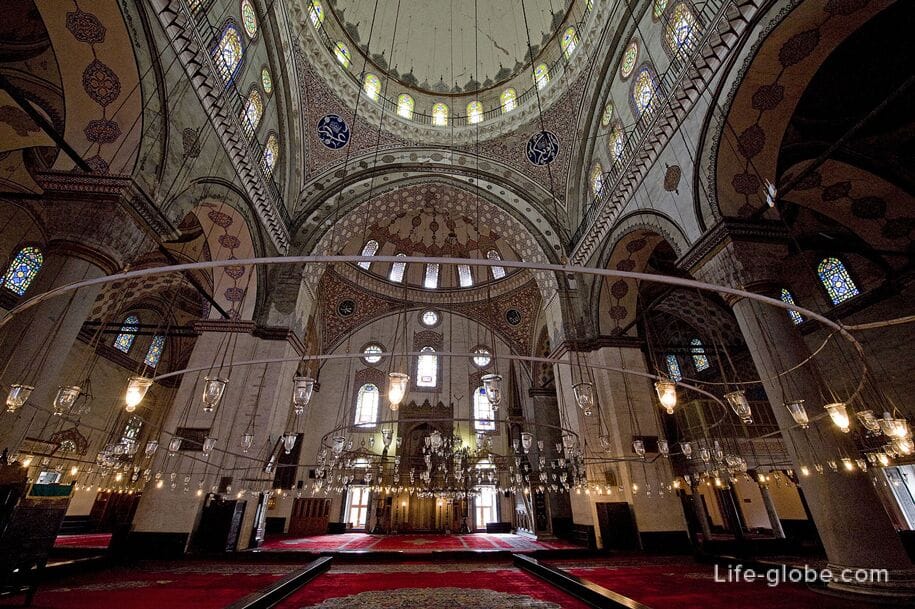
Istanbul Railway Museum (Istanbul Demiryolu Müzesi) is a museum of the history of Turkish railways, which has exhibits from the time of the Orient Express in its collection.
The museum is located in the building of the railway station "Marmaray Sirkeci Istasyonu".
Admission to the museum is free.
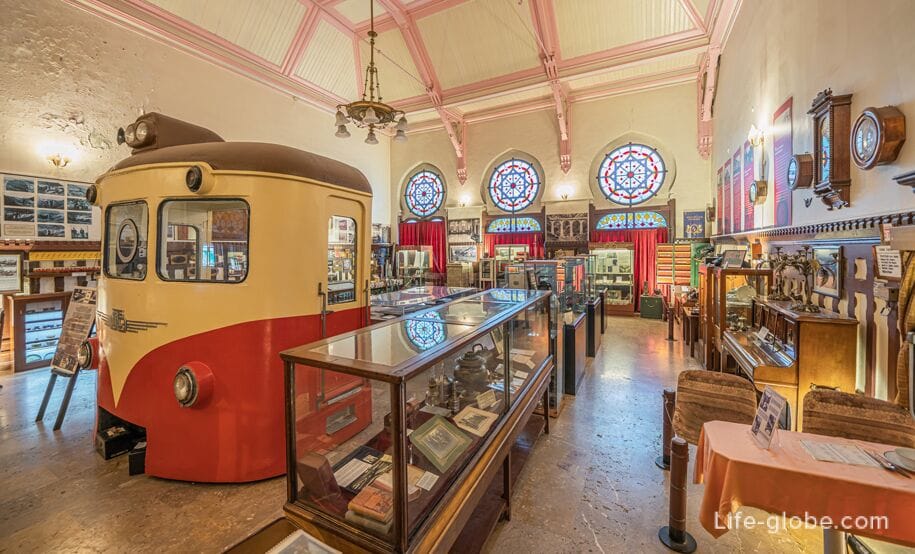
The Postal Museum (PTT Müzesi) contains an exposition of postal service items: stamps, telegraphs and telephones.
The museum is located in the building of the old post office.
Admission to the museum is free.
The museum's website: pttpulmuzesi.org.tr/MainPage.aspx .
The Museum of the Bank (Türkiye Iş Bankası Müzesi) is a collection of documents, banking equipment, communications, photographs, images and promotional materials related to the banking and corporate structure, which have witnessed both its own history and the economic development of Turkey since the founding of Türkiye Iş Bankası.
The museum is located in a historic building that was built as a post office building in 1890. The building was transferred to Türkiye Iş Bankası in 1927 and was used as a branch of the bank until 2004, after which it was transformed into a museum and opened to the public.
Muze ya website: turkiye-is-bankasi-muzesi/muze-binasi.
The new mosque (Yeni Cami, Yeni Jami) was originally called the Valide Sultan Mosque (Valide Sultan camii), and then the New Valide Sultan Mosque (Yeni Valide Sultan Camii).
The construction of the mosque as a complex was started in 1597 by order of Safiye Sultan, who was the wife of Sultan Murad III, and later Valide Sultan (Queen mother) of Sultan Mehmed III.
The appearance of this large mosque stands out against the background of the nearby buildings with 66 domes and semi-domes of pyramidal arrangement, as well as two minarets with three sherefe (balconies) on each. The mosque's windows are decorated with stained glass windows.
The mosque has a monumental courtyard (avlu), in the center of which there is a fountain for religious ablutions, but in fact the ritual of ablution is carried out from water taps near the southern wall of the mosque.
The new mosque is located on the square of the same name in the Eminönü district near the Galata Bridge (Galata Köprüsü).


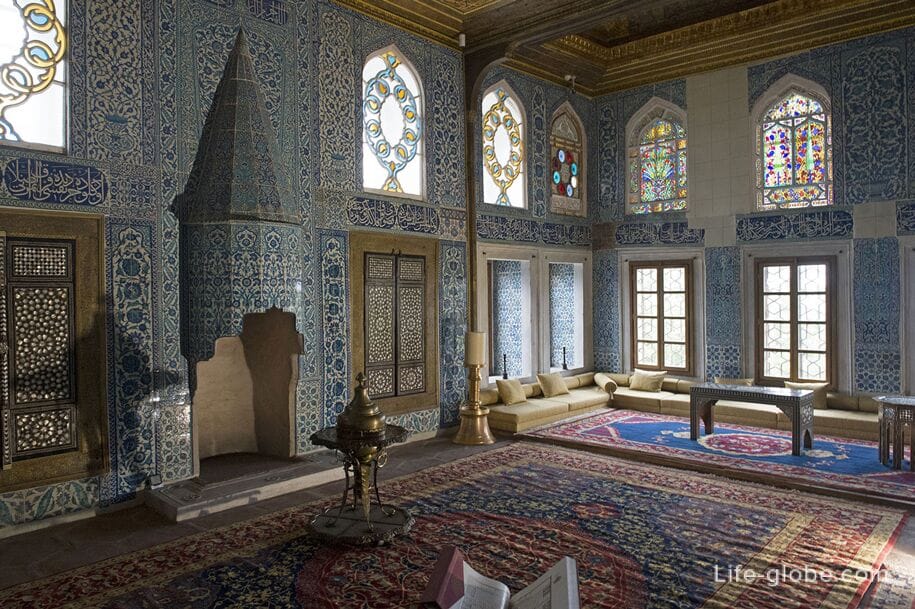
On the square between the New Mosque and the Egyptian Bazaar there is a pleasant sculpture "Seller and buyer of Turkish bagels". Also known as "Simit Seller" or "Bagel Seller".
Simit is a Turkish bagel, which is one of the most popular Turkish pastries sold on the streets of Istanbul.

Simit trade in Gulhane Park
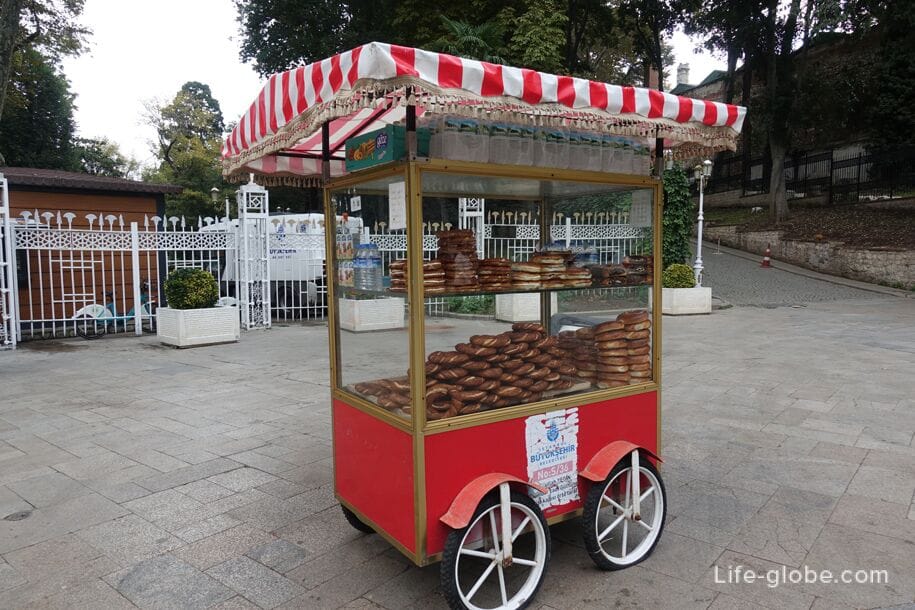
Suleymaniye (Süleymaniye Camii) is a masterpiece of architecture of the Ottoman Empire and the second most important mosque in the city after the Blue Mosque.
The mosque was built in 1551-1557 by order of Sultan Suleiman the Magnificent and was built as a complex with adjacent buildings to serve both religious and cultural needs.
Suleymaniye is a complex in which, in addition to the mosque itself with a monumental courtyard, the turbe (tombs-mausoleums) are notable, which are polygonal buildings topped with a massive dome. Inside the tombs rest: Suleiman the Magnificent, his beloved wife Hurrem (Roksolana) and their daughter Mihrimah, as well as other members of the ruler's family.
Since the mosque is located on a hill, its territory offers panoramic views of part of the Fatih district and the Golden Horn.
Mosque address: Süleymaniye Mah, Prof. Sıddık Sami Onar Cd. No:1, 34116 Fatih/Istanbul, Turkey.
Entrance to the mosque complex is free. More about the Suleymaniye Mosque...

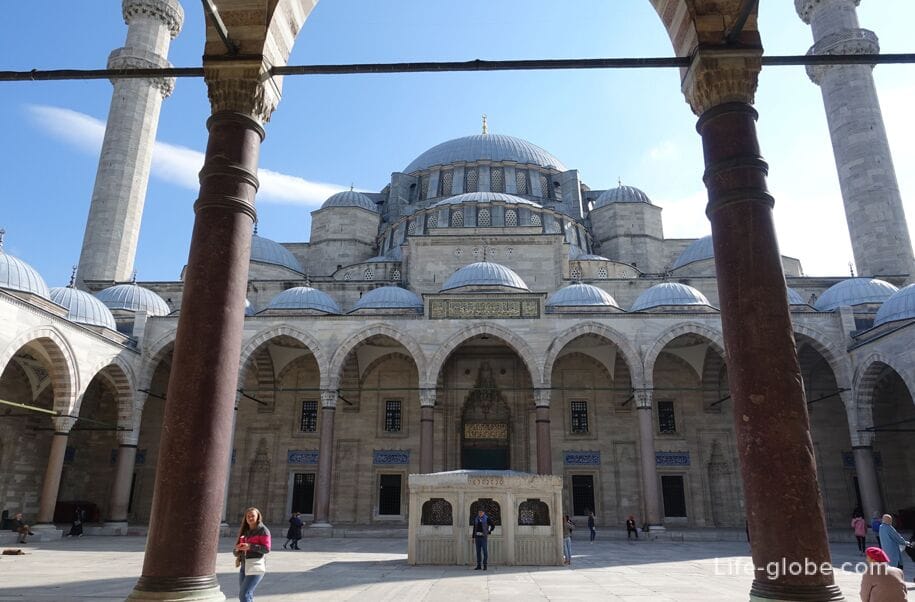
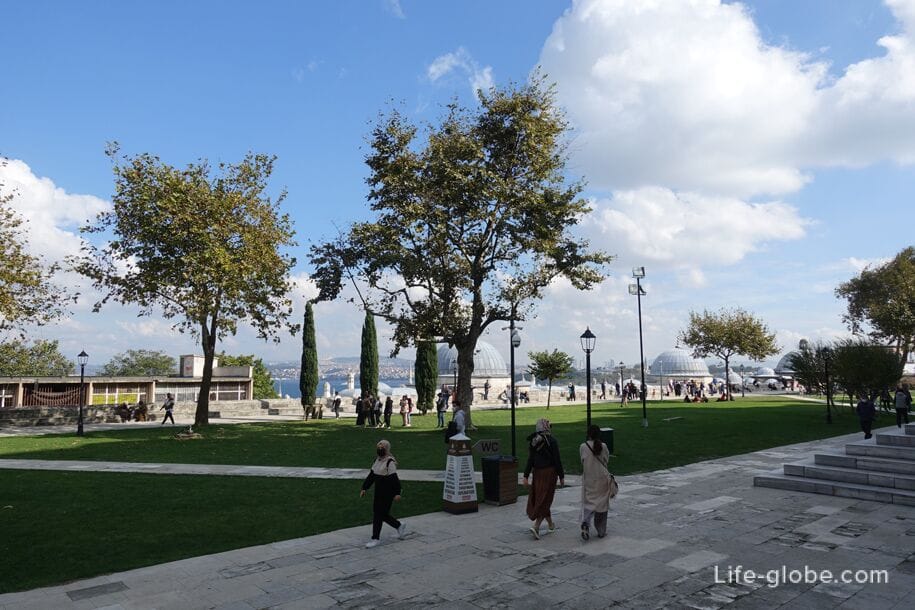
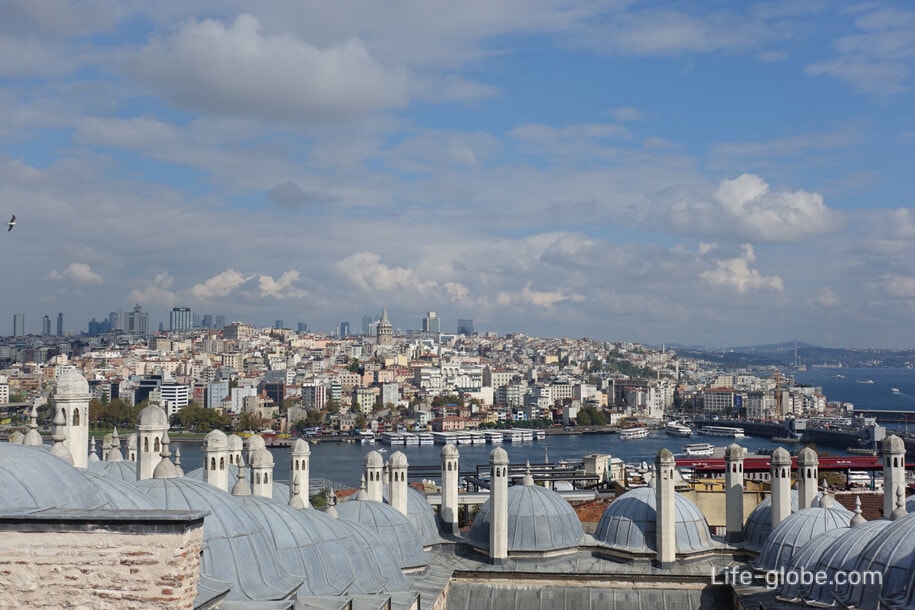
The Suleymaniye Hammam, which is part of the Suleymaniye Mosque complex, was built in 1550-1557 by the Turkish architect Mimar Sinan by order of Sultan Suleiman the Magnificent and named after him.
This hamam was visited by Sultan Suleiman himself and other Ottoman sultans. Today, anyone can visit this hamam.
Sulemaniye hamami is a traditional bathhouse consisting of three sections: cold, warm and hot. The temperature in the hot part can reach 40 degrees Celsius. In the hammam, men and women are together. Male employees, called tellaks, serve all clients, doing, including foam massages.
Address of the Suleymaniye Hammam: Süleymaniye, Mimar Sinan Cd. No. 20, 34116 Fatih/Istanbul, Turkey.
The site of the hammam Suleymaniye: suleymaniyehamami.com.tr . Learn more about the hammams of Istanbul...

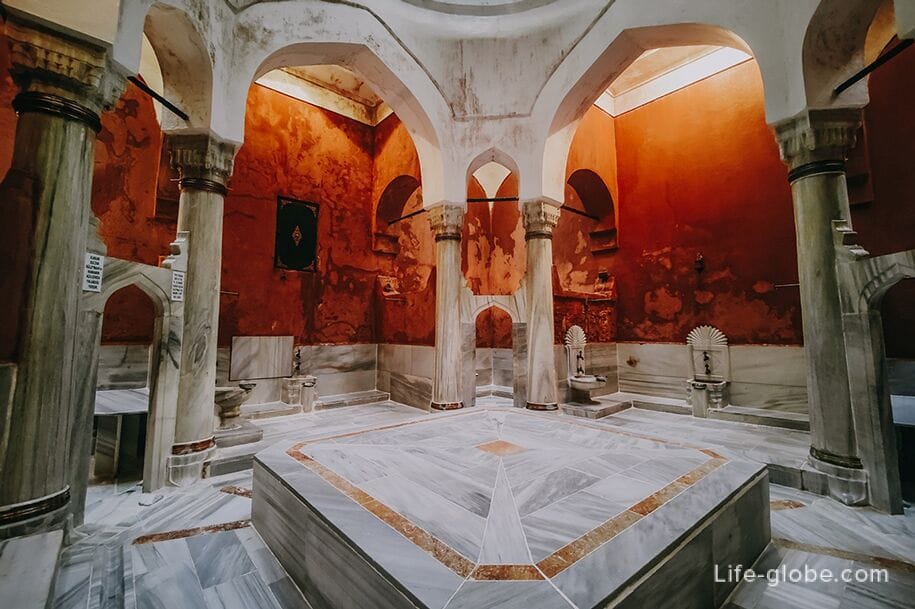
Laleli Mosque (Laleli camii) is an Ottoman imperial mosque of the 18th century in the Baroque style.
The mosque was built in the Ottoman Baroque style in 1760-1763 by decree of Sultan Mustafa III.
Laleli is also called the "tulip mosque", because of the shape of the dome and the word "Laleli". But most likely, the mosque was named after Saint Laleli Baba, whose grave was located next to the mosque.
The mosque complex consisted of a mosque, an imaret, a madrasah, a fountain and a mausoleum. Some of the buildings ceased to exist or were reconstructed during the city improvement works in the 20th century.
The mosque itself consists of a square prayer hall and a rectangular courtyard surrounded by a gallery with a fountain for ritual ablutions in the center.
The mausoleum of the mosque houses the turbe of Mustafa III and his son Selim III.
Mosque address: Kemal Paşa, Ordu Cd., 34134 Fatih/Istanbul, Turkey.
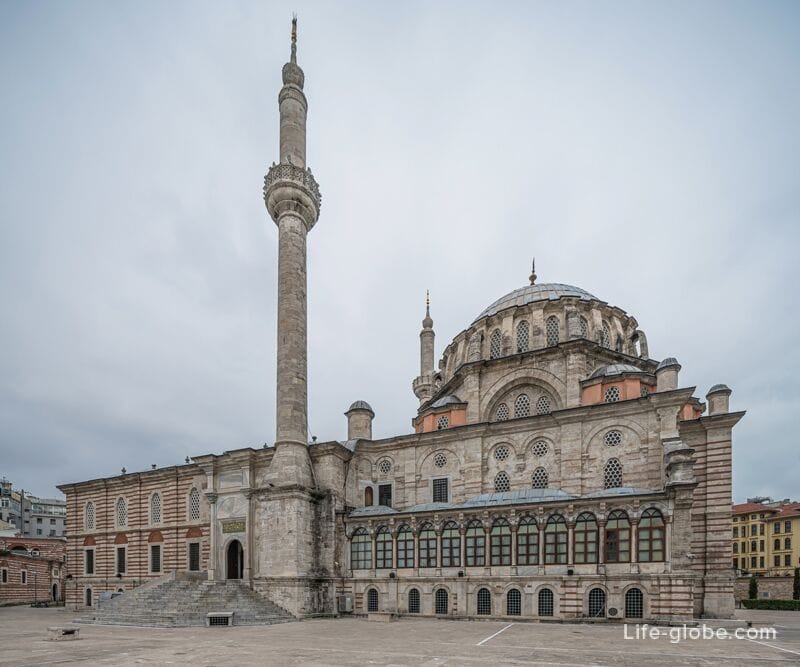

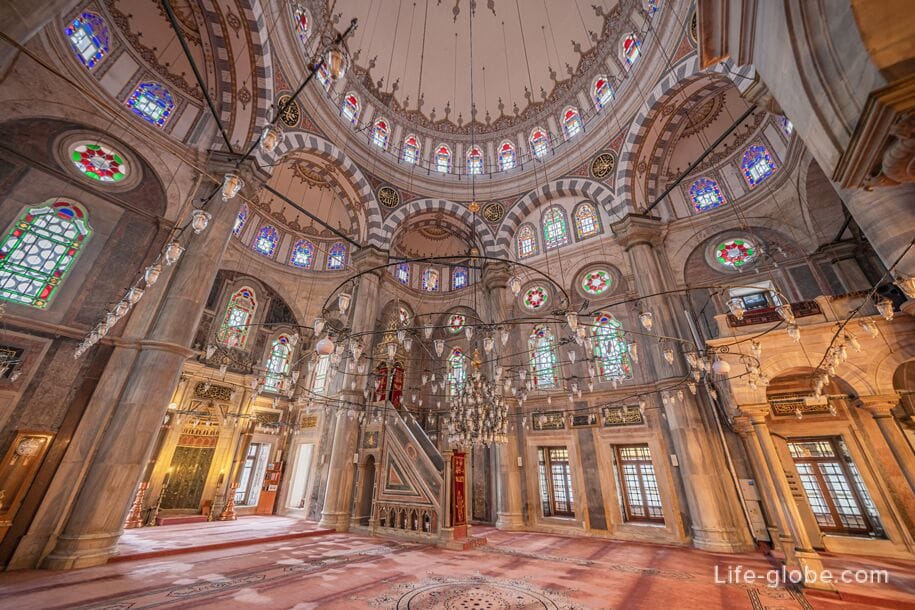
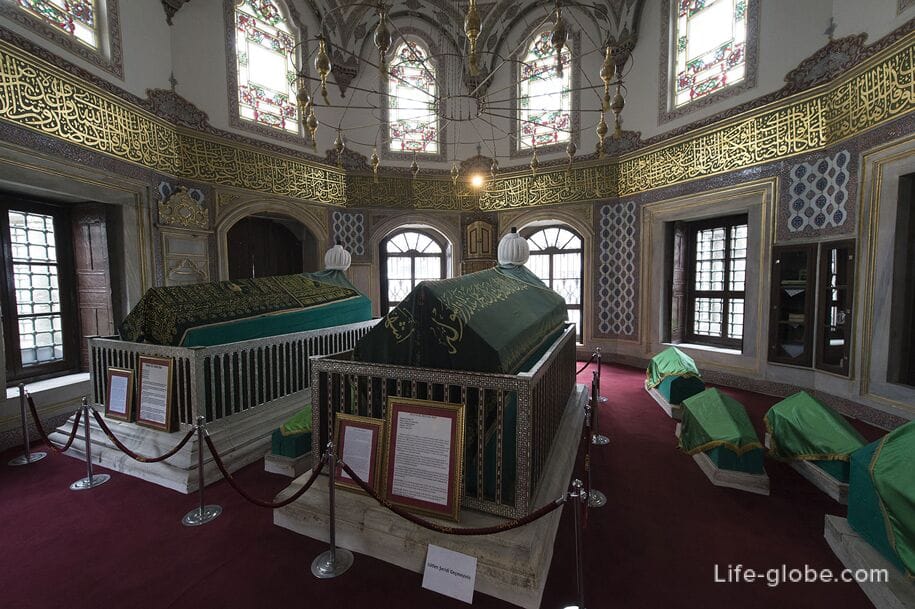
The Pertevniyal Valide Sultan Mosque, also known as the Aksaray Valide Mosque (Pertevniyal Valide Sultan Camii, Aksaray Valide Sultan Camii), is perhaps the most unusual mosque in Istanbul outwardly.
This Ottoman Imperial mosque was built one of the last in Istanbul during the Ottoman Empire.
The mosque was built in 1869-1871 for Pertevnial Sultan, the wife of Sultan Mahmud II and the mother of Sultan Abdul Aziz.
The mosque was designed by Sarkis Balyan as a new, at that time, architectural masterpiece.
The building is an example of Turkish Rococo with an admixture of classical Ottoman, Moorish, Turkish, Gothic, Renaissance and Empire styles. The structure of the mosque also seems to be based on Indian, North African and Andalusian architecture. The overall design of the mosque can be noted as a projection of the nascent power of the Ottoman women of that time.
The mosque has two minarets and a small (in diameter), but high dome.
The mosque consists of several different buildings. There are buildings that surround the central mosque and create a complex. These buildings consist of a tomb, a sabil, a chapel, a library and a madrasah.
The interior of the mosque, as well as its facades, is elaborately decorated and stylized with bold oriental motifs. There are classic Ottoman details on the walls: blind niches, flourishes, arabesques and floral arrangements in the Chinese style. The interior also has a simple marble mihrab and a minbar.
The grave of Sultana Pertevnial is located in the central mosque.
Mosque address: Iskenderpaşa, Atatürk Blv. No:3, 34080 Fatih/Istanbul, Turkey.
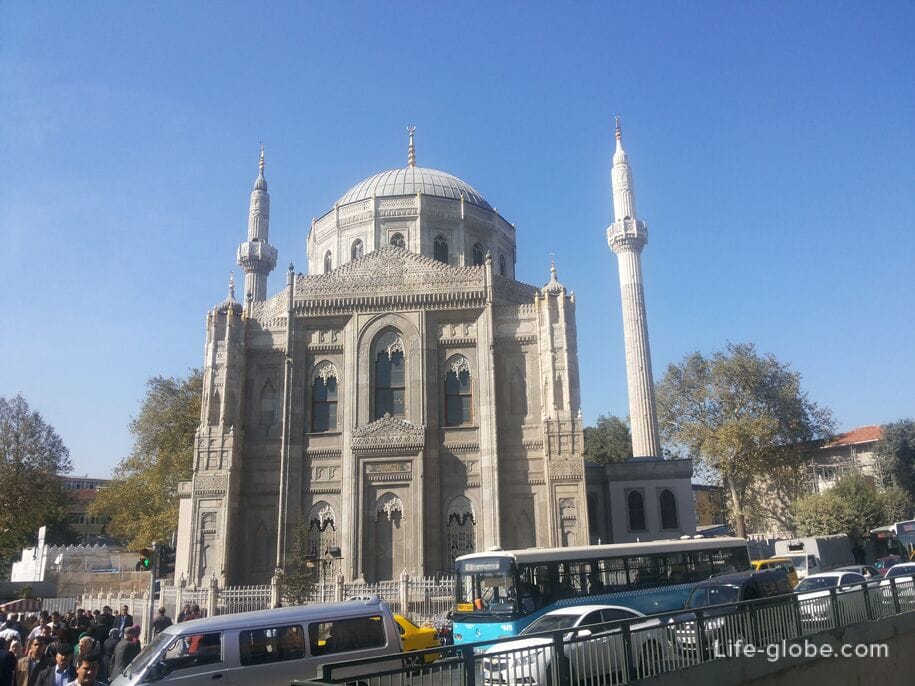
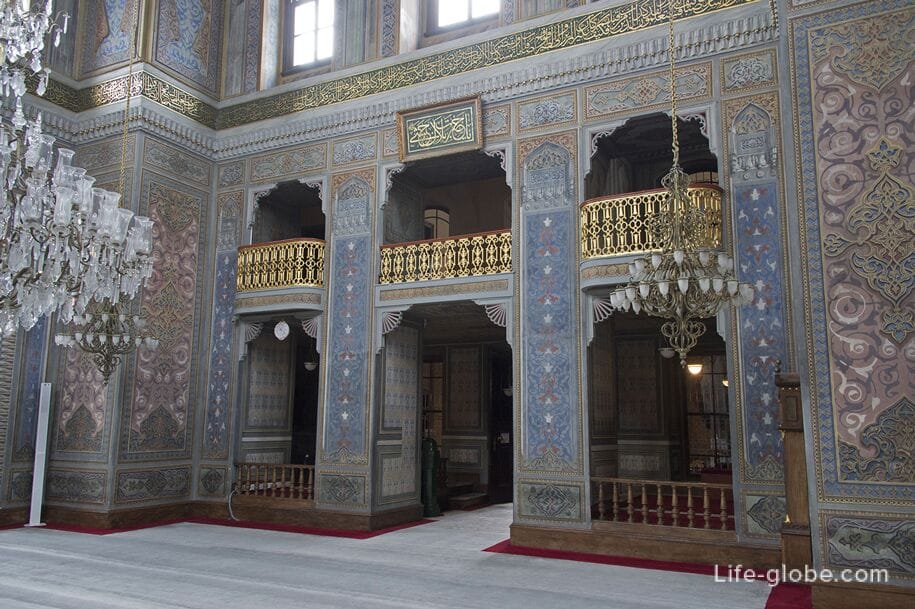
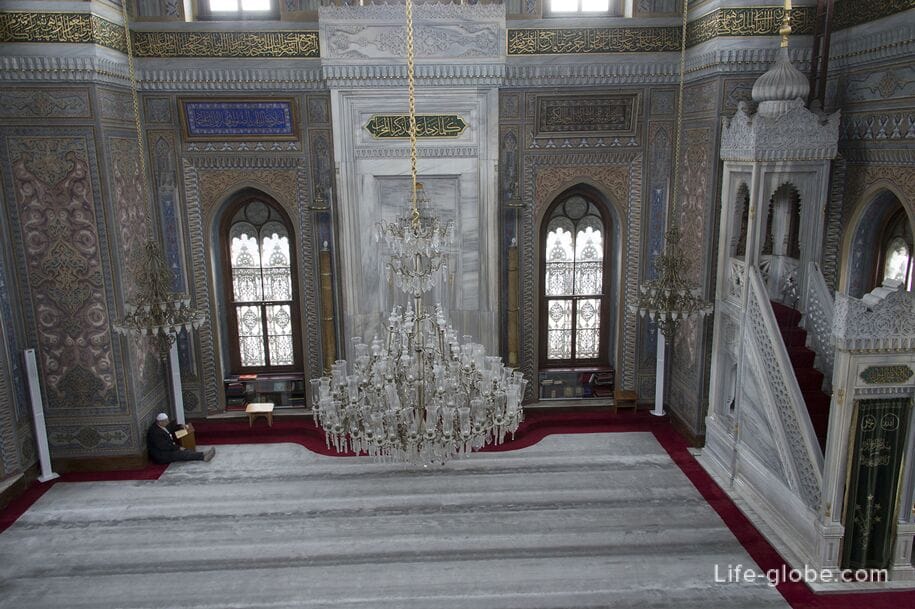
From the former extensive network of aqueducts of Istanbul and the suburbs, the remains of the large aqueduct of Valent or Bozdogan (Bozdogan Kemeri) are now particularly popular.
The aqueduct was created by the Romans in the 4th century, was a very important stage in the development of the water supply system of Constantinople and connected the two hills of the city.
Today, the aqueduct crosses the busy highway of the city in the Fatih district.
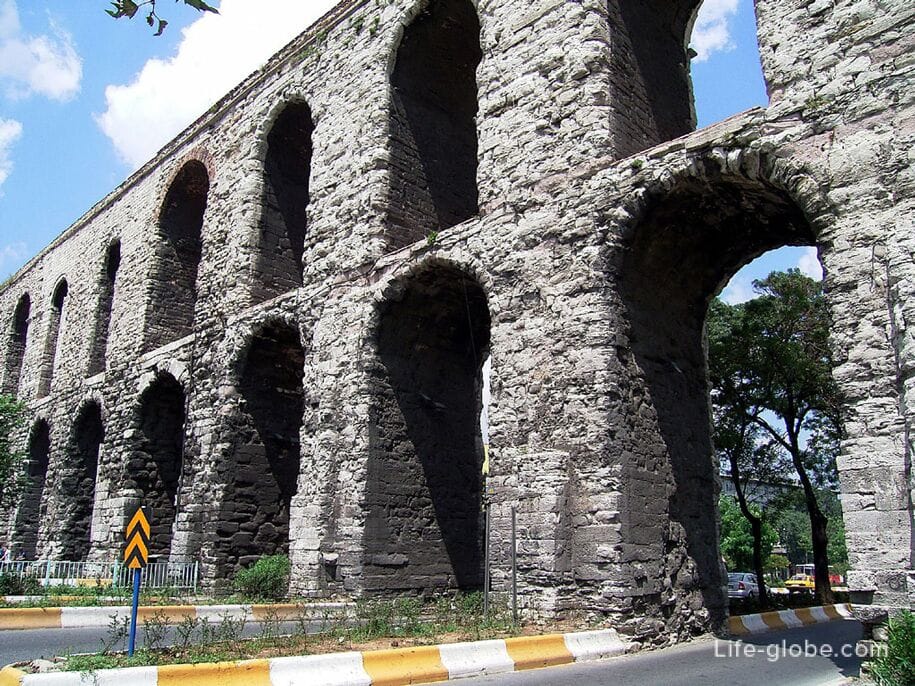
The Marcian or Marcian Column (Kıztaşı, "maiden stone") is a Roman triumphal granite column on a carved marble pedestal, which is one of the oldest monuments in Istanbul.
The column was erected in the 450s by the prefect of Constantinople, Tatiana, and dedicated to Emperor Marcian.
The column is made of Egyptian granite, and now has a height of 17 meters.

The Pantokrator Monastery or Molla Zeyrek Mosque (Molla Zeyrek Camii) is the second largest monument of Byzantine architecture, preserved from Constantinople, after the Hagia Sophia Mosque.
The monastery is a complex that is known as the Monastery of Christ the Almighty (Christ Pantocrator, Pantokrator Manastırı), built since 1118 by the Byzantine Empress Irina Komnena.
During the history it was an Orthodox monastery, an imperial palace and a mosque.
Today, the complex is listed as a UNESCO World Heritage Site.
Near the mosque there is a panoramic cafe with a beautiful observation deck.
Address: Zeyrek, Ibadethane Sk. No:2, 34083 Fatih/Istanbul, Turkey. Learn more about the Zeirek Mosque and the panoramic observation deck...
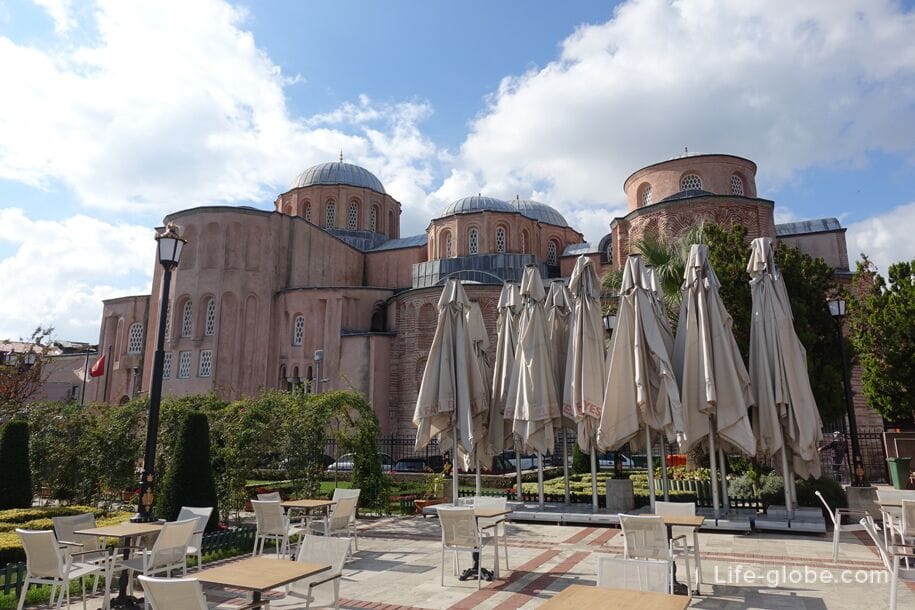
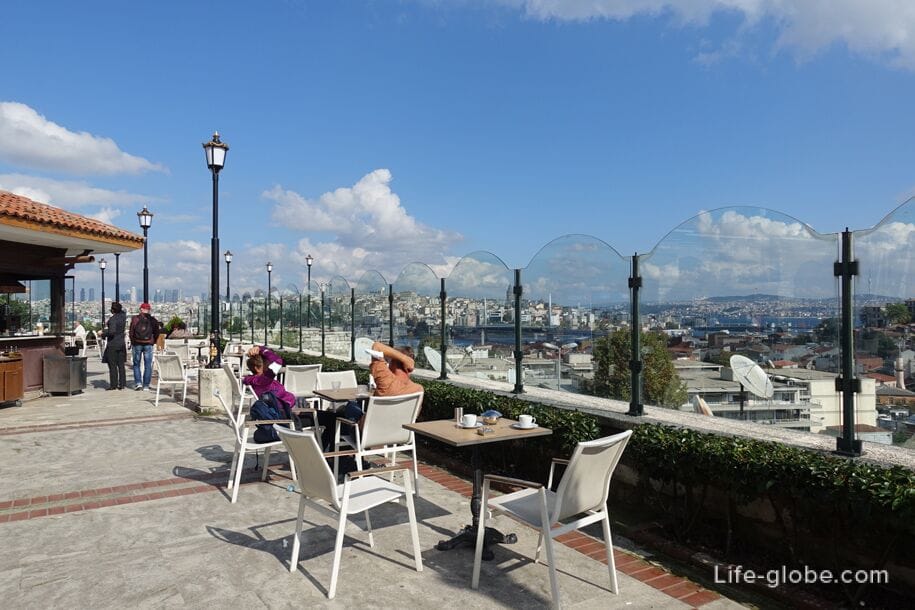
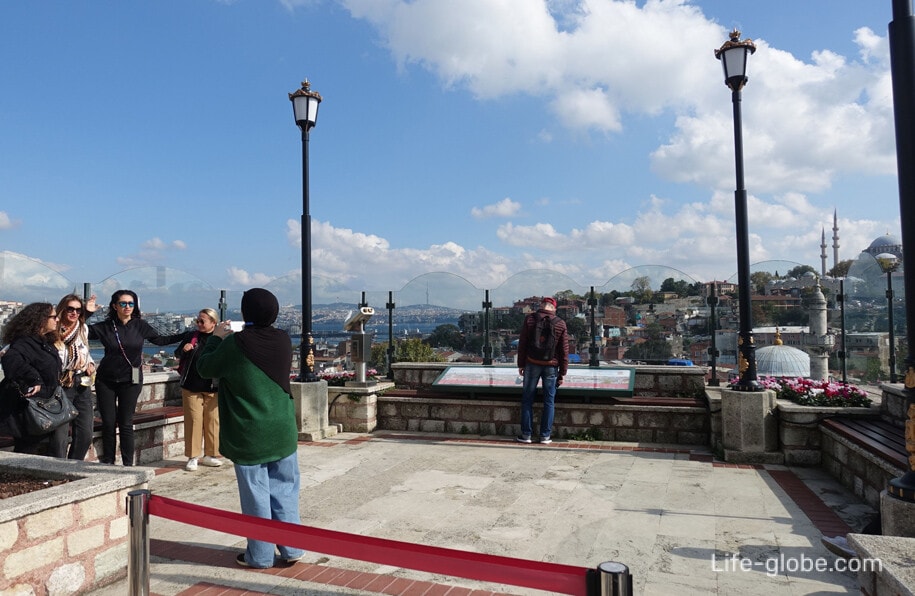

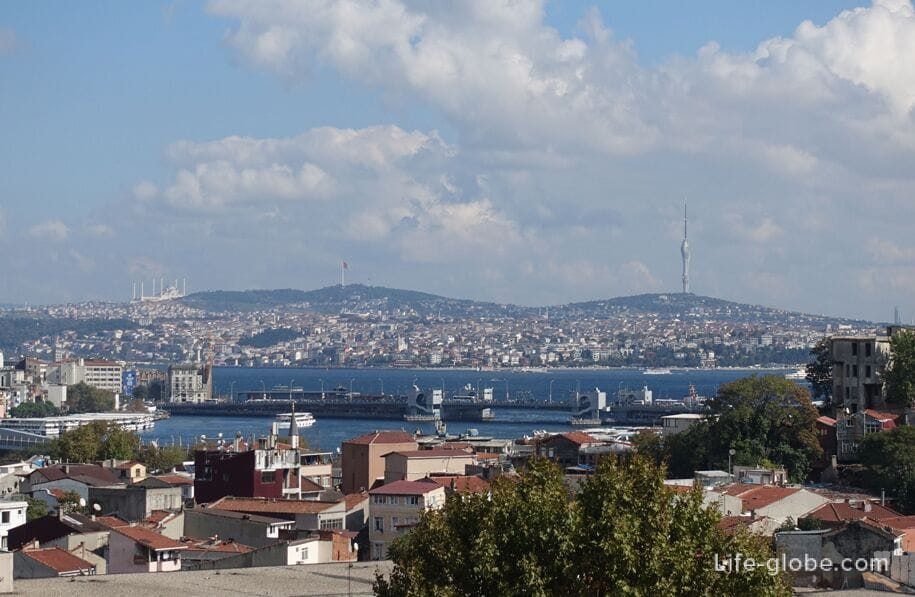
The Toy Museum in Balat (Balat Oyuncak Müzesi) contains collections of toys, including rare and unique cast cars, detailed dollhouses, a 50-year-old collection enriched with scenes from popular and classic cartoons.
On the top floor of the museum there are collections decorated with the concept of a giant train. The museum also presents Turkey's largest collection of tin soldiers and dioramas depicting scenes from films of the 80s.
Entrance to the museum is paid.
Museum address: Yavuz Sultan Selim, Abdülezelpaşa Cd. No:65, 34087 Fatih/Istanbul, Turkey.
Website of the Toy Museum in Balat: balatoyuncakmuzesi.com .
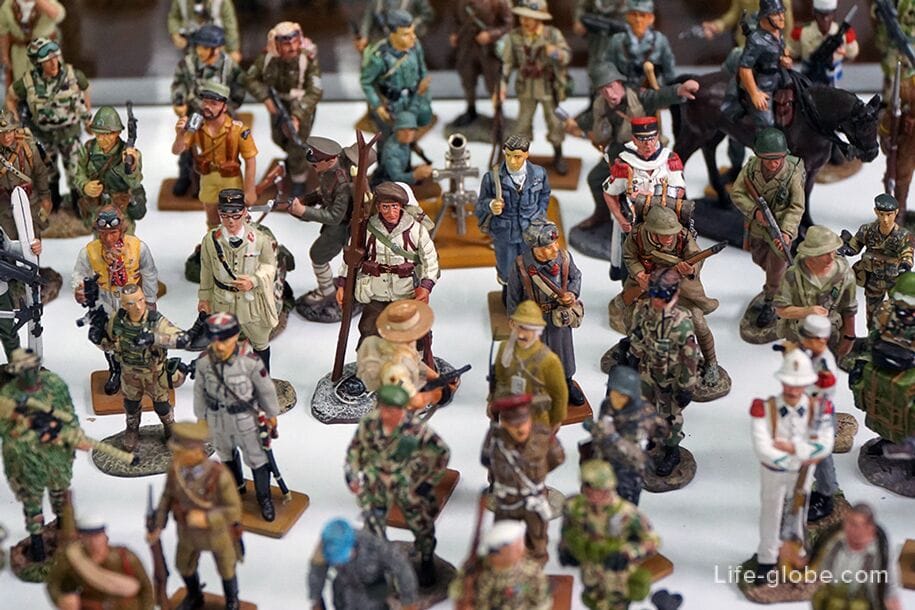
Balat is a traditional Jewish quarter in the Fatih district, located near the waters of the Golden Horn.
Today, the area is a popular place among visitors to the city and attracts attention, first of all, with colorful old buildings and stairs, streets with bright decorations and street cafes decorated in authentic and ruin-style.
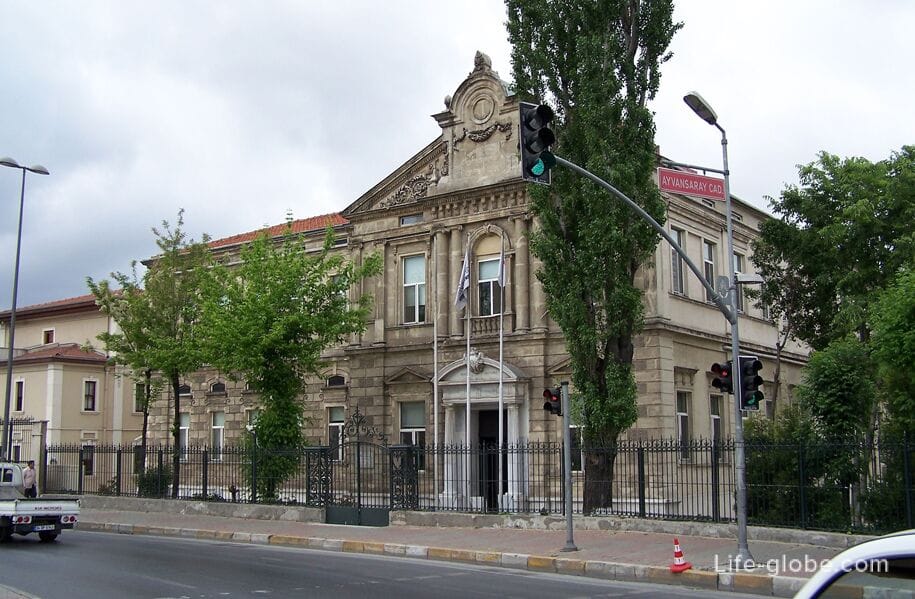
The most popular in the area is the street, which is a slope with a staircase calledMerdivenli yokush (Merdivenli Yokuş Sokağı). The best pictures on the Internet and guidebooks from the area can be seen from this street.
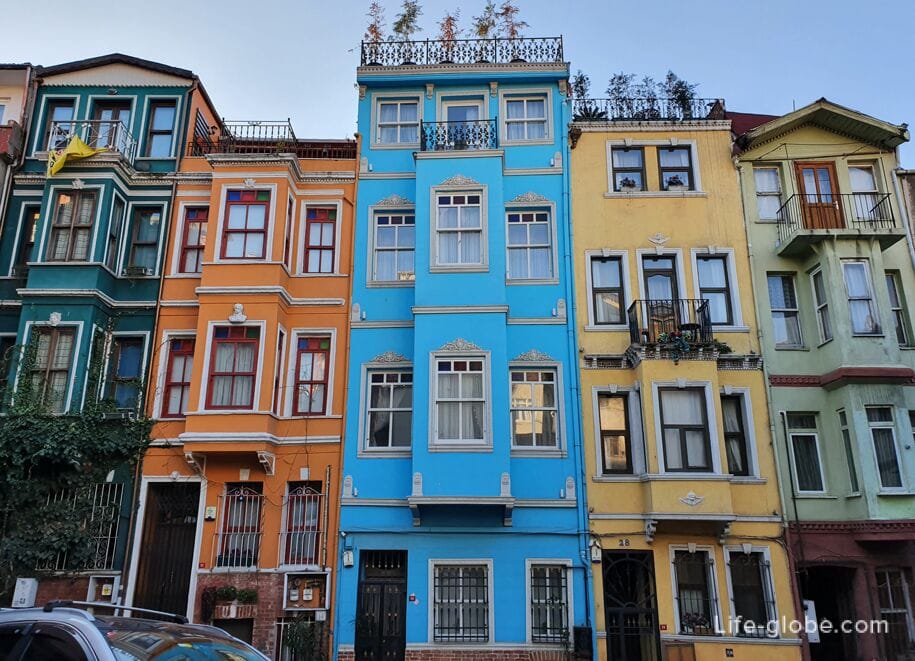
In the Balat district there is the oldest synagogue in Istanbul - the Ahrida Synagogue (Ahrida (Ohrid) Sinagogu), which was built by Romaniots (Macedonian Jews) in the 1430s.
The most valuable attraction of the synagogue is the ancient Torah scrolls.
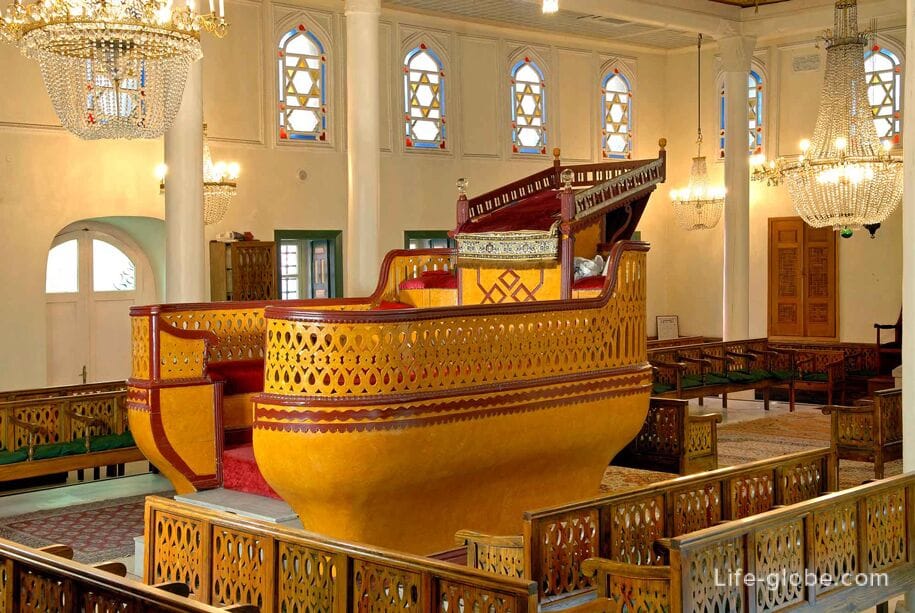
Among other shrines of Balat, including Greek and Armenian, stand out:
- the mosque of Selim Yavuz or Selim the Terrible (Yavuz Sultan Selim Camii) is an Ottoman imperial mosque of the 16th century with narrow minarets, a large dome, and a view of the Golden Horn Bay.
The mosque is also known as Selim I Mosque or Sultan Selim Yavuz Mosque, and is the second oldest surviving imperial mosque in Istanbul.
The mosque was completed in 1527-1528. The construction was commissioned by the Ottoman Sultan Suleiman the Magnificent in memory of his father Selim I, who died in 1520.
In the garden behind the mosque is the turbe of Sultan Selim I, built in 1523. The second octagonal turbe with a long inscription carved on the masonry outside contains the tombs of the four children of Suleiman the Magnificent and dates back to 1556. The third turbe belongs to Sultan Abdul-Majid I and was built shortly before his death in 1861.
The mosque's garden offers panoramic views of Istanbul and the Golden Horn Bay;
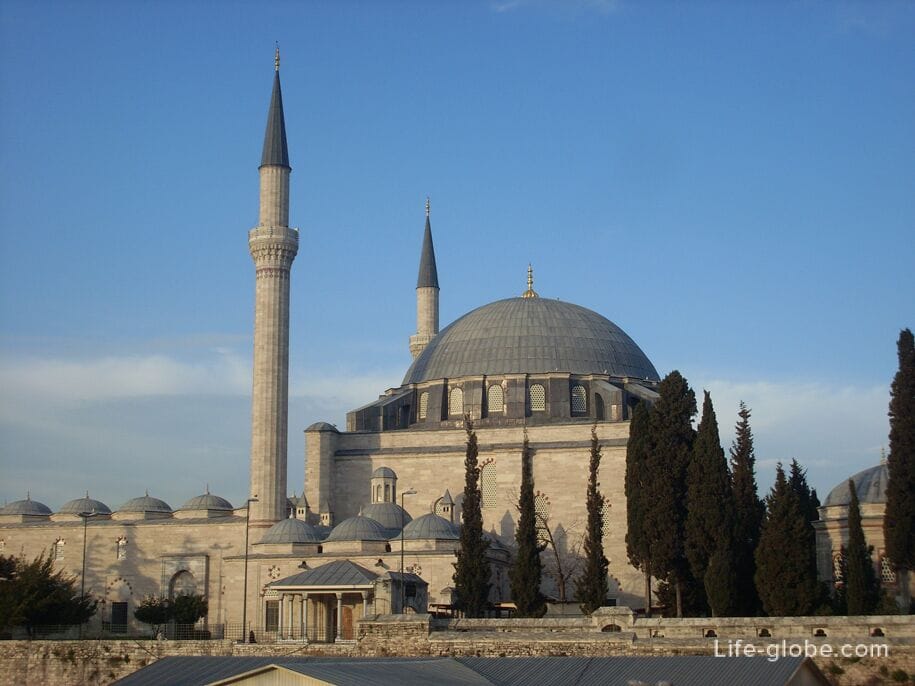



- The Church of the Theotokos of Pammakarista (Fethiye Camii, Mosque of Conquest) is a former Greek church of the Pammakaristos monastery, turned into the Fethiye Mosque in 1591, with exquisite mosaics and late Byzantine architecture.
Most scholars believe that the church was built between the 11th and 12th centuries, while others attribute the original building to the 8th century.
The building serves as one of the most important examples of Palaiologan architecture of Constantinople and the last pre-Ottoman architectural monument. The shrine also has the largest number of Byzantine mosaics in Istanbul after Hagia Sophia and the Choir Church;
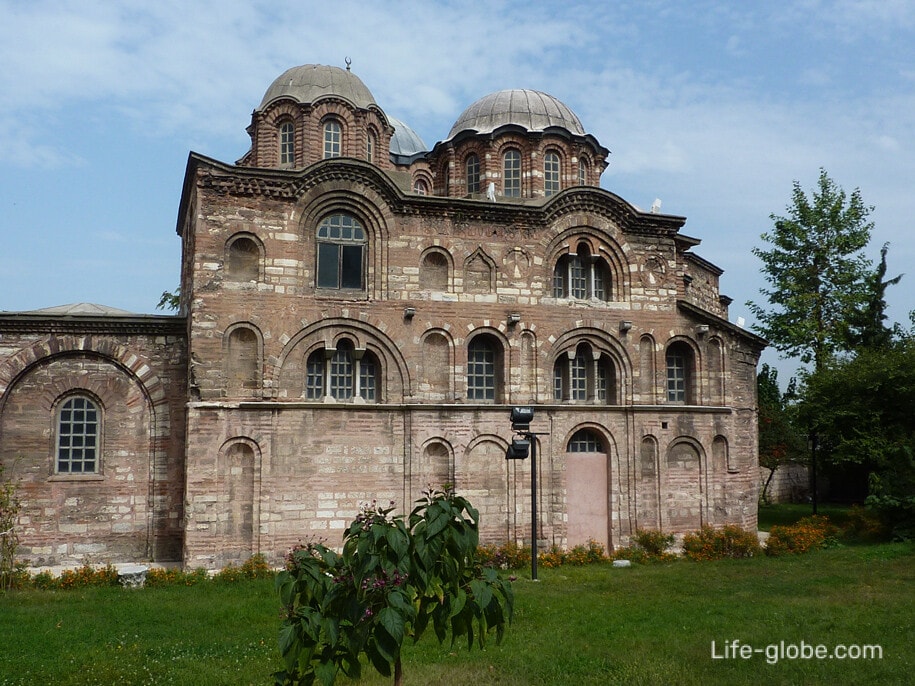
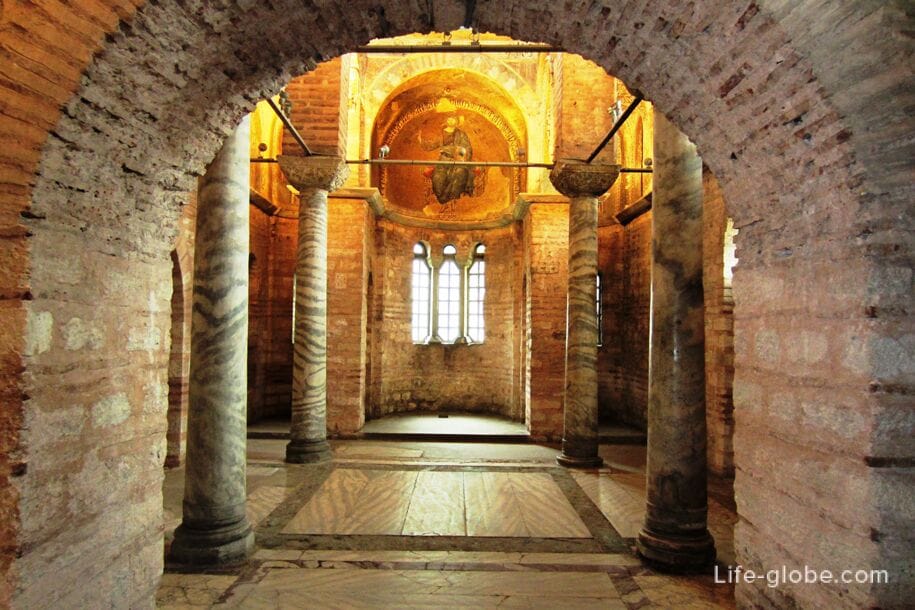
- The Bulgarian Church of St. Stephen (St. Stephen's Bulgarian Orthodox Church / Sveti Stefan Kilisesi) is an elegant Orthodox church in honor of the First Martyr Stephen, belonging to the Bulgarian community of Istanbul.
The church is known for being made of prefabricated cast-iron elements in the neo-Byzantine style. It is one of the few remaining temples in the world made of this material.
The richly ornamented church is a three-domed cruciform basilica, the altar of which faces the Golden Horn, and a 40-meter belfry rises above the narthex, six bells of which were cast in Yaroslavl;
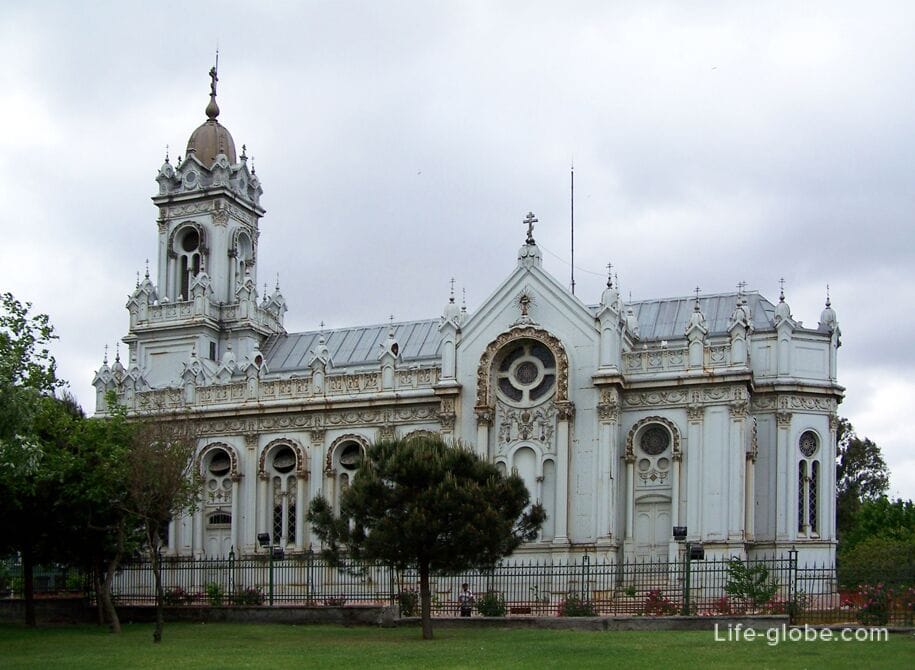
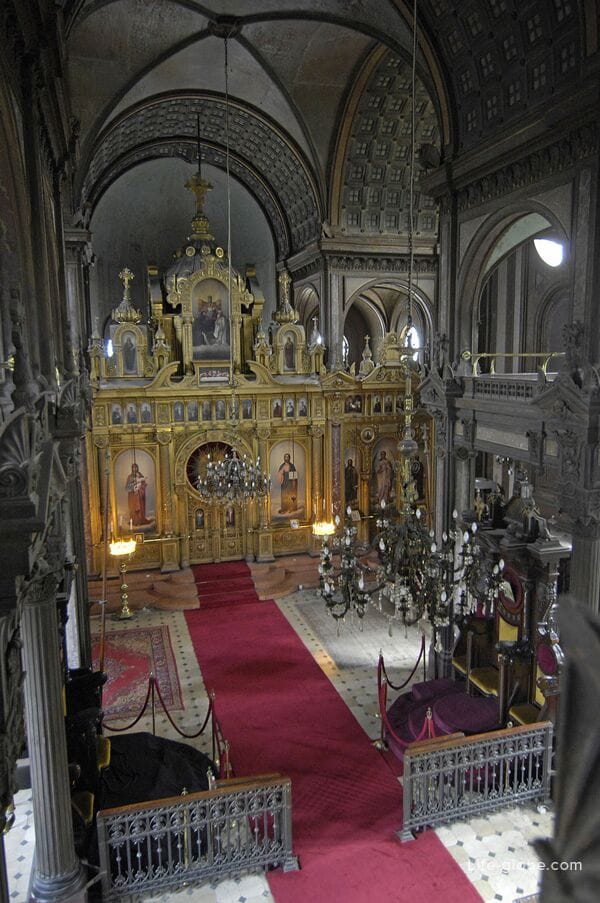
- St. George's Cathedral (Aya Yorgi Kilisesi) is the main Orthodox cathedral of Istanbul, which, since about 1600, has been the seat of the Ecumenical Patriarchate of Constantinople.
This church, dedicated to the Christian martyr St. George, is the venue for numerous important services.
The church has been rebuilt many times during its history.
The shrine has a rich altar, an iconostasis, mosaics in the interior, relics of saints, ancient icons and part of the column "flagellation pillar" - the most important shrine is a pillar with the remains of a ring to which, according to legend, Jesus Christ was chained.
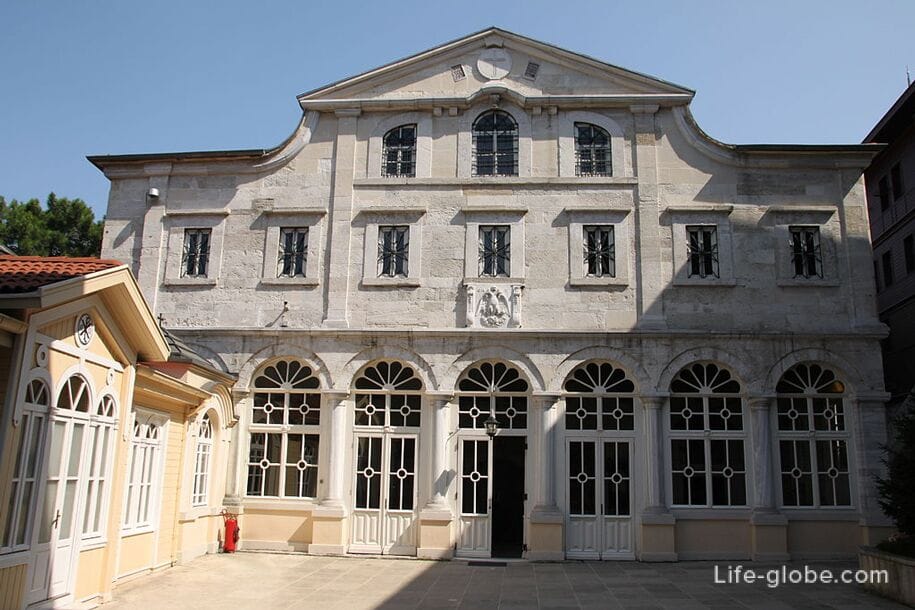
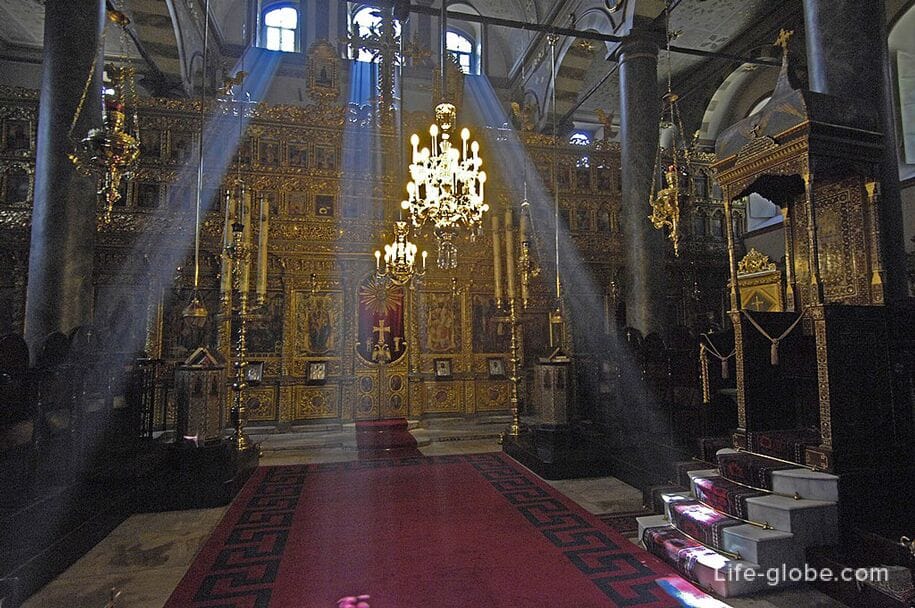
The Blachernae Palace or Tekfur Palace (Tekfur Sarayı, Tekfur sarayı) today is the remains of a former palace built for the son of the Byzantine emperor.
The Tekfur Palace was one of the palaces used by the emperors during the last period of Byzantine palaces. It was ideally positioned to protect the emperors from possible rebellion. The palace was also used as a workshop for the manufacture of glass and tiles during the Ottoman Empire. During the 57-year-old Latin invasion of Istanbul, the Tekfur Palace and almost all other imperial buildings around it were destroyed.
Today, part of the ruins of the palace have been restored, and are used as a museum with part of the walls, an interior room with an exposition, a courtyard, an elevator and an observation deck.
Entrance to the palace is paid.
Palace address: Ayvansaray Mahallesi, Şişhane Caddesi, 34087 Fatih/Istanbul.
Website of the Blachernae Palace: tekfursarayi.istanbul. More about the palaces of Istanbul...

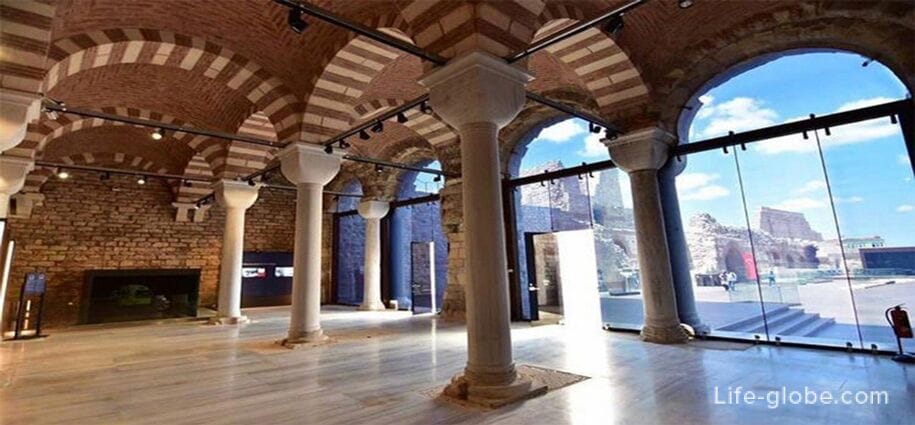
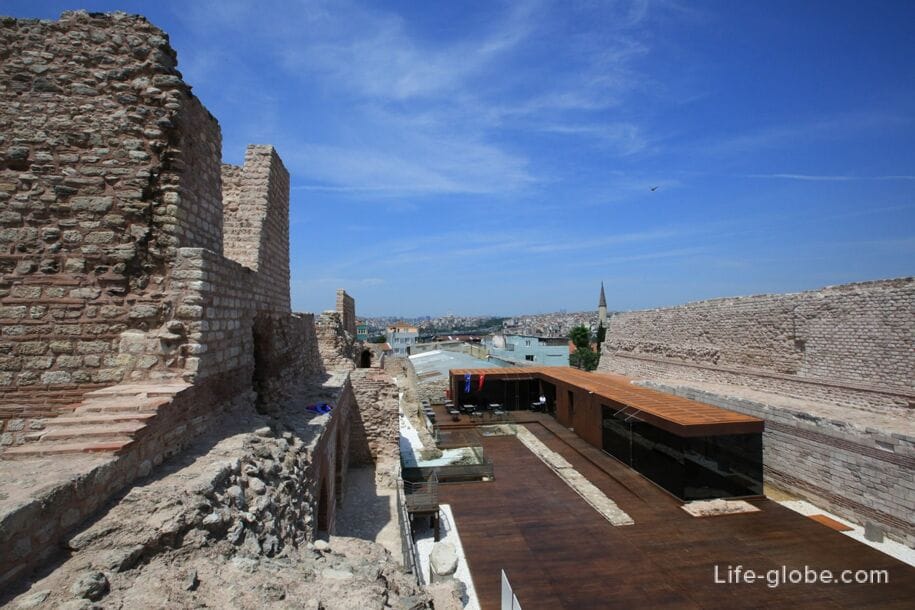
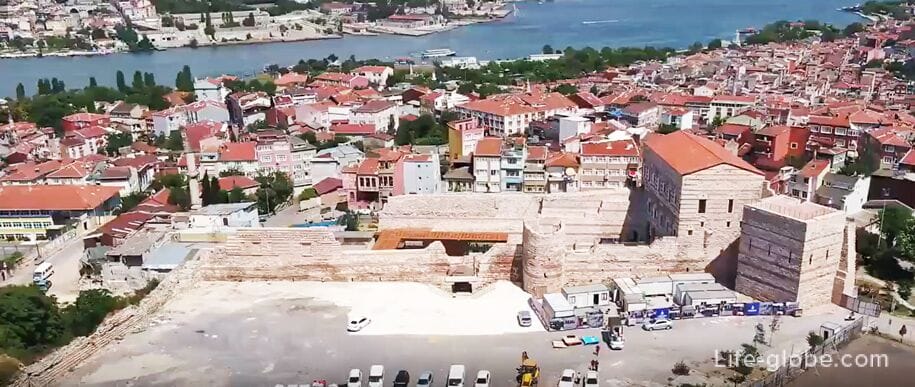
The Kariye Mosque or the Monastery of Chora, also the Church of the Holy Savior in Chora (Kariye Camii) is a medieval Greek Orthodox church used today as a mosque.
The Church of the Savior in the Choir is built in the style of Byzantine architecture. In the 16th century, during the Ottoman Empire, the Christian church was turned into a mosque. It became a museum in 1945 and was turned into a mosque again in 2020.
The interior of the building is covered with some of the oldest and best preserved Byzantine Christian mosaics and frescoes. In addition to mosaics, the mosque also has colorful and patterned marble decorations.
After the building was converted from a church into a mosque, Christian symbols: inscriptions, frescoes and mosaics were covered with fine paint and lime whitewash, without destroying the building, so it has survived to this day.
Mosque address: Dervişali, Kariye Cami Sk. No:18, 34087 Fatih/Istanbul, Turkey. More about the shrines of Istanbul...


The fortress of Yedikule or Yedikule (Yedikule Hisari), which translates as "fortress of the seven towers" or "dungeon of the seven towers", was built in 1458 under Sultan Mahmed II the Conqueror.
The fortress of seven towers was created by adding three new towers and completely covering a section of the ancient walls of Constantinople, including the Byzantine twin towers and pylons that originally formed the main entrance gate to the city - the Triumphal Golden Gate (Altınkapı), built by the Roman emperors Theodosius I and Theodosius II.
The fortress was created as an official treasury fortress of the Empire, where each of the towers functioned as a repository of precious goods, documents, weapons, coins, gold and silver bars. In the 16th century, the treasury was moved to the inner part of the Topkapi Palace (Topkapı Sarayı) and after that the "Seven Towers" became a prison for high-ranking prisoners.
During the Napoleonic Wars, the fortress was the prison of many French prisoners of war, including the writer and diplomat Francois Pouqueville.
Today, the Yedikule Fortress is a museum of the Yedikule dungeon (Yedikule Hisarı Müzesi).
Yedikule is located near the waters of the Marmara Sea, at the address: Yedikule, Yedikule Meydanı Sk. No:9, 34107 Fatih/Istanbul, Turkey.
The website of the Yedikule Museum: yedikulehisari.com. Learn more about the towers, fortresses, castles, walls and gates of Istanbul (fortifications of Istanbul)...
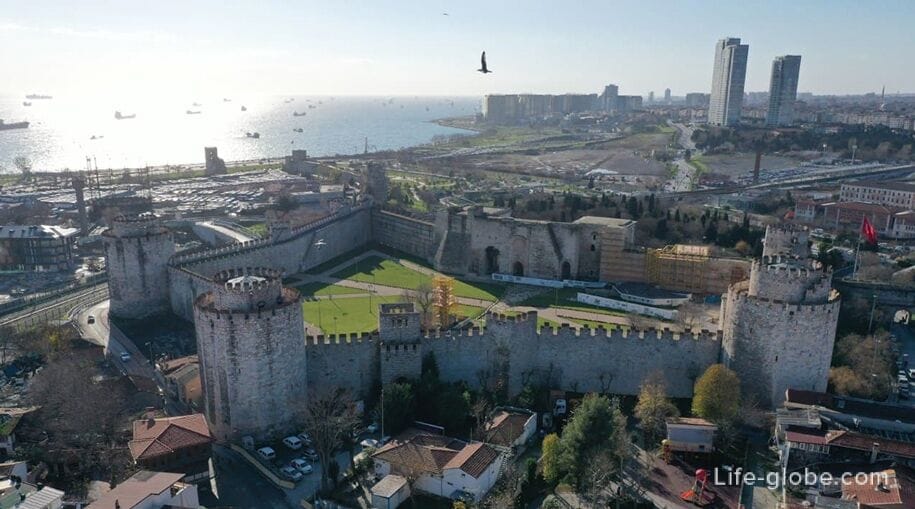
From the embankment and a small park area near the waters of the Marmara Sea behind the Topkapi Palace (the place where the Atatürk Anıtı monument is located), you can admire the views of the Bosphorus, the Golden Horn, the European and Asian sides of Istanbul, and partly the Marmara Sea.
This place is popular during sunsets. Learn more about the observation decks and observation points of Istanbul...
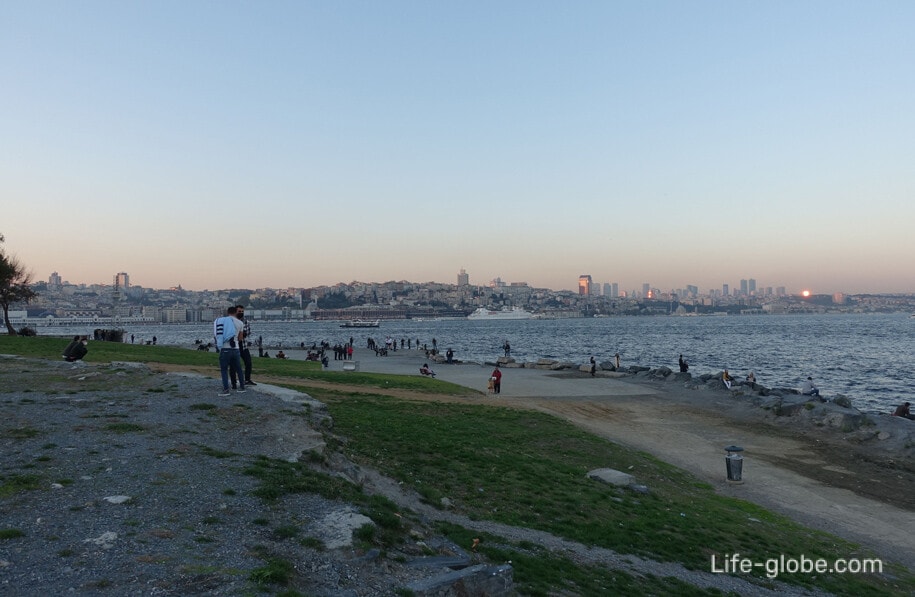
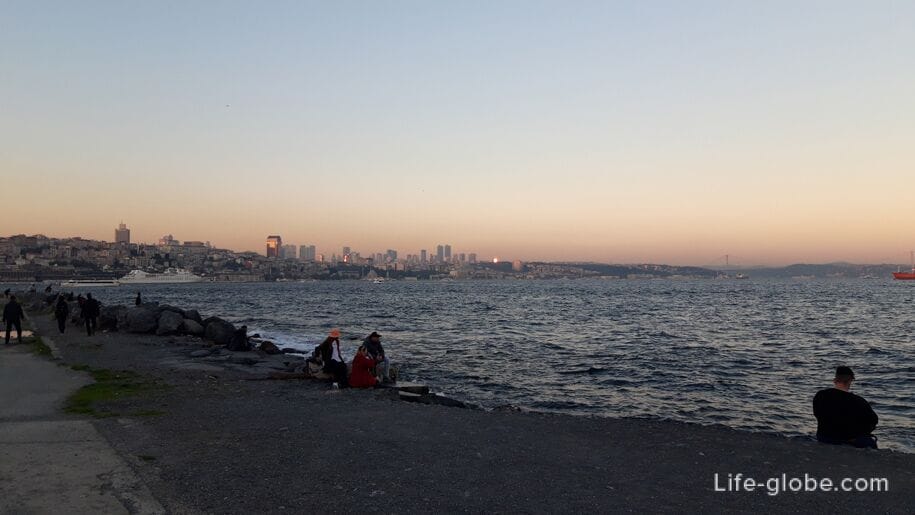
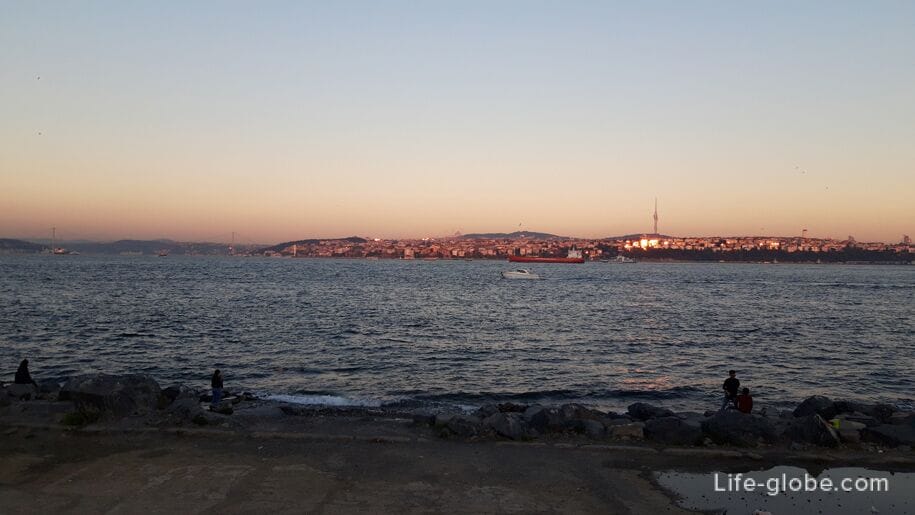
Photo of the Ataturk Monument
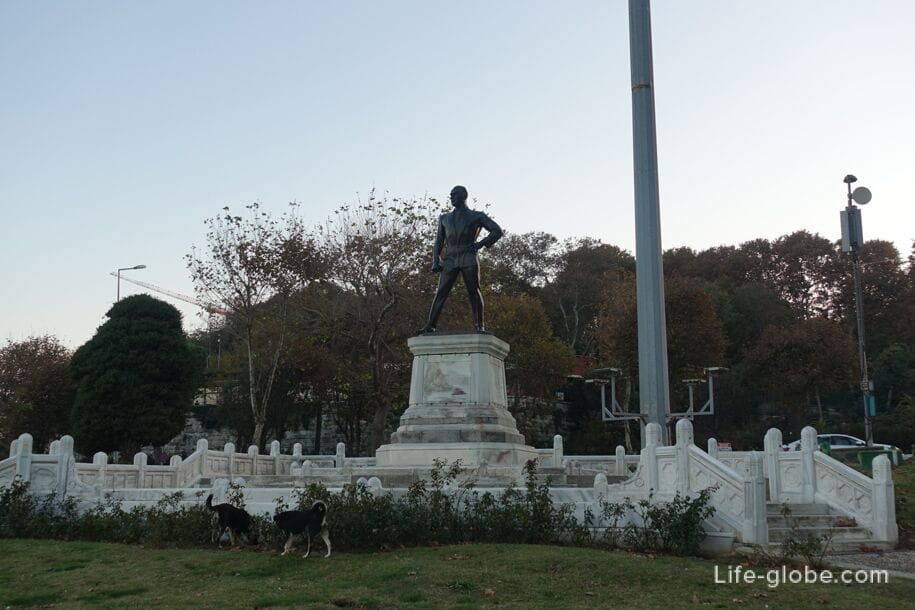
!!! Near the northwestern outskirts of the Fatih district is the famous Panorama 1453 Museum (Panorama 1453 Tarih Muzesi) - a history museum with a large panoramic painting depicting the conquest of Constantinople. The museum's website: panoramikmuze.com .
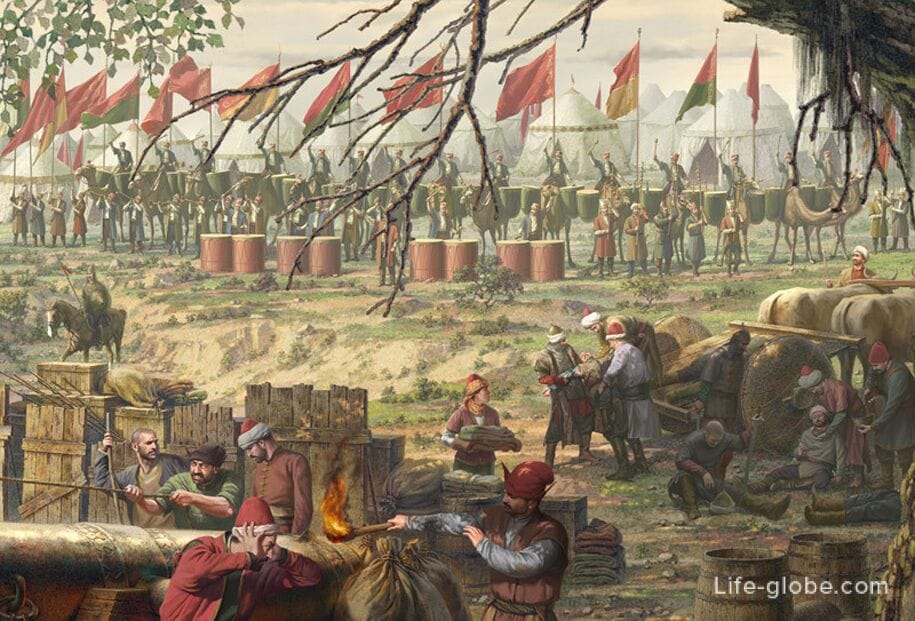
The Fatih area can be reached by public transport, car or taxi.
Buses, trams and metro run from public transport to and around the district.
There is a Marmaray train station in the area.
In addition, ferries run from the ferry berths of the district, both through the Golden Horn and the Bosphorus in Istanbul, and outside the city - to other cities in Turkey (Yalova, Bursa, Bandyrma).
Istanbul ferries are public transport (Istanbul transport cards are valid).
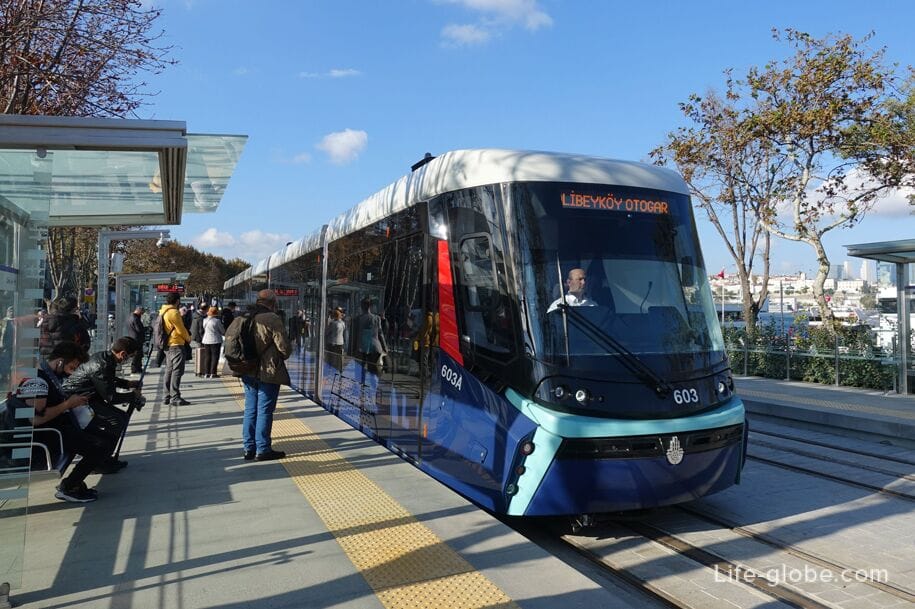
You can also visit the Fatih district by taking a tour on the Istanbul Hop-On Hop-Off tour bus.
There are tickets for 1, 2 or 3 days.
In the Fatih area, buses make stops near the Galata Bridge and Sultanahmet Square (near the Hagia Sophia Mosque).
Tickets for the Istanbul sightseeing bus can be purchased here →
Some museums and sites in Istanbul, including those located in the Fatih district, have museum and tourist maps.
There are different types of maps in Istanbul. Some of which give the right to visit certain museums, while others, in addition to the main museums, include excursions, as well as some shows and entertainment, public transport rides and discounts on airport transfers.
The classic and most common is the museum card "Museum Pass Istanbul" (Museum Pass Istanbul), which gives the right to enter some museums of the city. There are also more extended Istanbul E-Pass and Istanbul Tourist Pass cards, which give the right to visit museums, attractions, guided tours, an aquarium, shows, cruises along the Bosphorus, trips outside the city, etc.Learn more about museum and tourist maps of Istanbul...
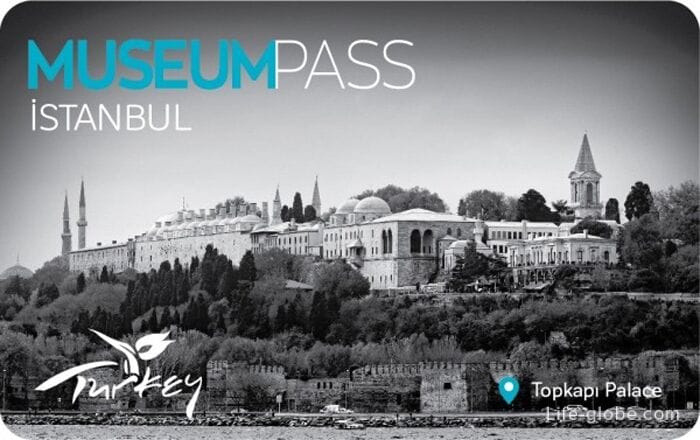
In the Fatih area there is a large selection of accommodation facilities, ranging from 5-star boutique hotels with panoramic terraces and apartments (full-fledged apartments with all amenities), ending with budget guest houses and hostels.
All accommodation facilities in the Fatih area can be viewed and booked here
